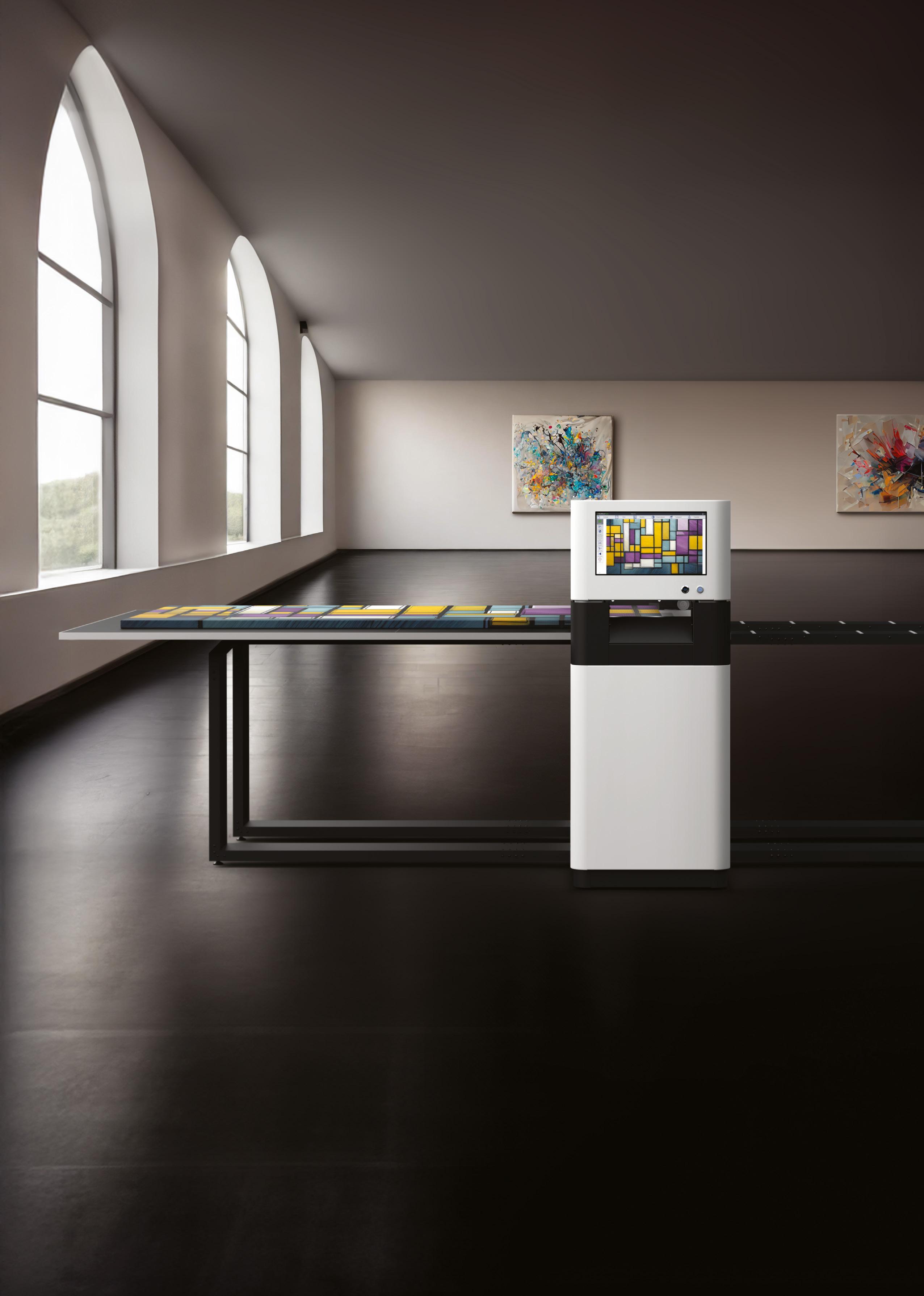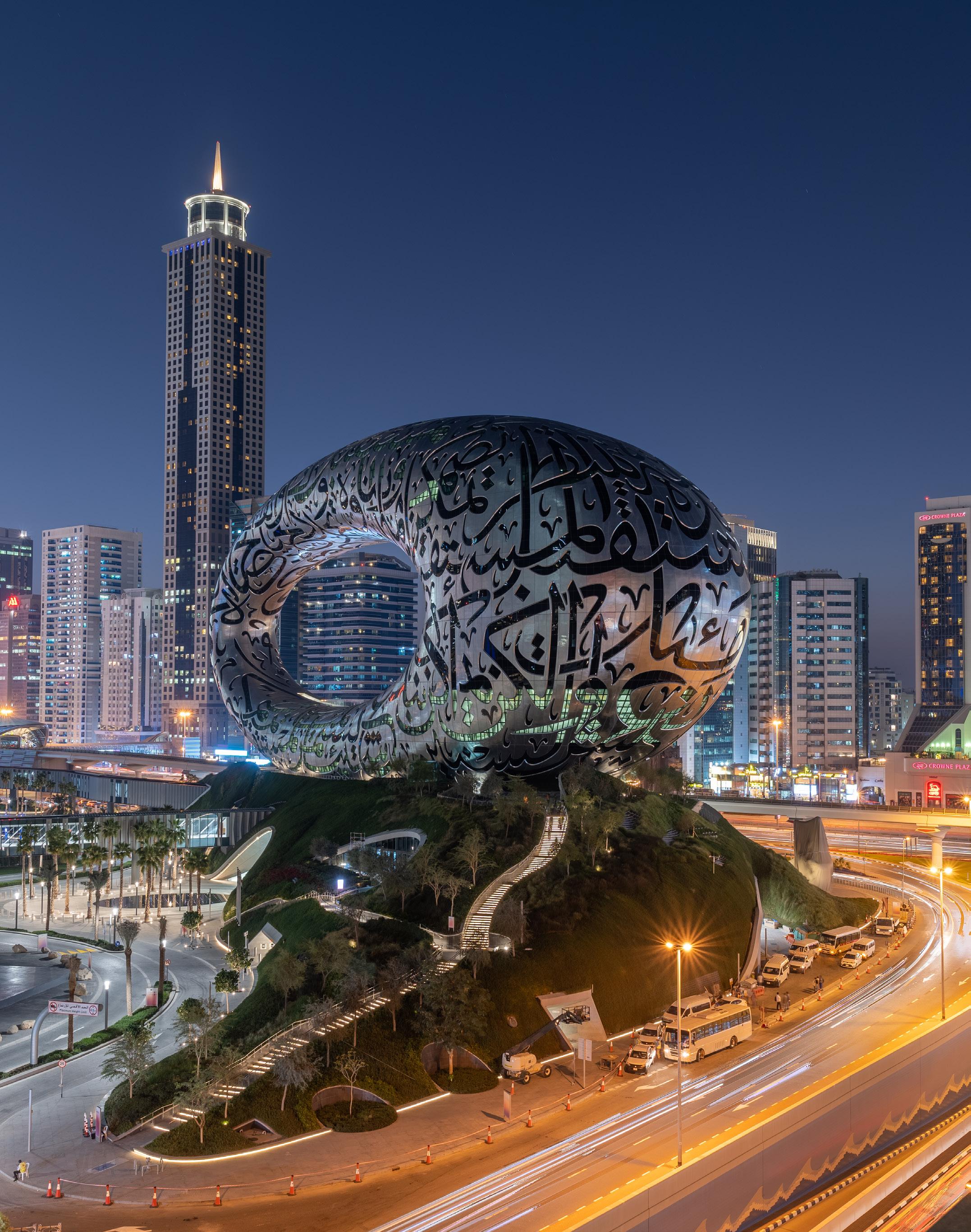

Table of contents – Museums
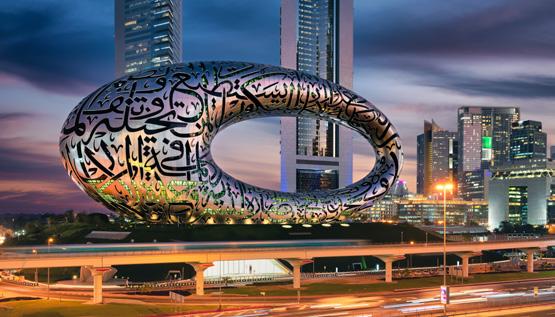
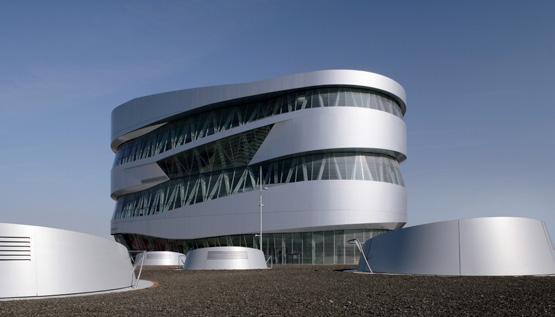
Museum of the Future Dubai, United Arab Emirates
The Mercedes-Museum Stuttgart, Germany
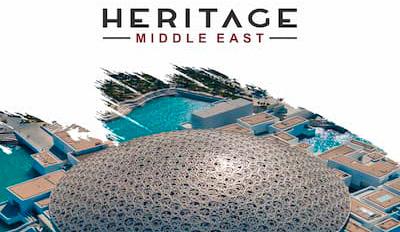
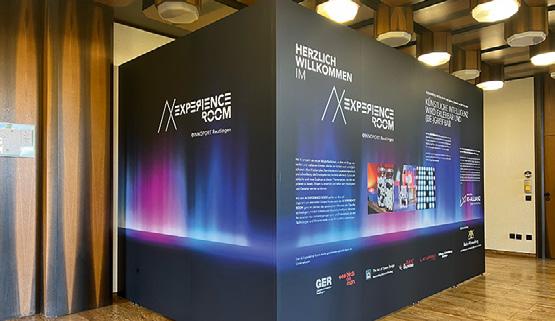
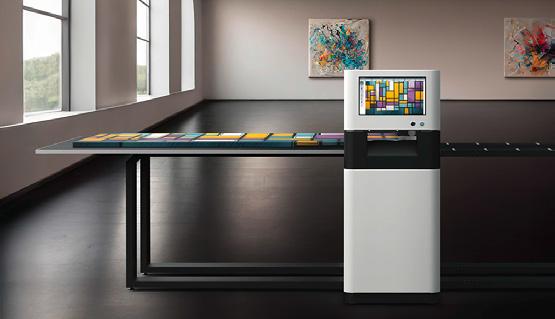
museum.com
Sinserstrasse 67 6330 Cham SWITZERLAND
magazine@museum.com Tel. +41 41 5102688
About the global museum project
From 2025, museum.com will function as a global museum database in which museums can enter their content directly via a personal login. Membership is free of charge. In addition, museum.com offers the independent creation and operation of audio guides, which are created with the help of artificial intelligence.
The portal is accompanied by the MAGAZINE MUSEUM.COM, which covers current topics from the museum world.
For publication inquiries or media data, please contact us by e-mail - we will be happy to send you all the information you need. Publication in the current issue is possible at any time, as there is no fixed editorial deadline.
Heritage Middle East Abu Dhabi, UAE
MBA-Design & Display Produkt Reutlingen, Germany
Image Access | ART SCANNER Wuppertal, Germany
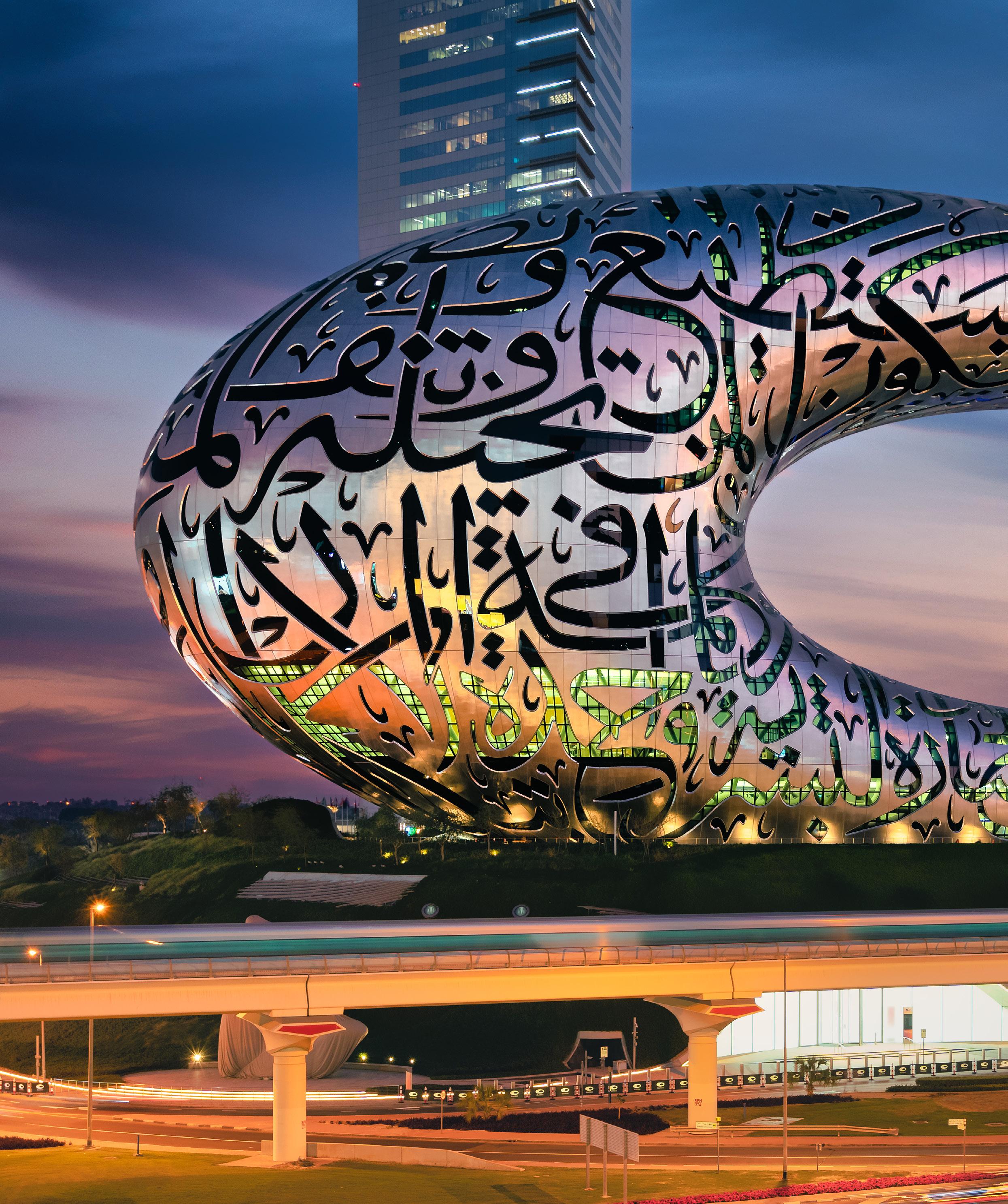
The Museum of the Future is the first museum of its kind. Built to transform the very perception of the future as we know it, the unique structure has become home to several immersive future environments that
aim to position visitors in an empowering version of the future. Through distinctive themes, it elicits a world we thought we could only experience 50 years from now. Visitors become active participants in an
expansive experience that taps into all five senses. By meaningfully merging aspects of science, technology and spirituality, the museum inspires humanity to re-imagine the future and all its possibilities.
Photo: © Museum of the Future
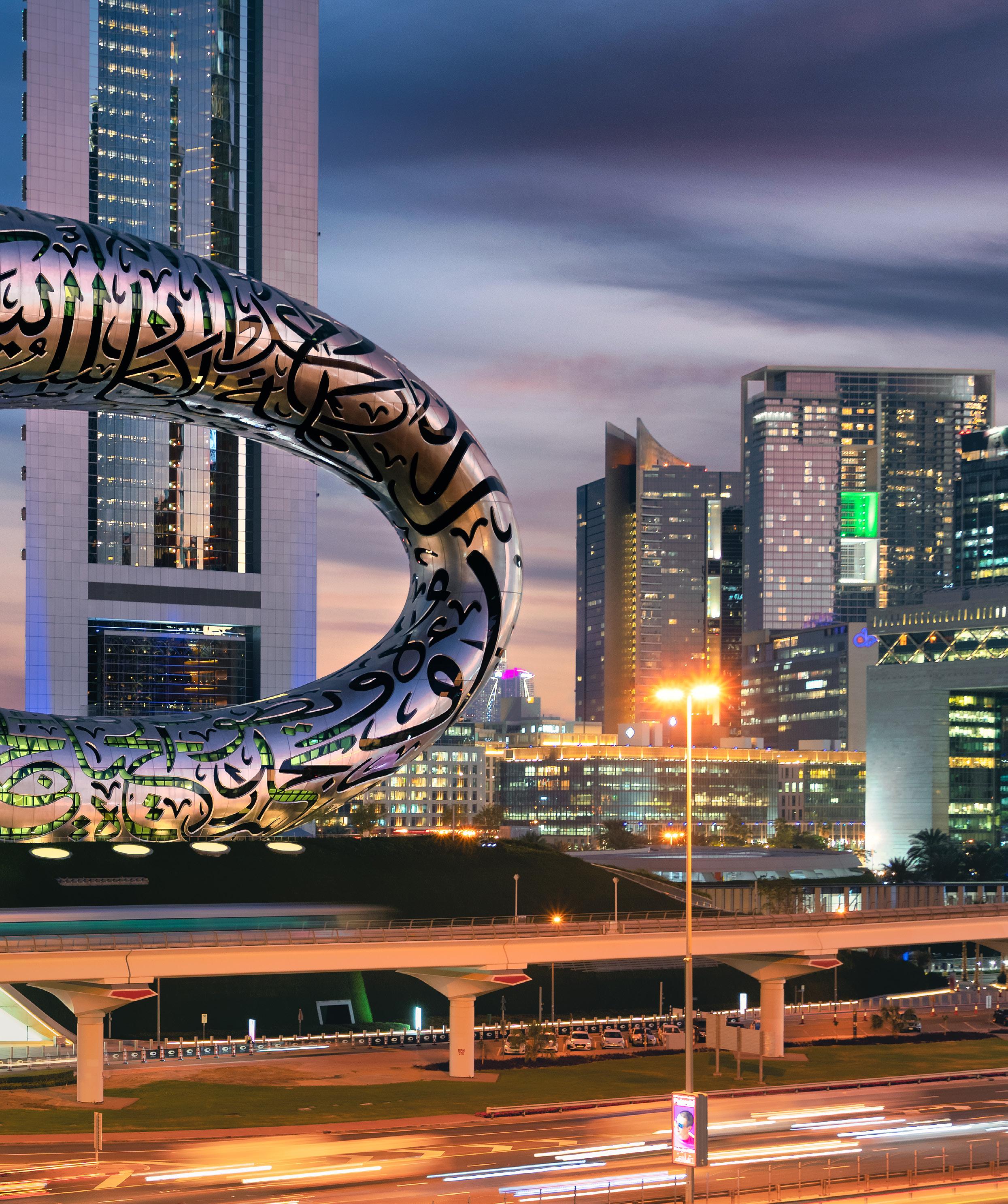
One of the most complex and ambitious projects ever executed, with an instantly iconic inimitable exterior. Rising 77-metres above the ground and comprising 1,024 unique stainless steel composite panels,
Museum of the Future
Dubai, United Arab Emirates
quotes
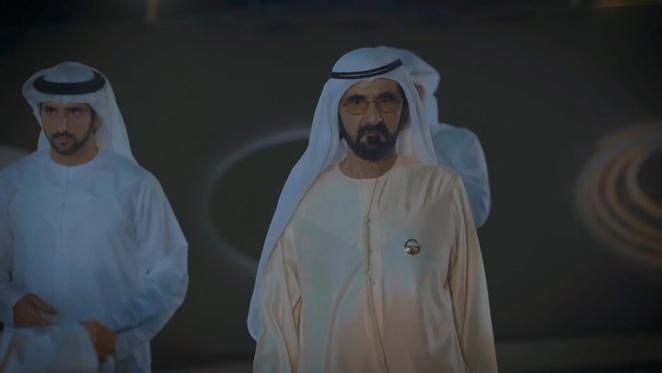
the façade is adorned in Arabic calligraphy, displaying three
written by His Highness Sheikh Mohammed bin Rashid Al Maktoum, Ruler of Dubai.
Audio
A New Paradigm for Museums: Living, Evolving, and Future-Oriented
Unlike traditional museums that focus on preserving artifacts from history, the Museum of the Future embodies the concept of a “living museum.” Its mission is dynamic: to showcase humanity’s potential for innovation while exploring the critical questions of our time. Through exhibitions, research initiatives, and immersive experiences, the museum fosters dialogue about advancements in artificial intelligence, robotics, biotechnology, and sustainable development. The museum is structured as a hub of intellectual exchange. It is not just a space for observation but a laboratory for experimentation and collaboration. By bringing together global experts, researchers, and policymakers, it acts as a think tank where solutions to pressing global challenges are ideated, tested, and refined.
An Architectural Marvel: Engineering the Impossible
The Museum of the Future is not only a center for innovation – it is itself a technological and architectural achievement. Rising to a height of 77 meters, the structure
was designed using parametric modeling, an algorithm-driven process that allows engineers to optimize complex designs with precision. The building lacks internal columns, a remarkable feat of engineering that creates an uninterrupted interior space for exhibitions and gatherings.
The façade of the museum is an extraordinary work of art, comprising 1,024 unique stainless steel panels. This number was not chosen arbitrarily – it represents the kilobyte, the foundational unit of digital information storage. Each panel, crafted with the aid of robotic arms, is a testament to the symbiosis of human creativity and robotic precision. Together, the panels span 17,600 square meters, making the exterior both a visual and symbolic representation of the museum’s focus on digital and technological innovation.
Embedded within the façade is Arabic calligraphy rendered in 14 kilometers of LED lighting. These inscriptions, drawn from the inspirational words of HH Sheikh Mohammed bin Rashid Al Maktoum, convey the museum’s ethos: a commitment to innovation, creativity, and the transformative power of human ingenuity.
Symbolism in Design: Bridging Philosophy and Innovation
The museum’s striking design is rich in symbolic meaning. Its toroidal shape resembles a human eye, representing vision and foresight. The void at the center of the structure is equally meaningful – it symbolizes the unknown, a realm of possibilities that humanity has yet to explore. This void underscores the museum’s mission: to probe uncharted territories in science, technology, and society. The green mound on which the museum rests symbolizes stability, grounding the futuristic structure in environmental consciousness. It is not merely aesthetic; the surrounding greenery and sustainable construction materials reflect Dubai’s commitment to balancing innovation with ecological responsibility.
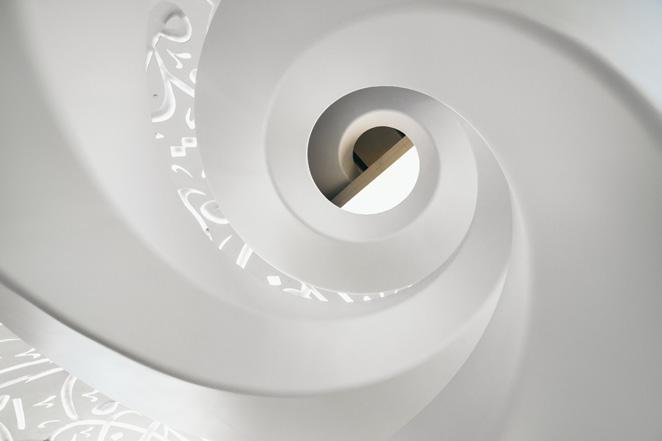
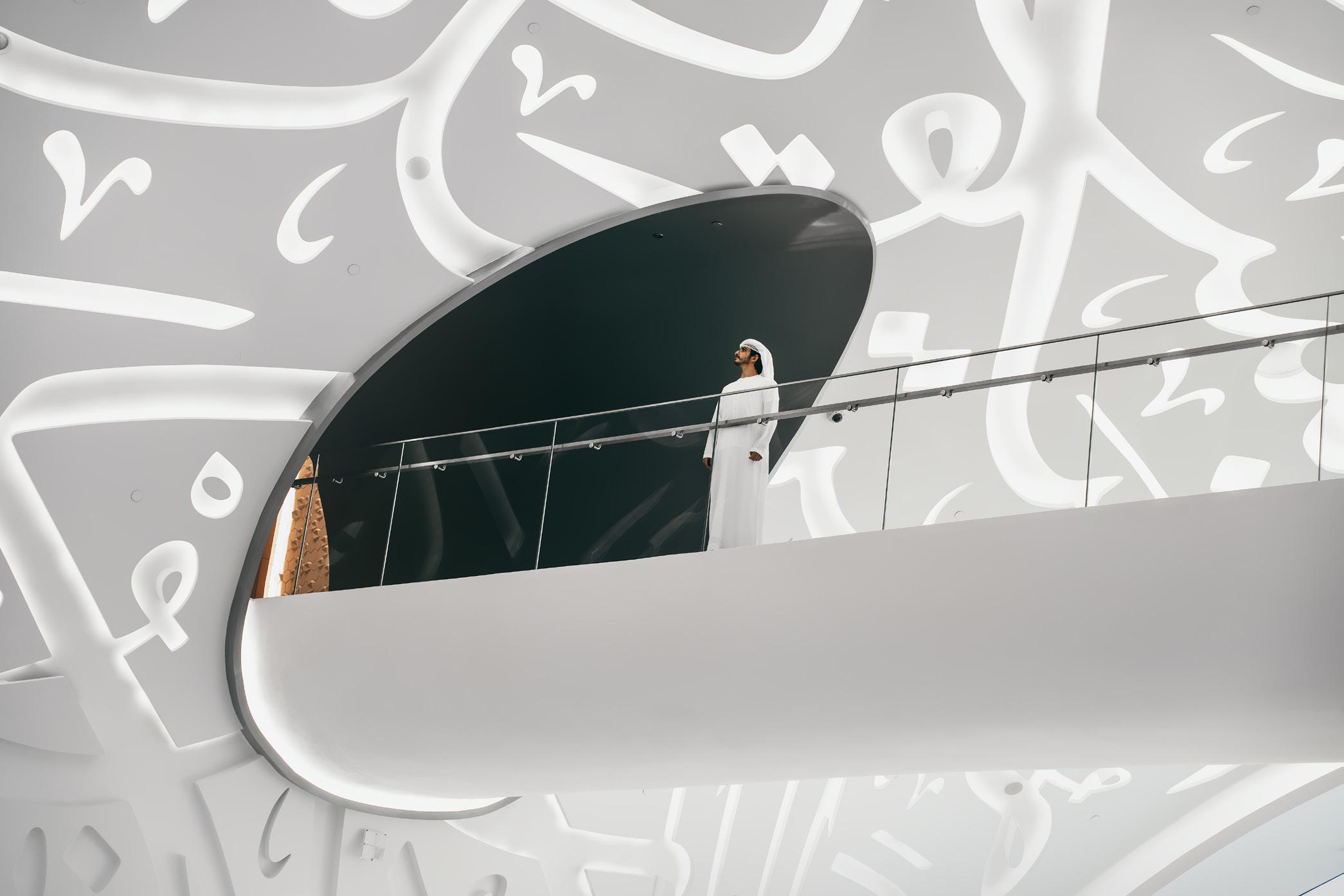
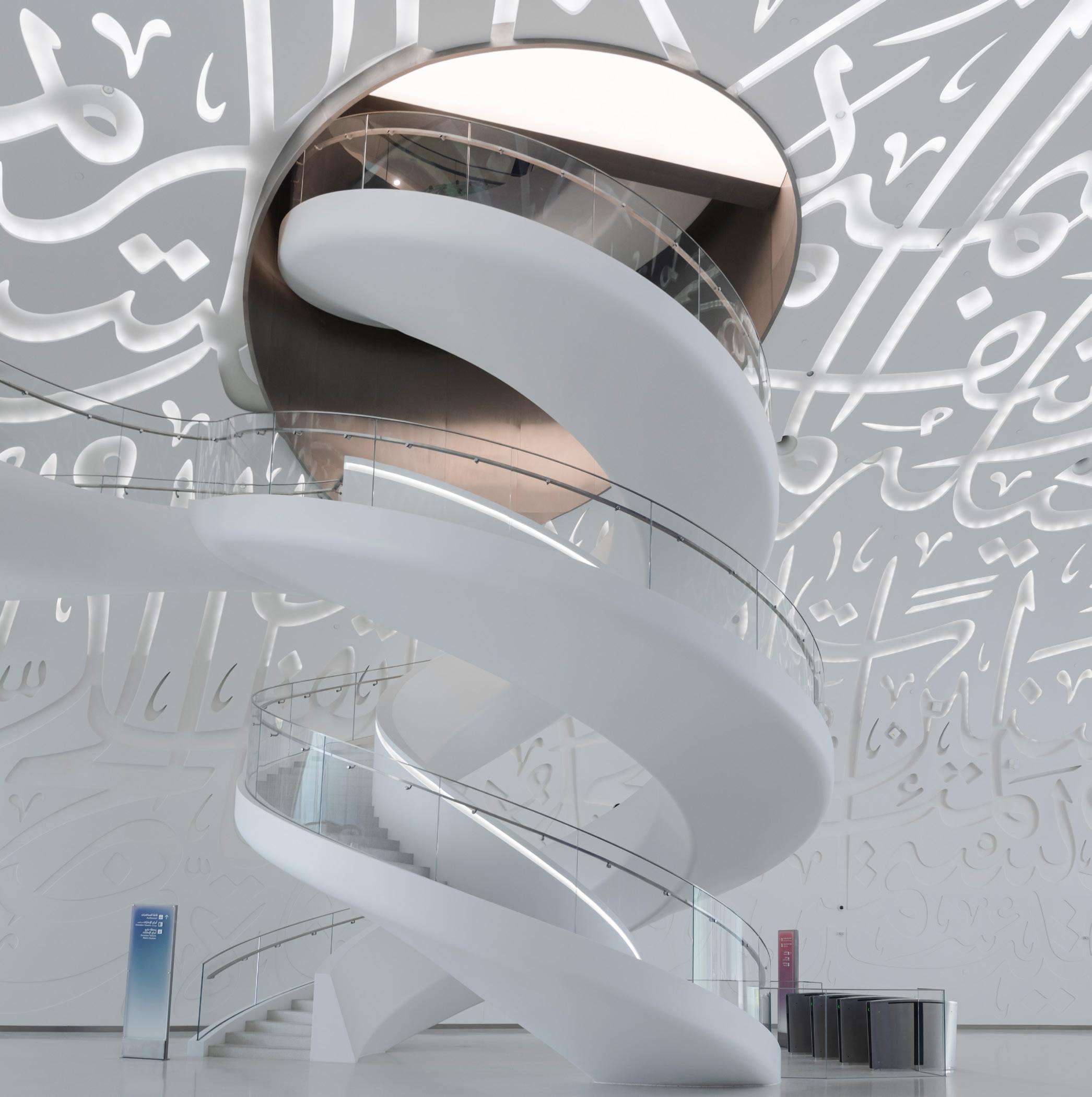
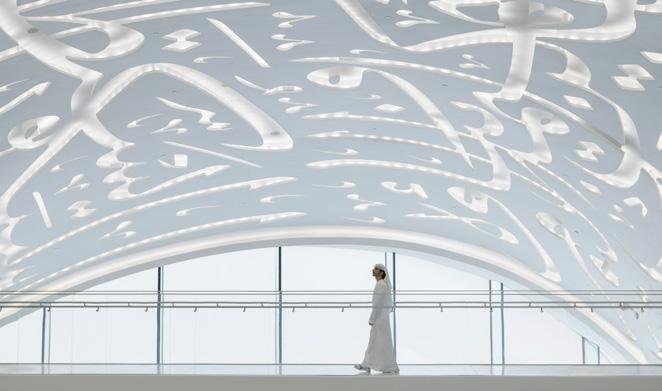
The Arabic calligraphy that adorns the façade carries profound philosophical weight. Each quote speaks to the human capacity for creation and innovation, positioning the museum as a continuation of the Arab world's historic contributions to science, mathematics, and culture during its golden age.
Scientific Contributions and Global Collaboration
The Museum of the Future is more than a showcase of futuristic ideas – it is a catalyst for scientific advancement and a global incubator of talent. By fostering partnerships with leading universities, research institutions, and technology companies, the museum serves as a nexus for interdisciplinary research. Its initiatives aim to address some of humanity's most urgent questions: How can artificial intelligence be ethically integrated into society? What are the urban planning strategies for climate-resilient cities? How can biotechnology extend and improve human life? A key
focus of the museum is to empower Arab scientists, researchers, and innovators. It seeks to reignite the intellectual brilliance that once defined the region, offering resources and platforms for bold ideas to flourish. Through workshops, conferences, and collaborative projects, the museum facilitates knowledge transfer and accelerates the pace of discovery.
Photos: © Museum of the Future
Audio
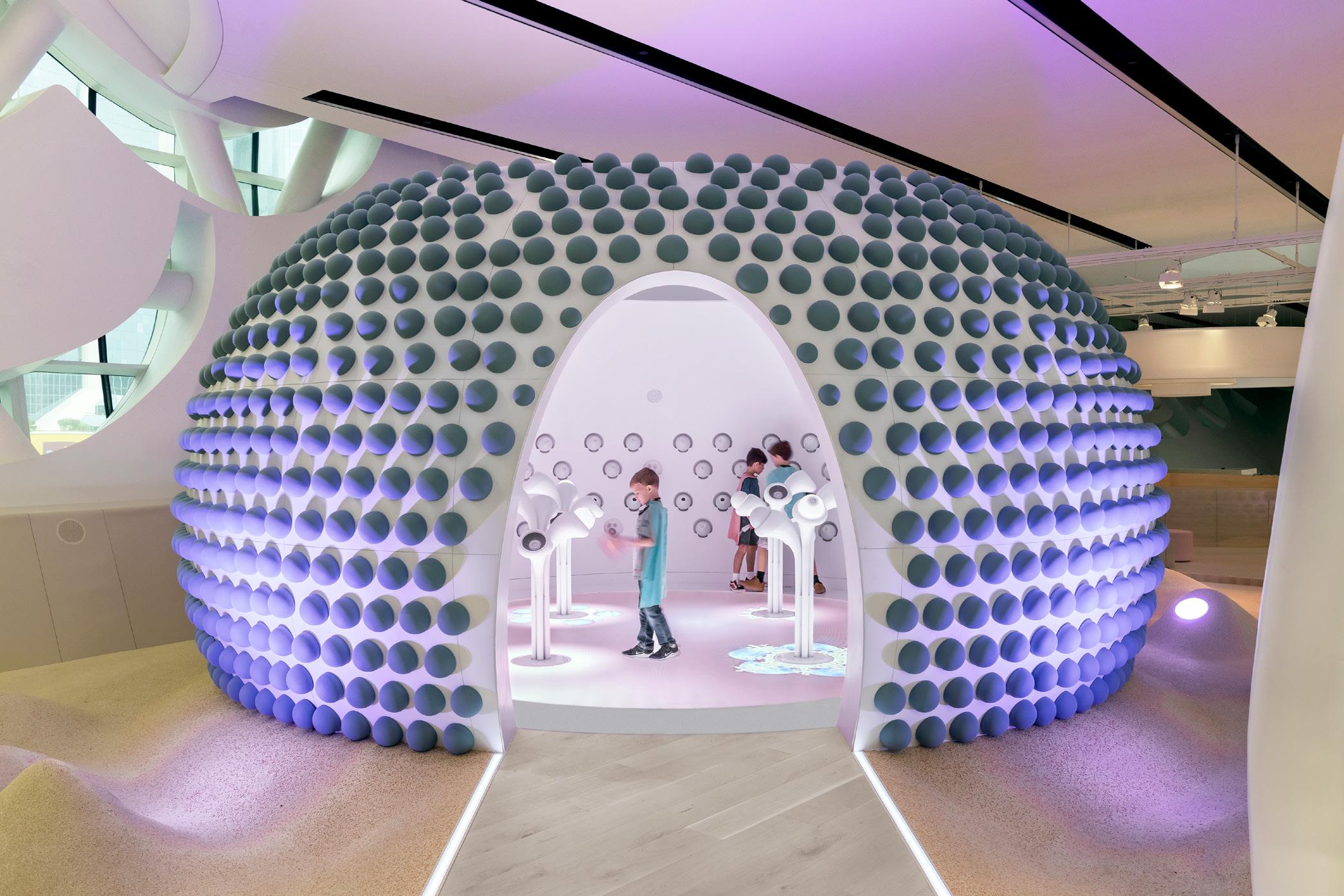
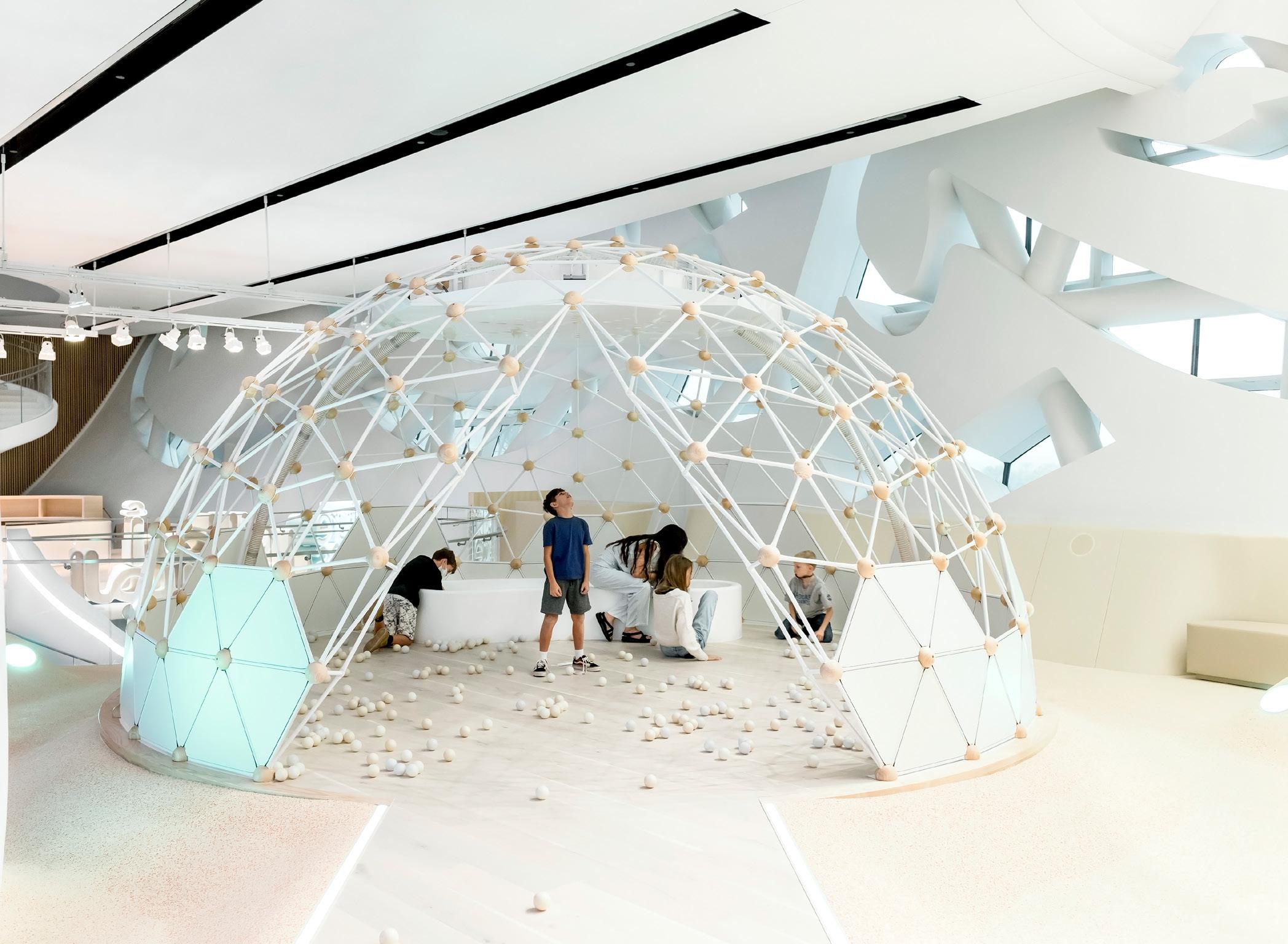
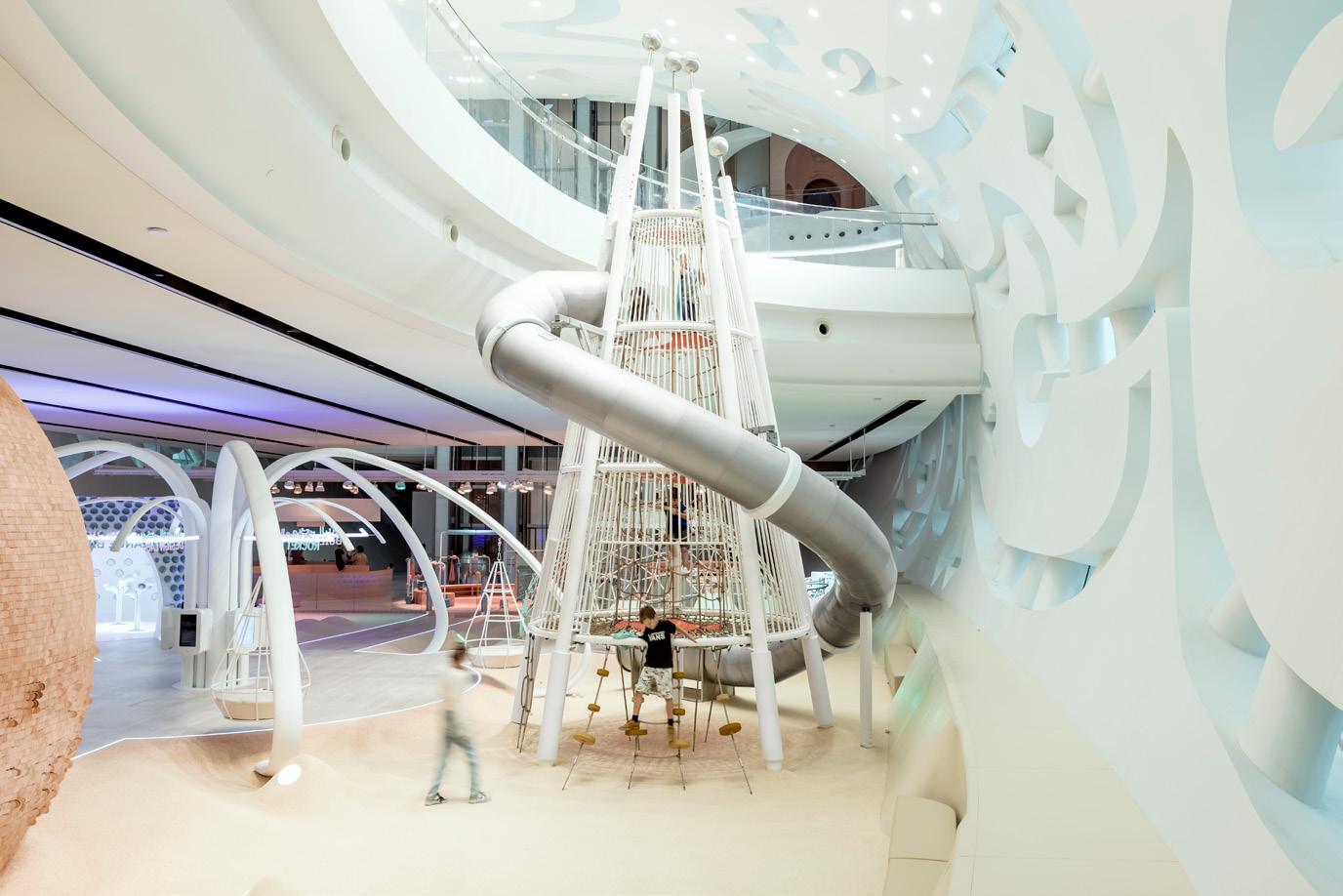
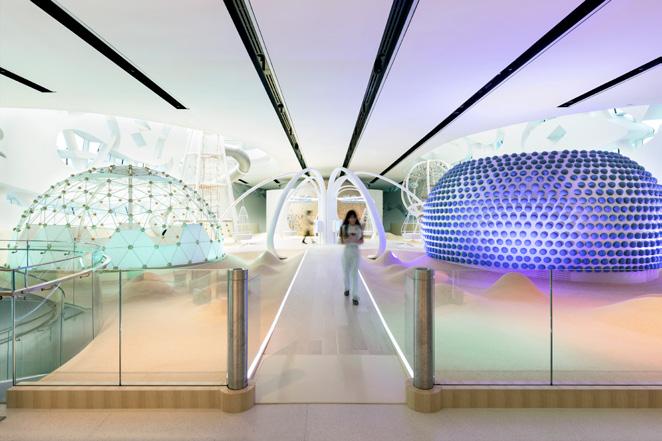
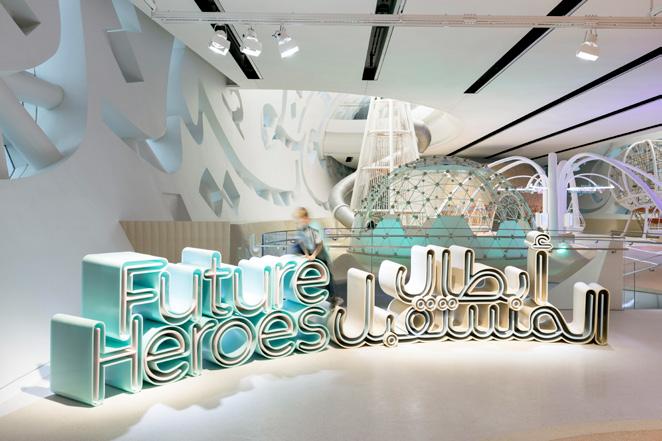
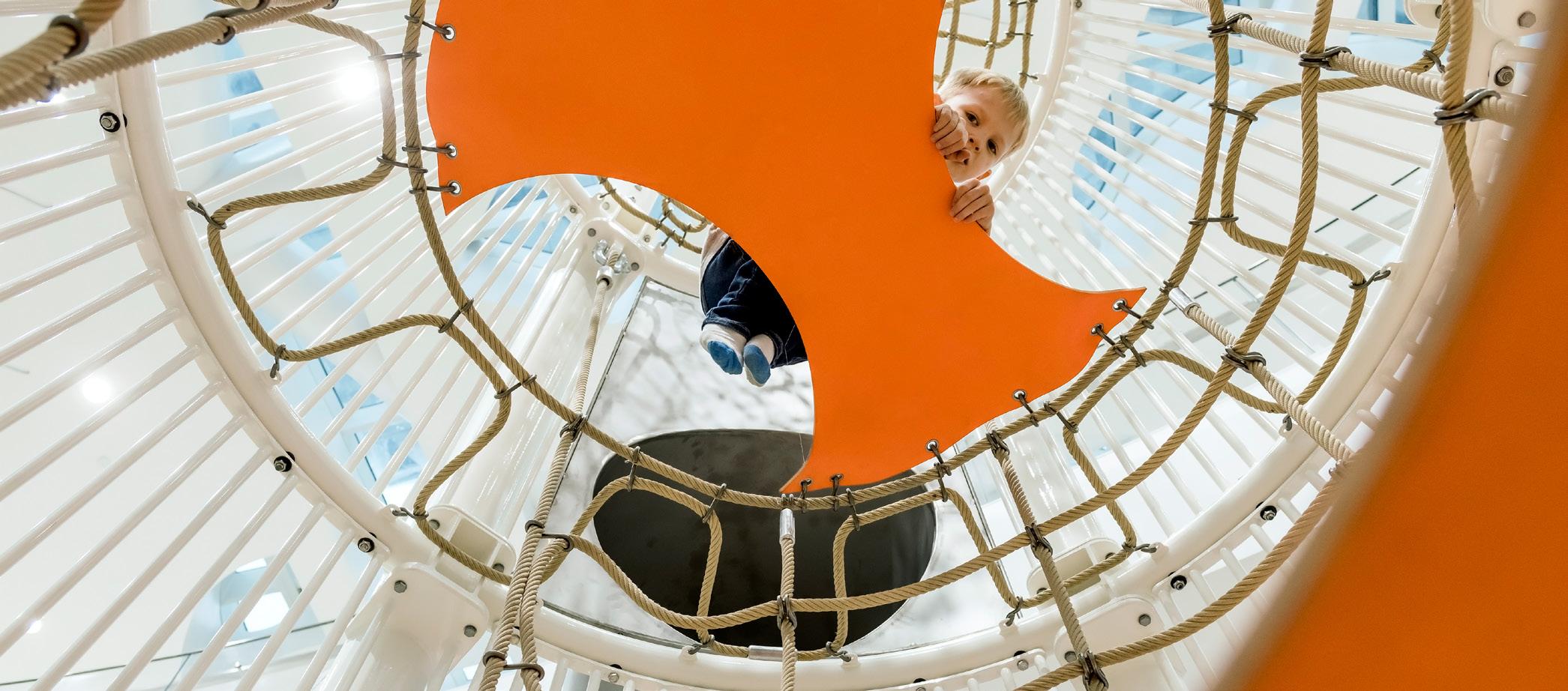
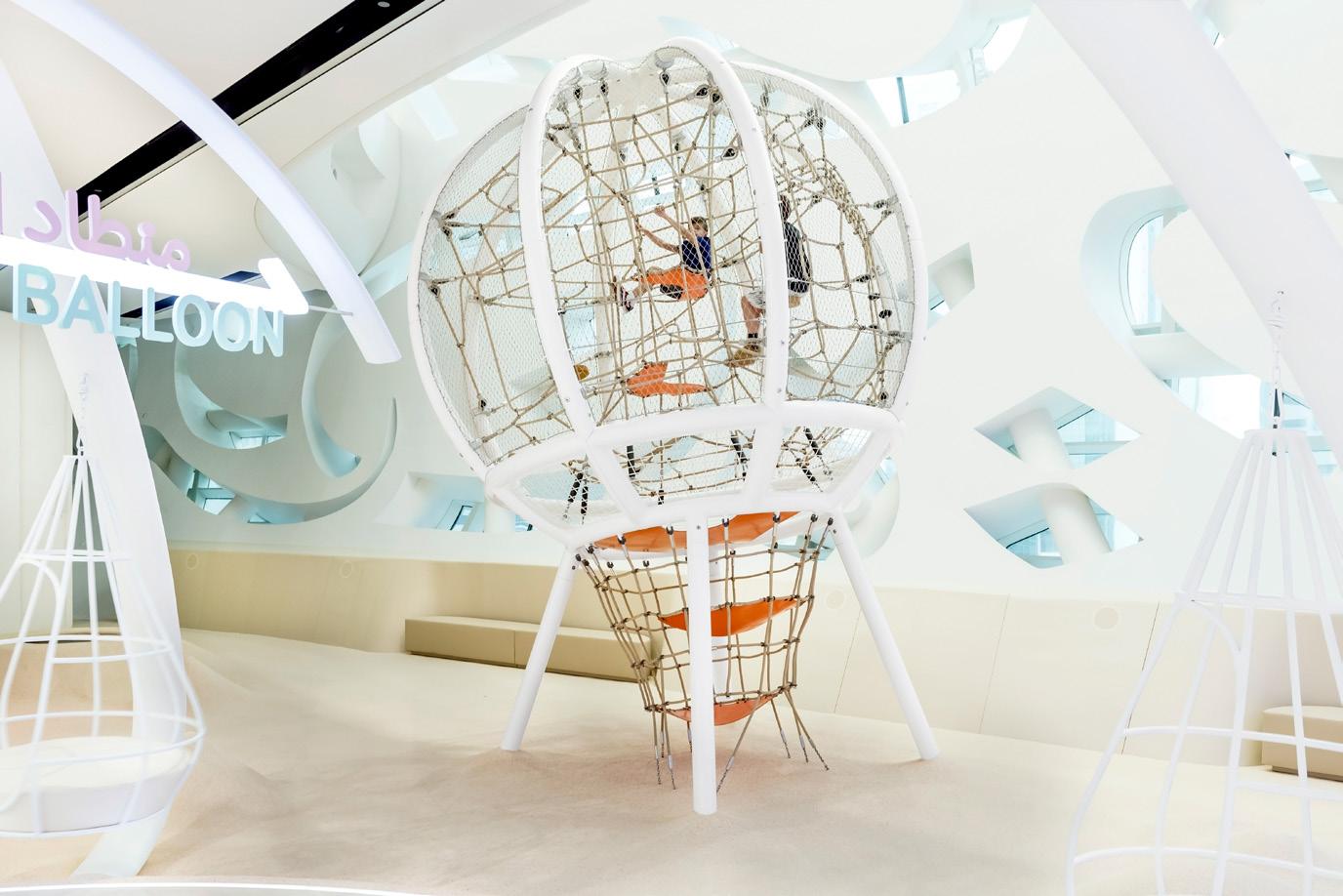
Future Heroes
Designed for children under the age of 10, Future Heroes encourages young minds to make new discoveries about themselves and the world around them. The Future Heroes floor includes a range of educational and fun activities centred around future-proof skills including curiosity, creativity, confidence, communication, and collaboration.
Photos: © ATELIER-BRUECKNER Giovanni Emilio Galanello Audio
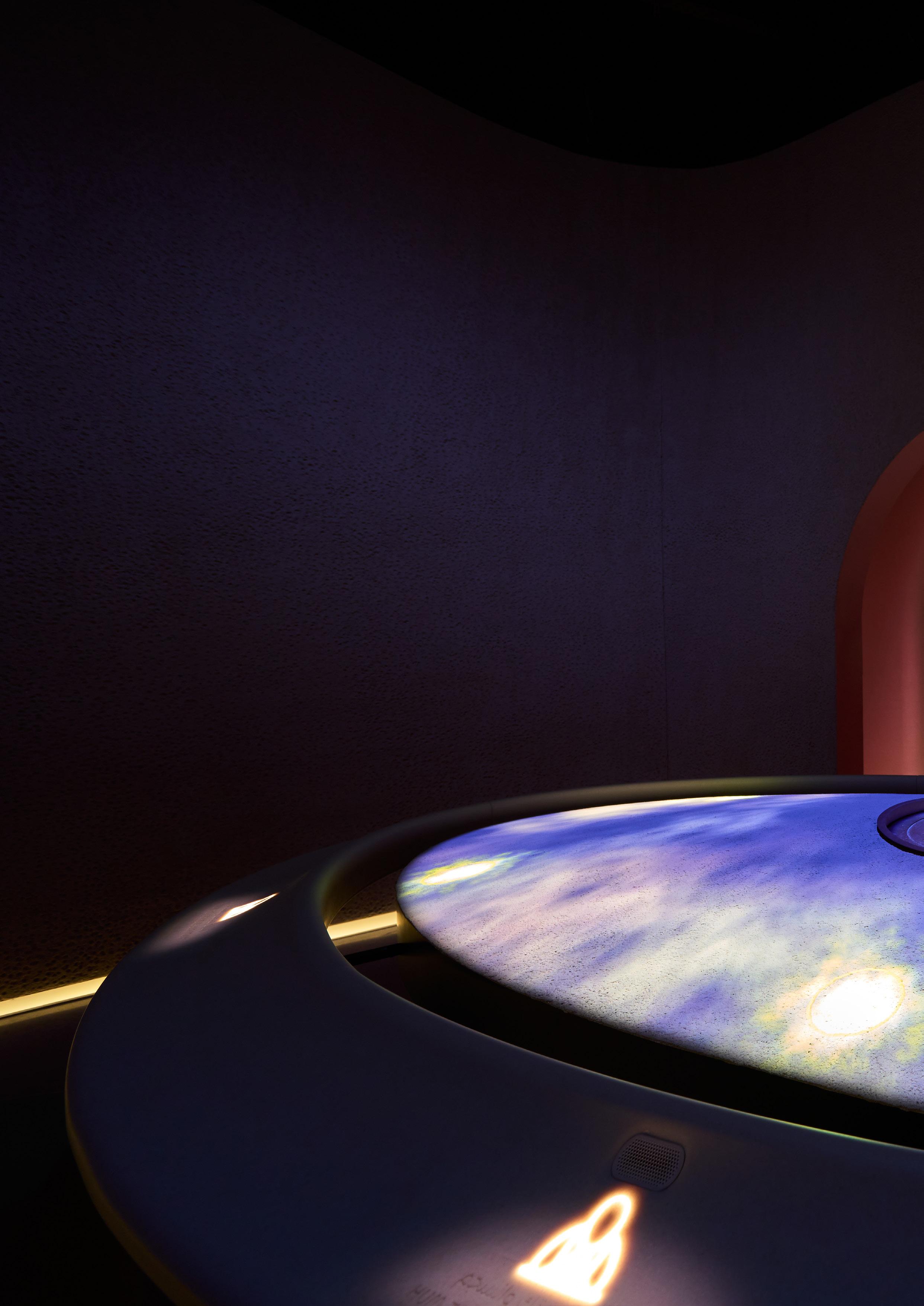
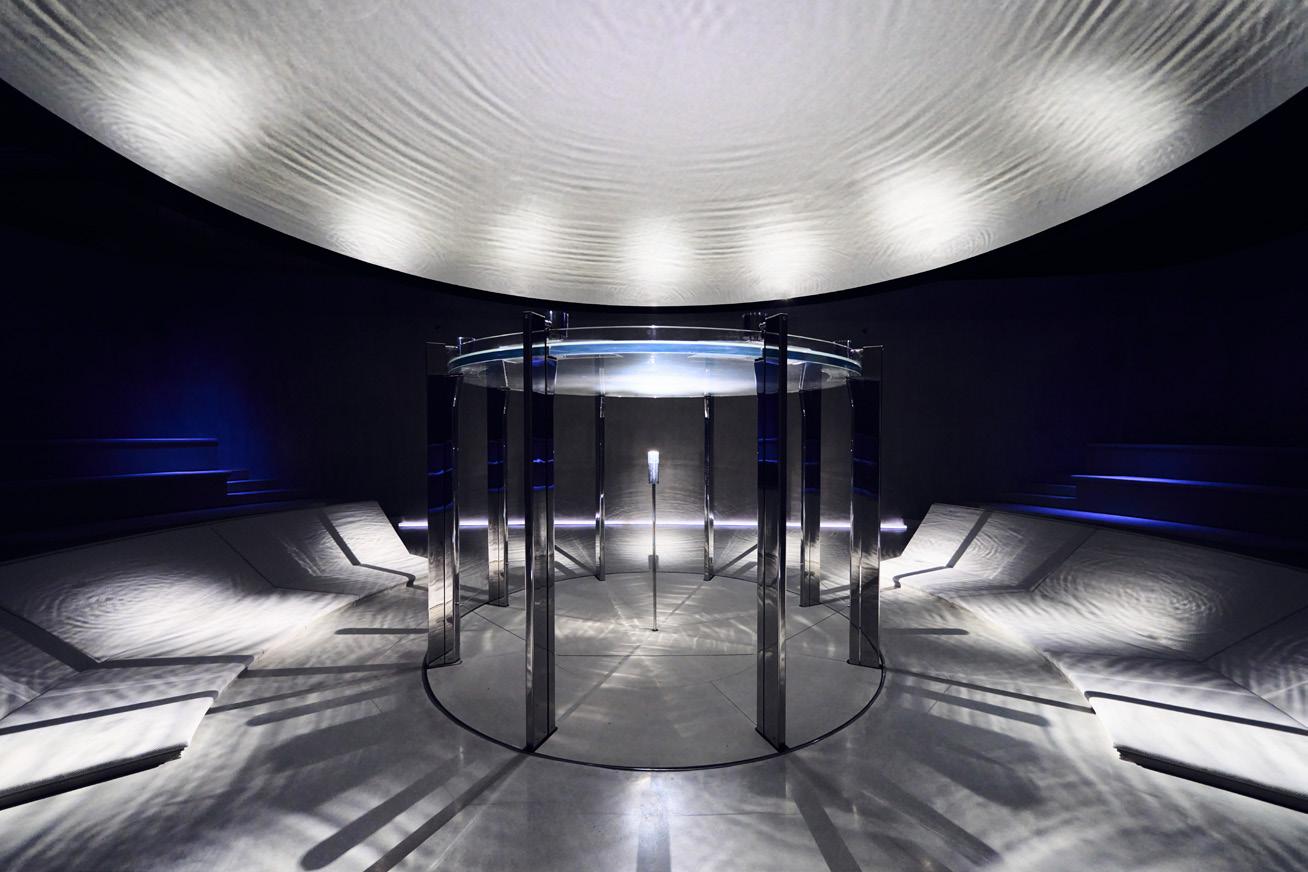
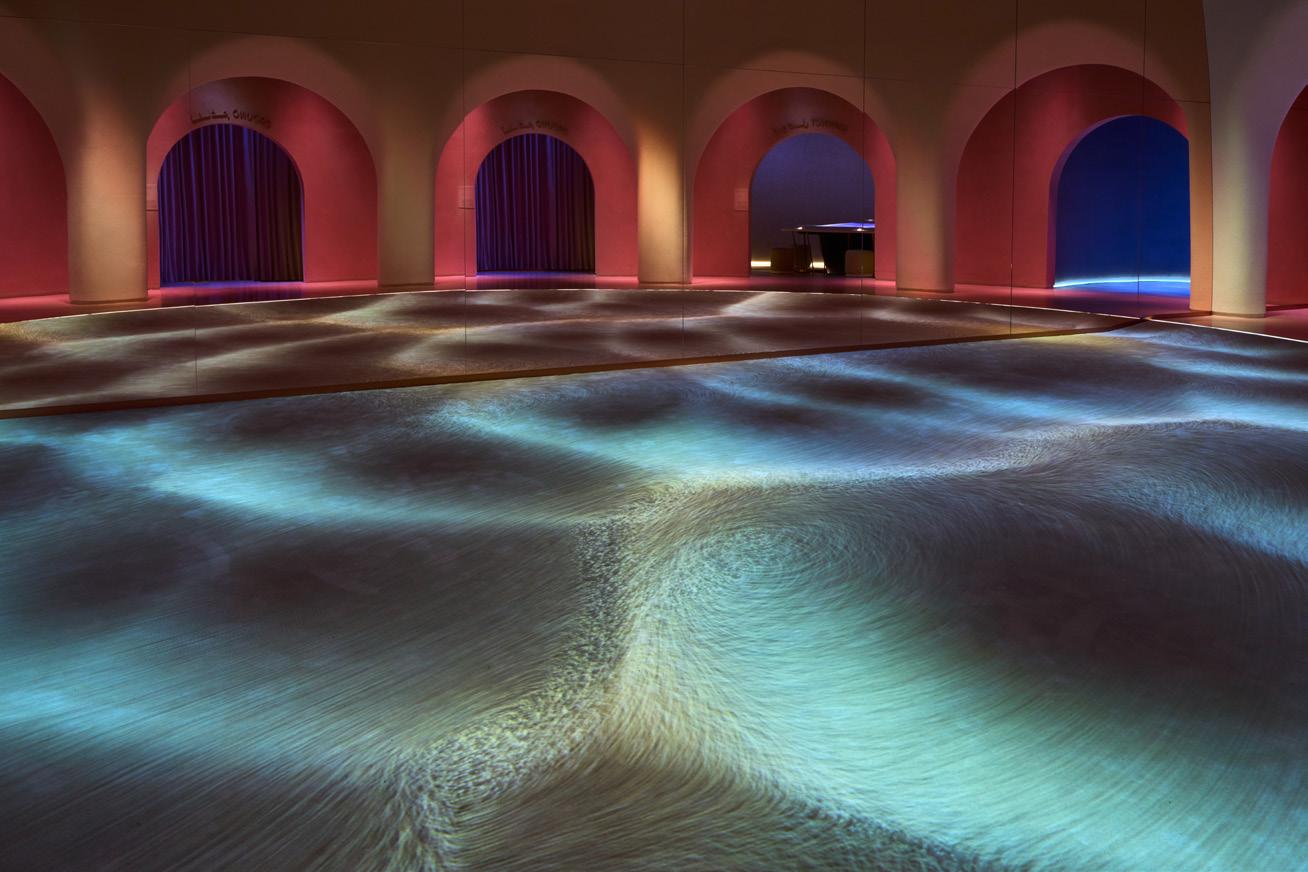
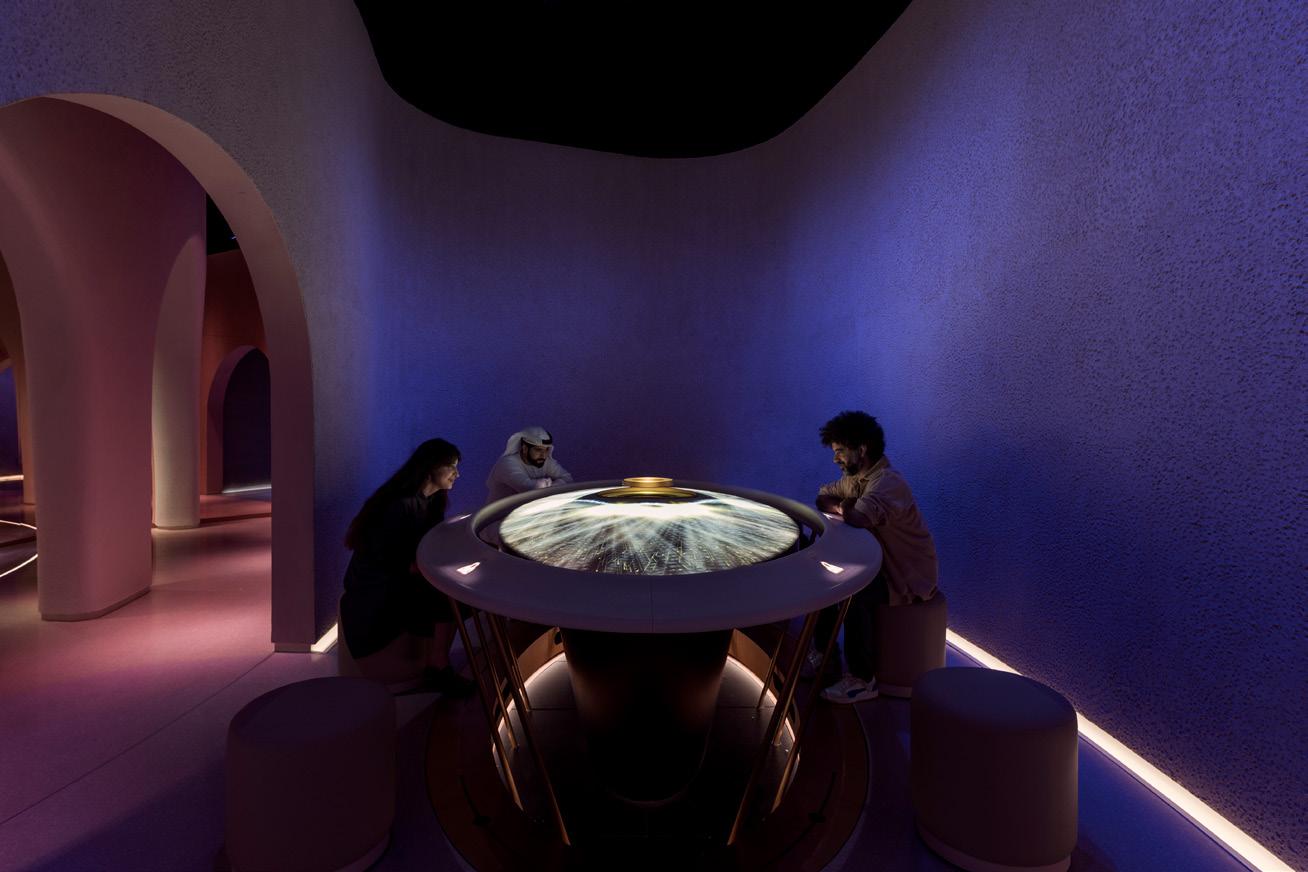
Al Waha
Al Waha is an opportunity for visitors to explore themselves in a world that stimulates their senses. Visitors embark on an intimate journey in an environment centred around health and wellbeing, where they can easily detach from technology. The surroundings help people to meditate, reconnect with themselves and restore natural balance.
Photos: © Museum of the Future
Photo below left: © ATELIER-BRUECKNER Giovanni Emilio Galanello
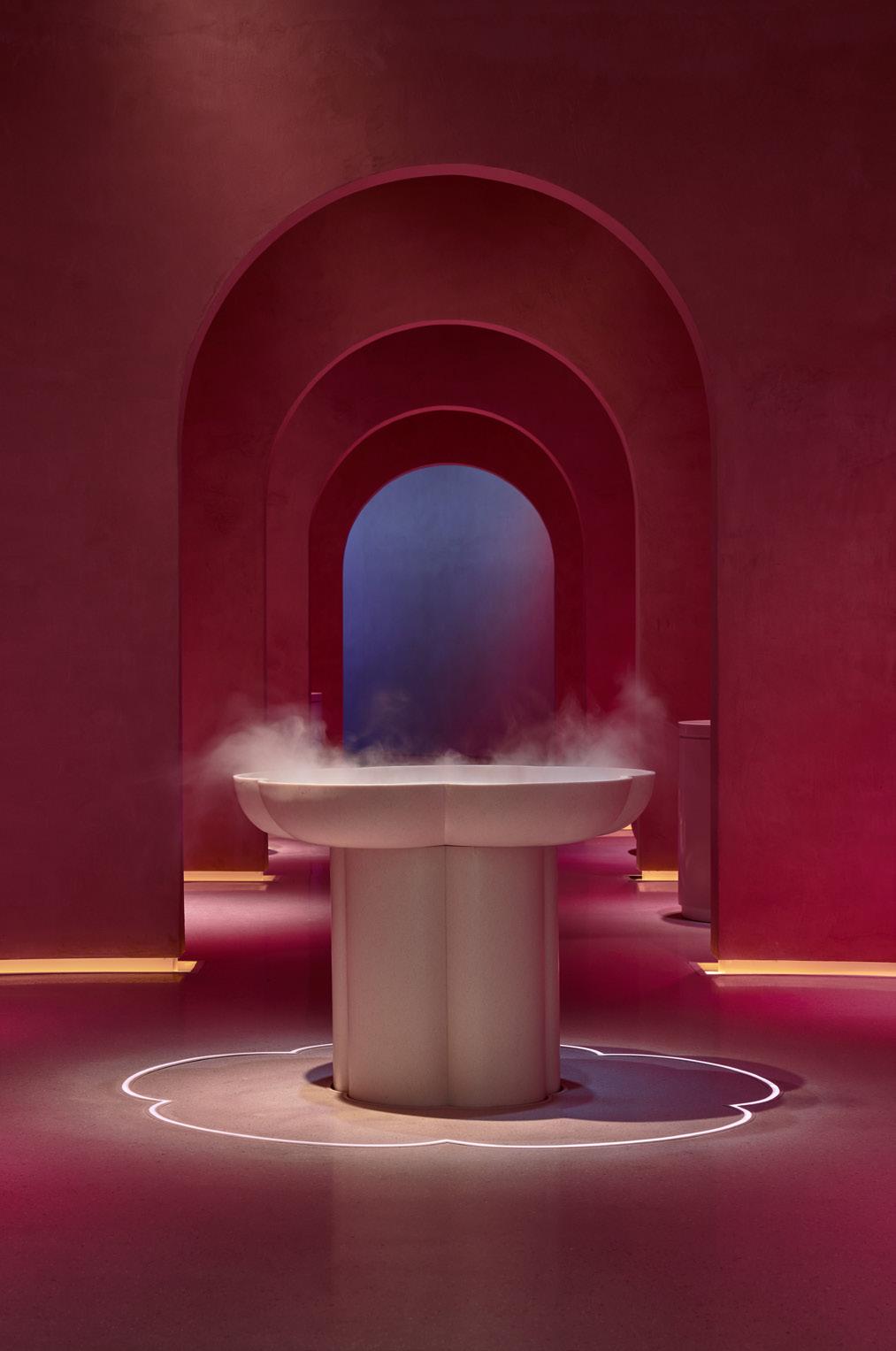
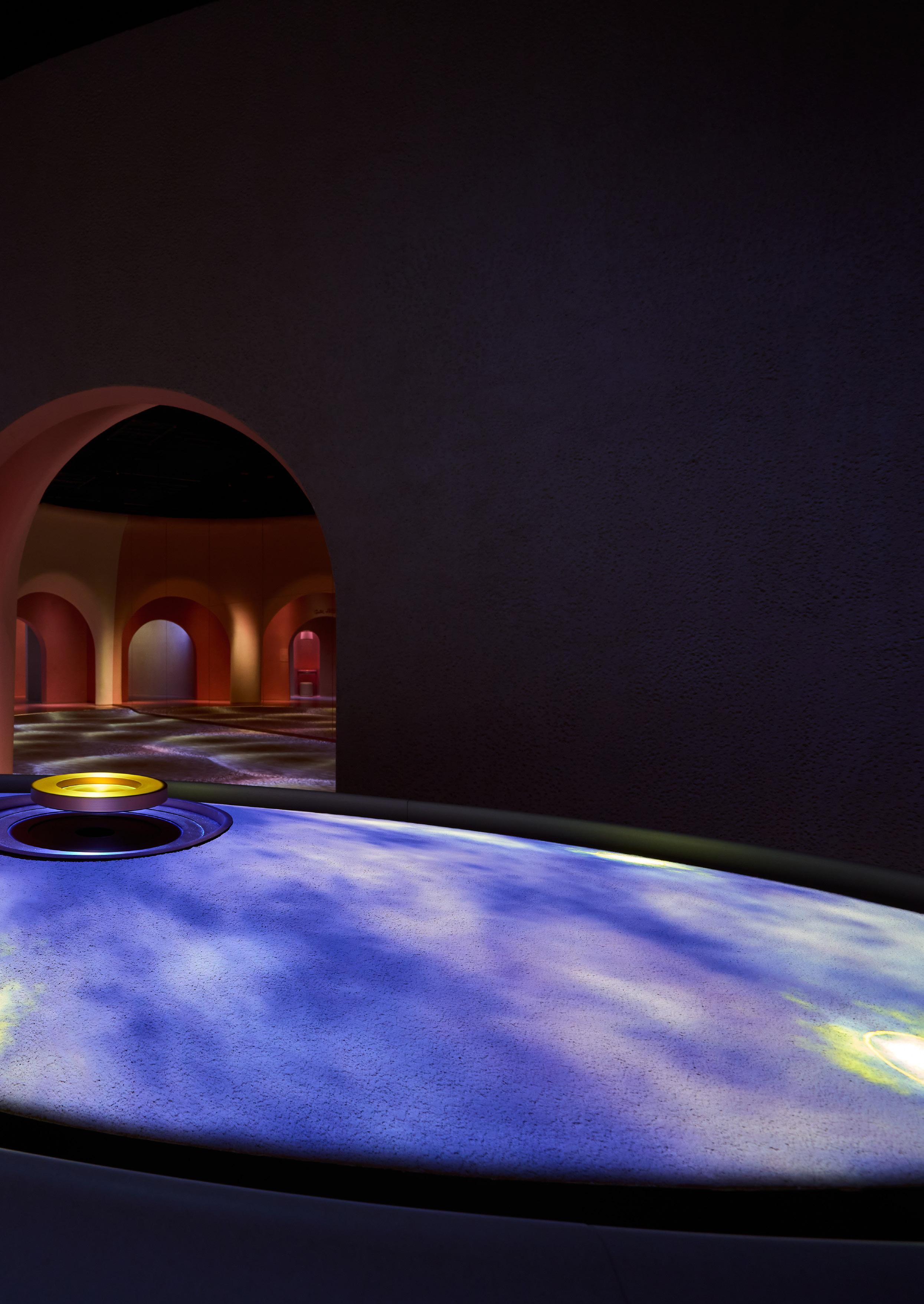
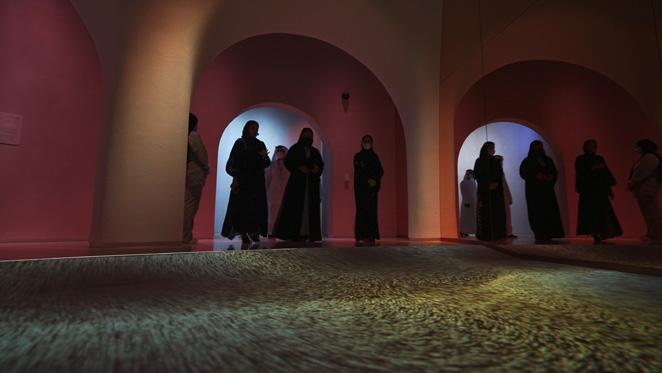
Audio
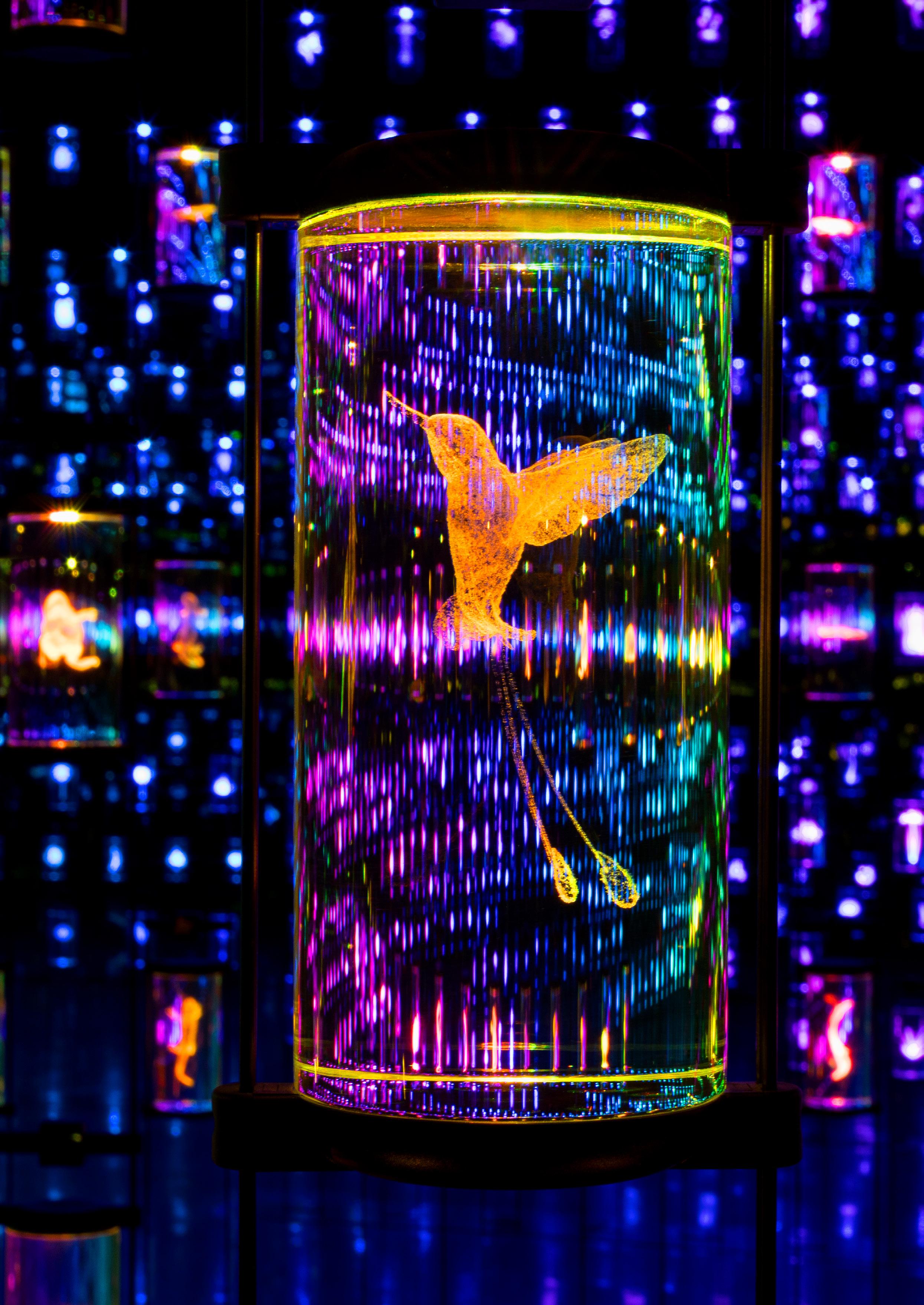

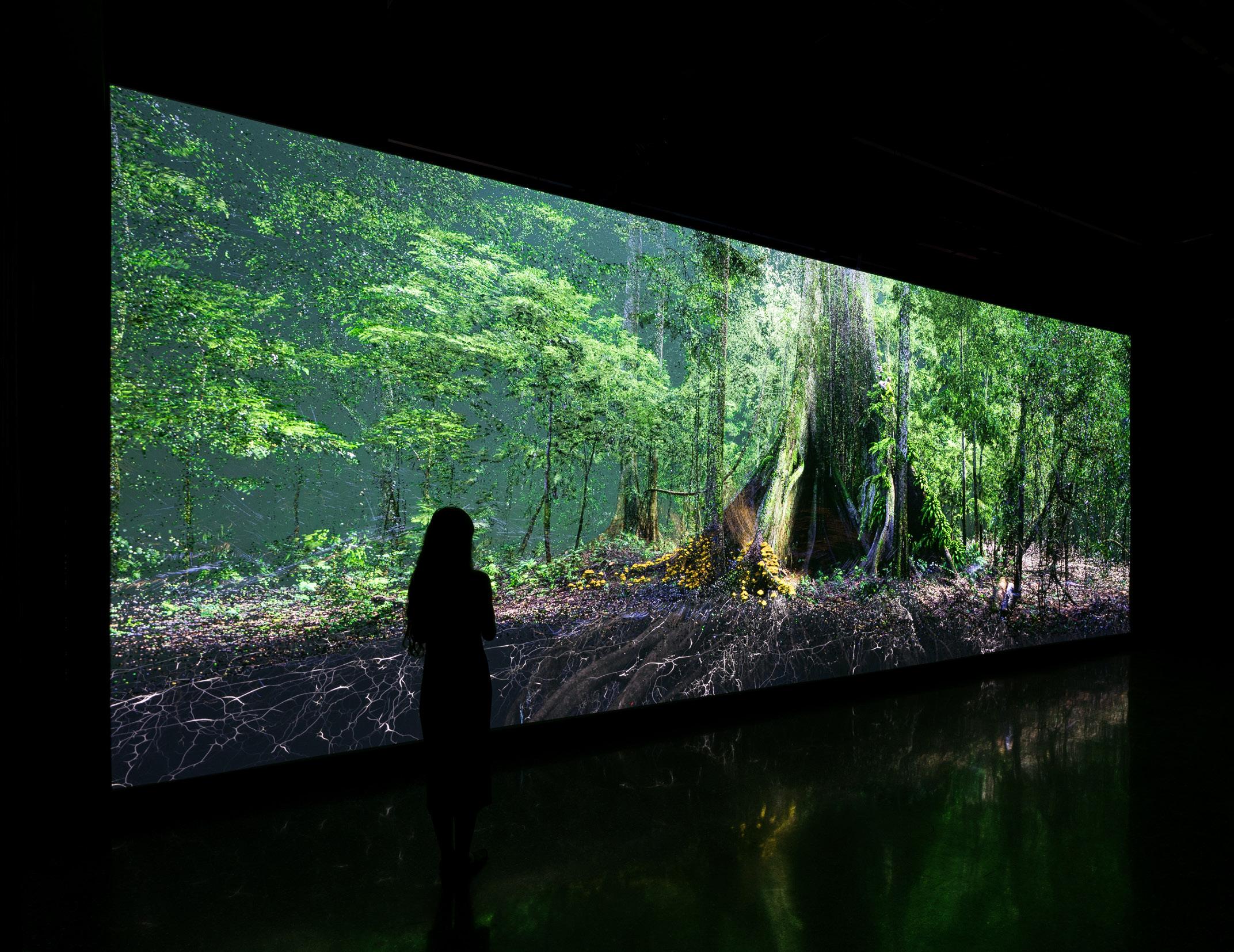
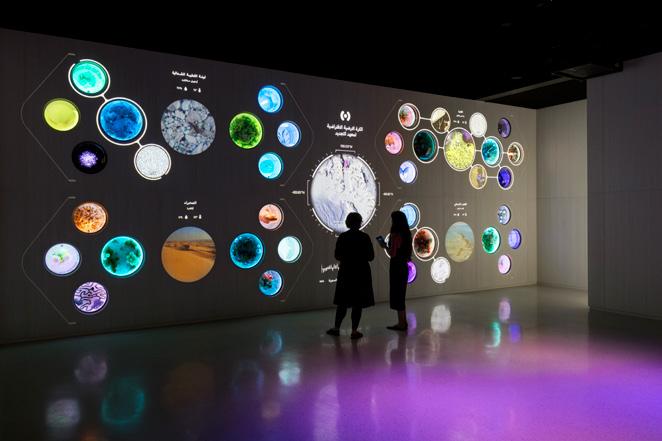
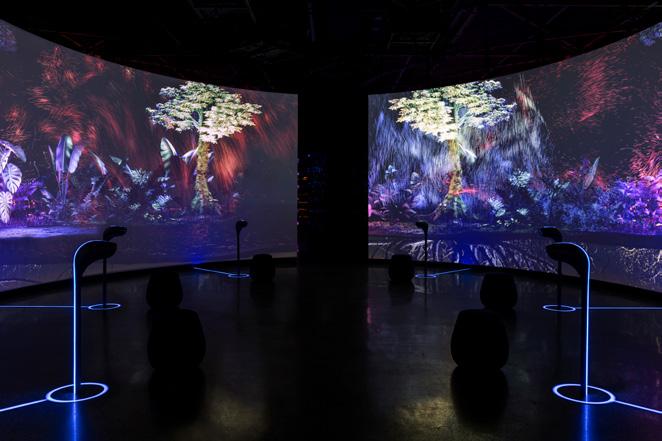
The Heal Institute
The Heal Institute offers an entirely novel projection of a luscious tropical rainforest. The forest is a digital recreation of a real part of the Amazon rainforest in Leticia, Columbia, depicting the ecosystem with unparalleled realism. The rainforest ecosystem simulator helps guests better understand nature and its responsibility towards it. Also, home to a library of over 2400 species, the Heal Institute introduces biodiversity like never before.
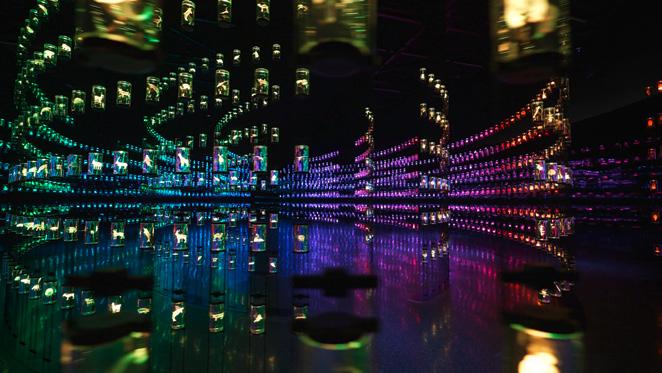
Photos: © ATELIER-BRUECKNER, Giovanni Emilio Galanello
Audio

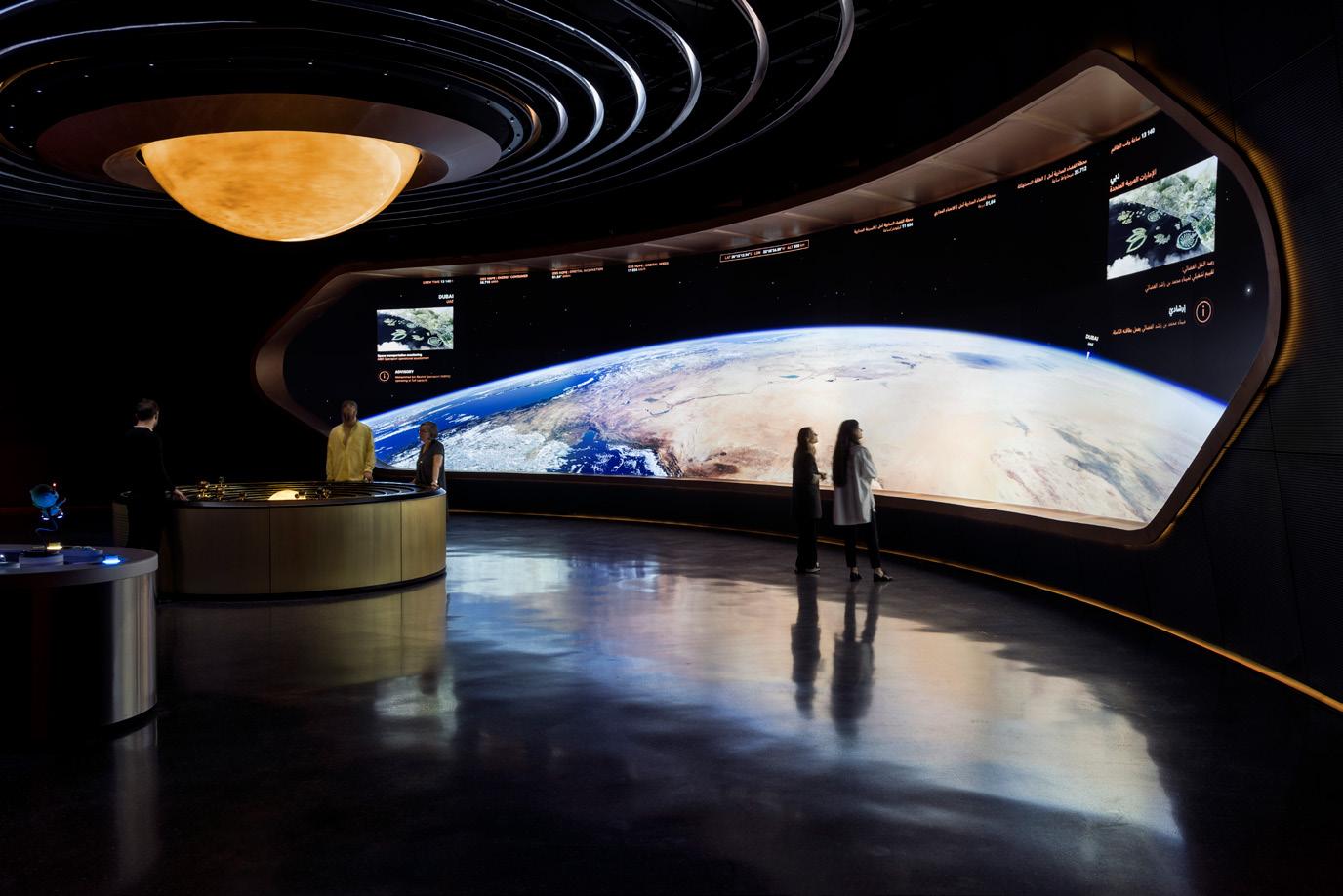
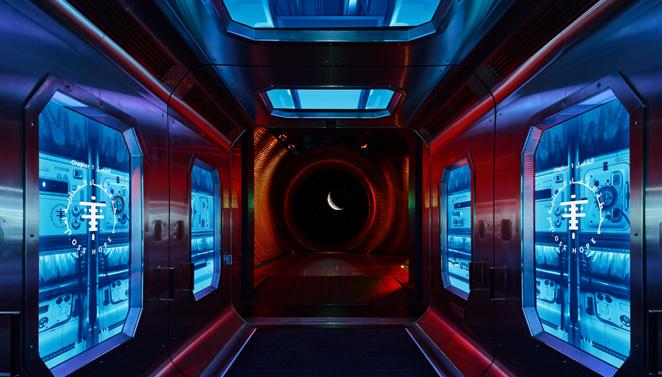
A depiction of humanity’s home in space, OSS Hope allows guests to play out their own stories. They will join its community and learn about what life could potentially be like aboard a huge space station in 2071.
Photos: © Museum of the Future. Photo below: © ATELIER-BRUECKNER, Giovanni Emilio Galanello
OSS Hope
Audio

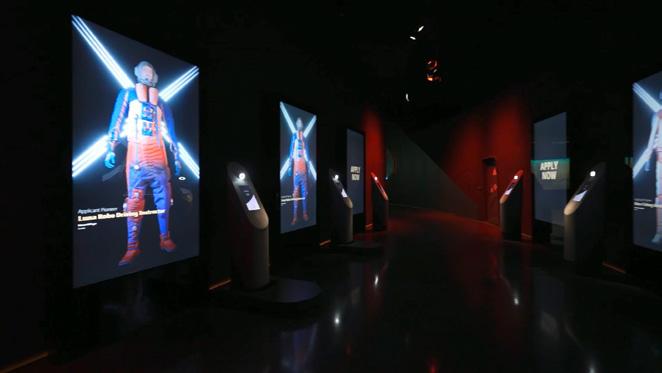
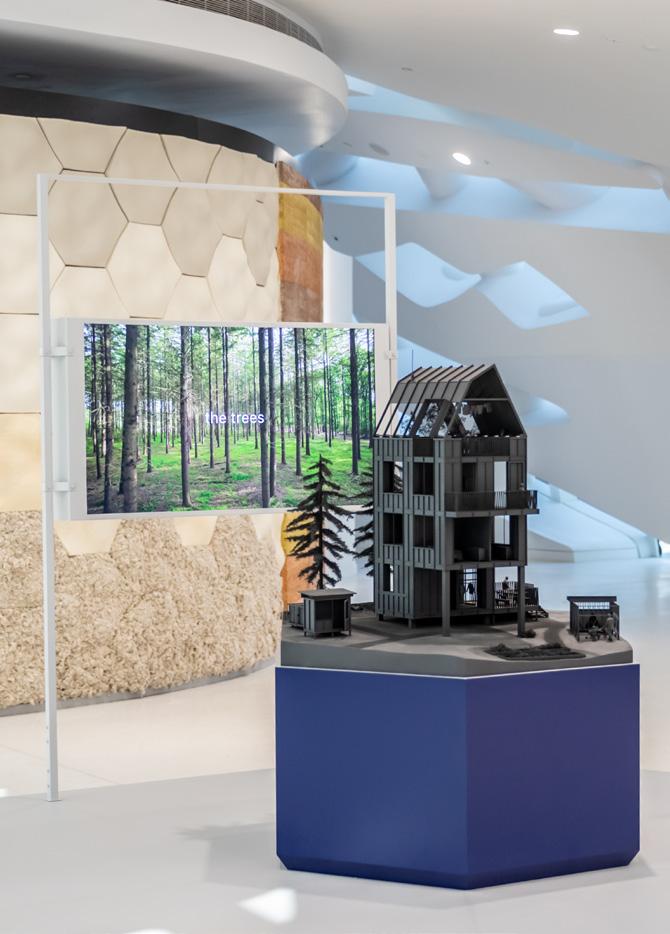
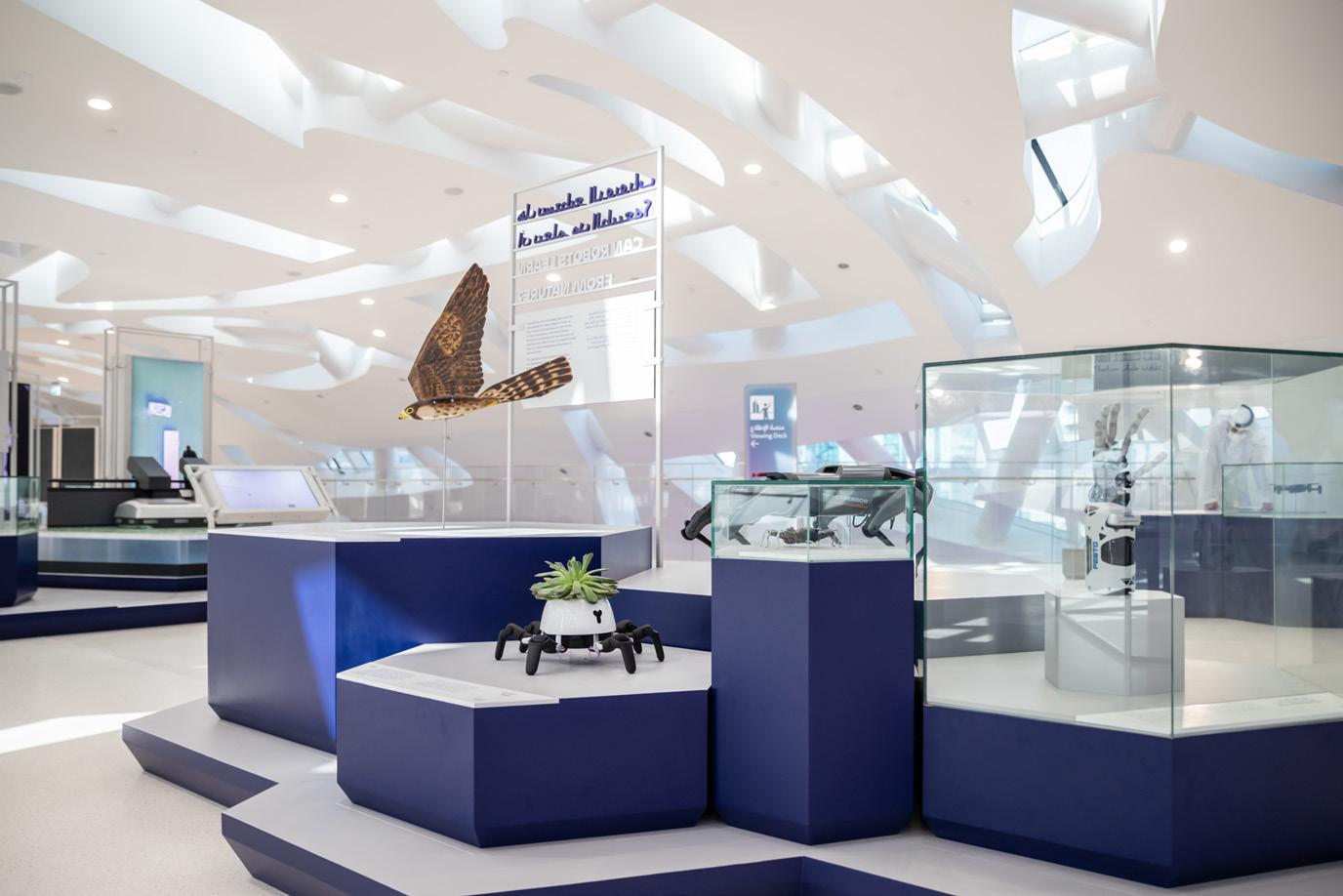
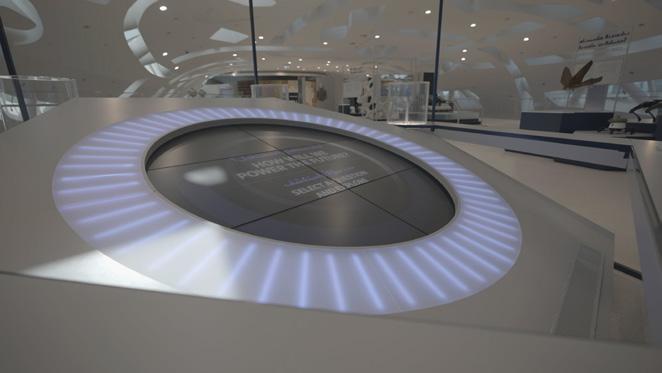
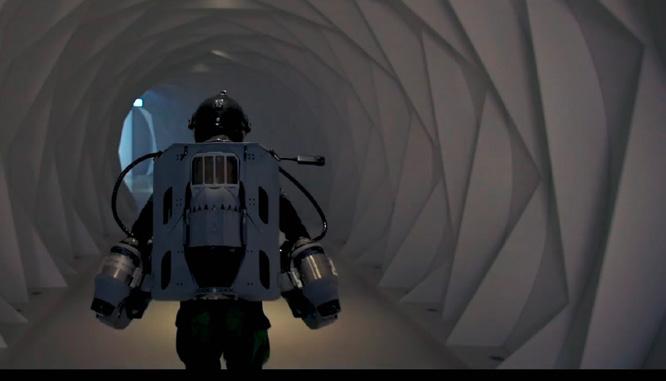
Tomorrow Today
This exhibition explores the contrasting ways in which technology can shape the future by contributing to solving societal and environmental challenges. It features concepts, prototypes and current products focusing on five areas: waste management, environment, food security, agriculture, and city planning.
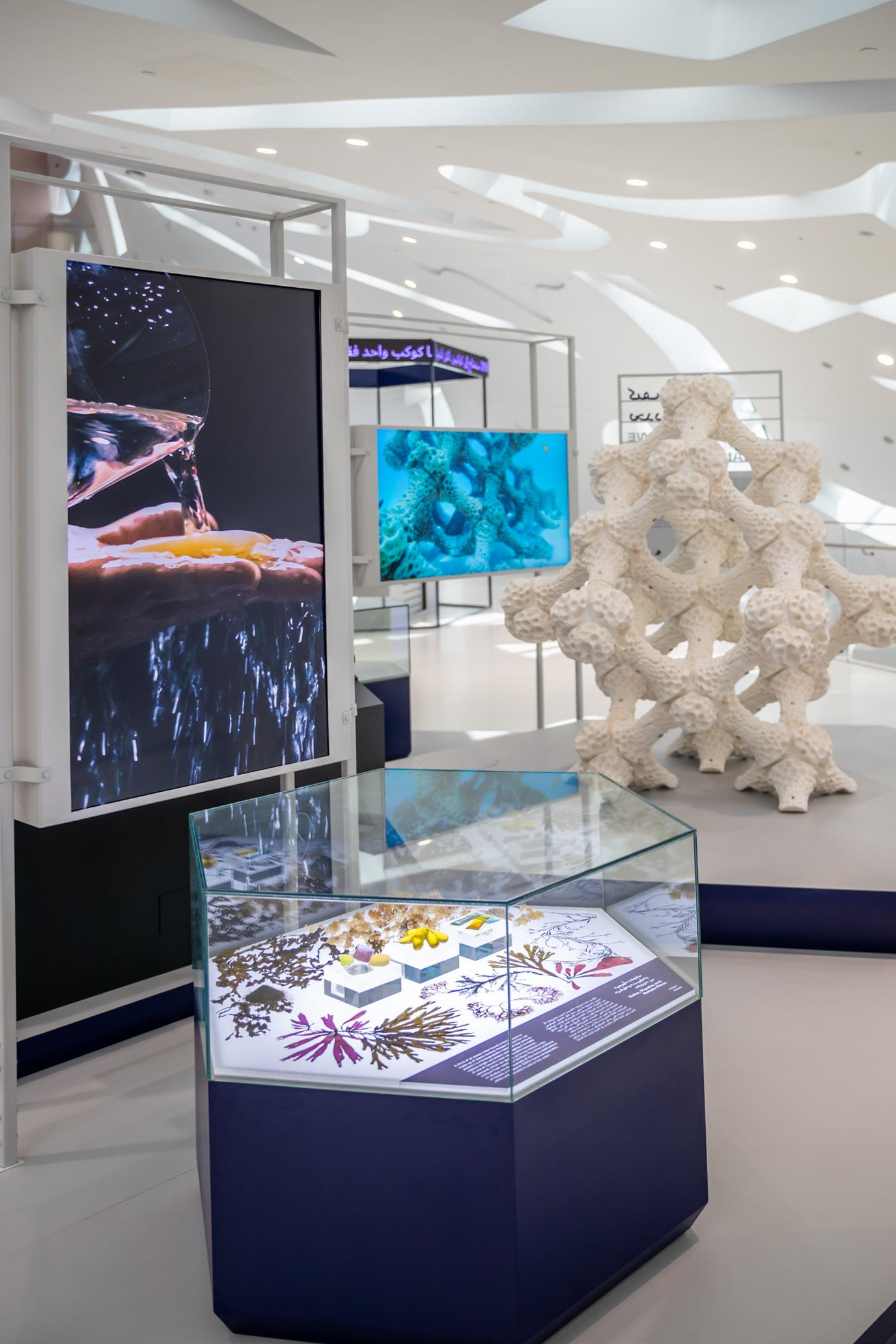
Audio
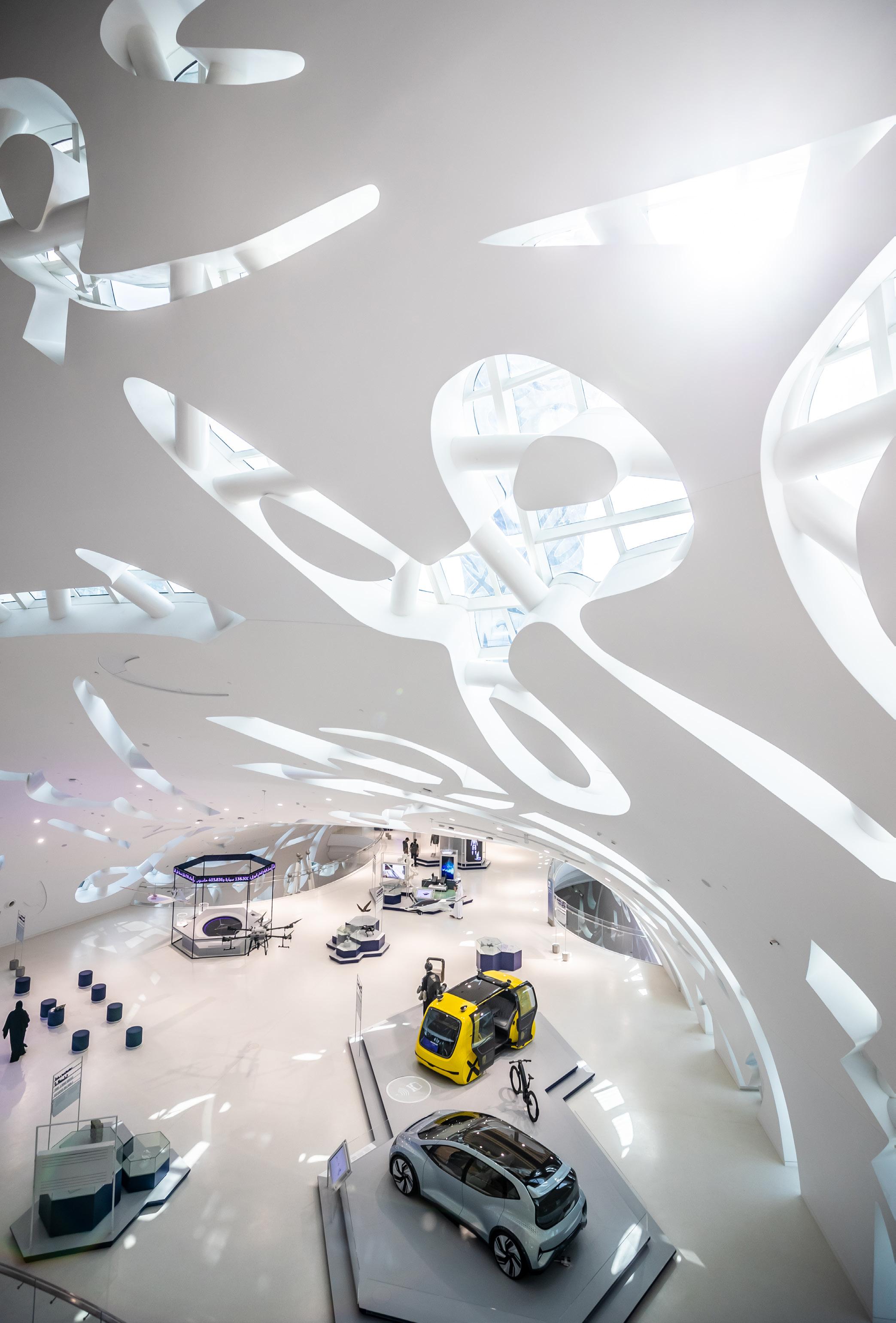
Photos: © Museum of the Future
Technological Experiences: Immersing Visitors in Tomorrow’s World
The visitor experience at the Museum of the Future is designed to be as groundbreaking as its mission. Using advanced technologies such as artificial intelligence, augmented reality, and human-machine interaction, the museum creates immersive environments that challenge visitors to think critically about the future.
One of the standout features is the futuristic elevator, which simulates the experience of commercial space travel. This design choice reflects the museum’s commitment to making distant possibilities feel tangible and achievable. Visitors are encouraged to imagine a future where humanity’s presence
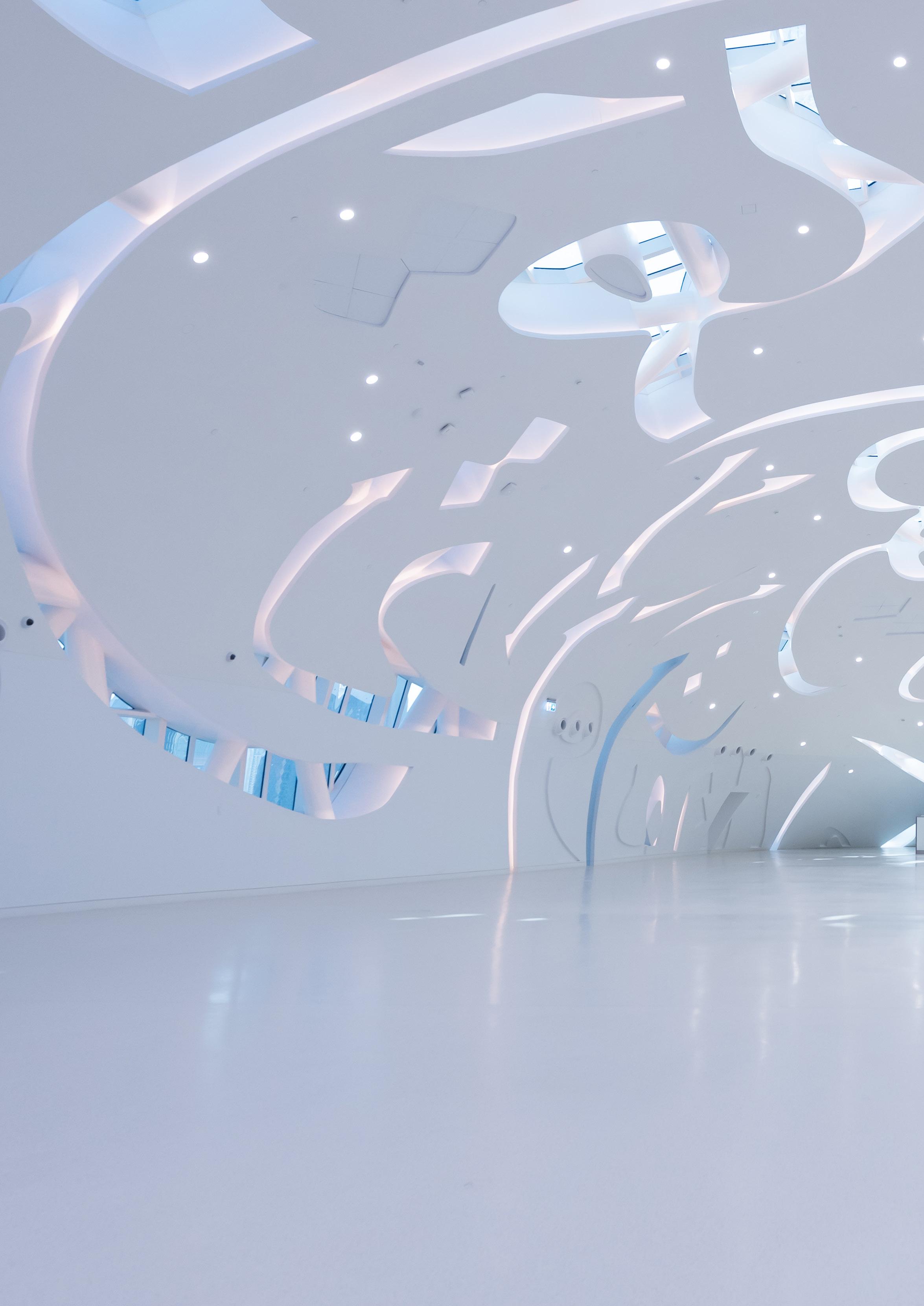
extends beyond Earth – a future that the UAE is actively pursuing through its ambitious space exploration initiatives.
The museum also houses versatile spaces for public engagement. An auditorium with a capacity of over 300 people hosts lectures, debates, and workshops, while open areas accommodate up to 1,000 guests for conferences and exhibitions. These spaces are designed to foster dialogue and collaboration, ensuring that the museum remains a vibrant hub for intellectual exchange.
Sustainability at the Core
Sustainability is not an afterthought but a guiding principle of the Museum of the Future’s design and operations. Over 30% of
the building’s energy needs are met through solar power, and the façade’s glass panels are engineered for optimal thermal insulation. These measures reduce the museum’s carbon footprint and align with Dubai’s broader commitment to environmental sustainability. Moreover, the museum’s philosophy emphasizes the sustainable use of knowledge and resources. By acting as a testbed for green technologies and sustainable practices, the museum contributes to global efforts to combat climate change and build more resilient societies.
A Legacy for the Arab World and Beyond
The Museum of the Future is more than a
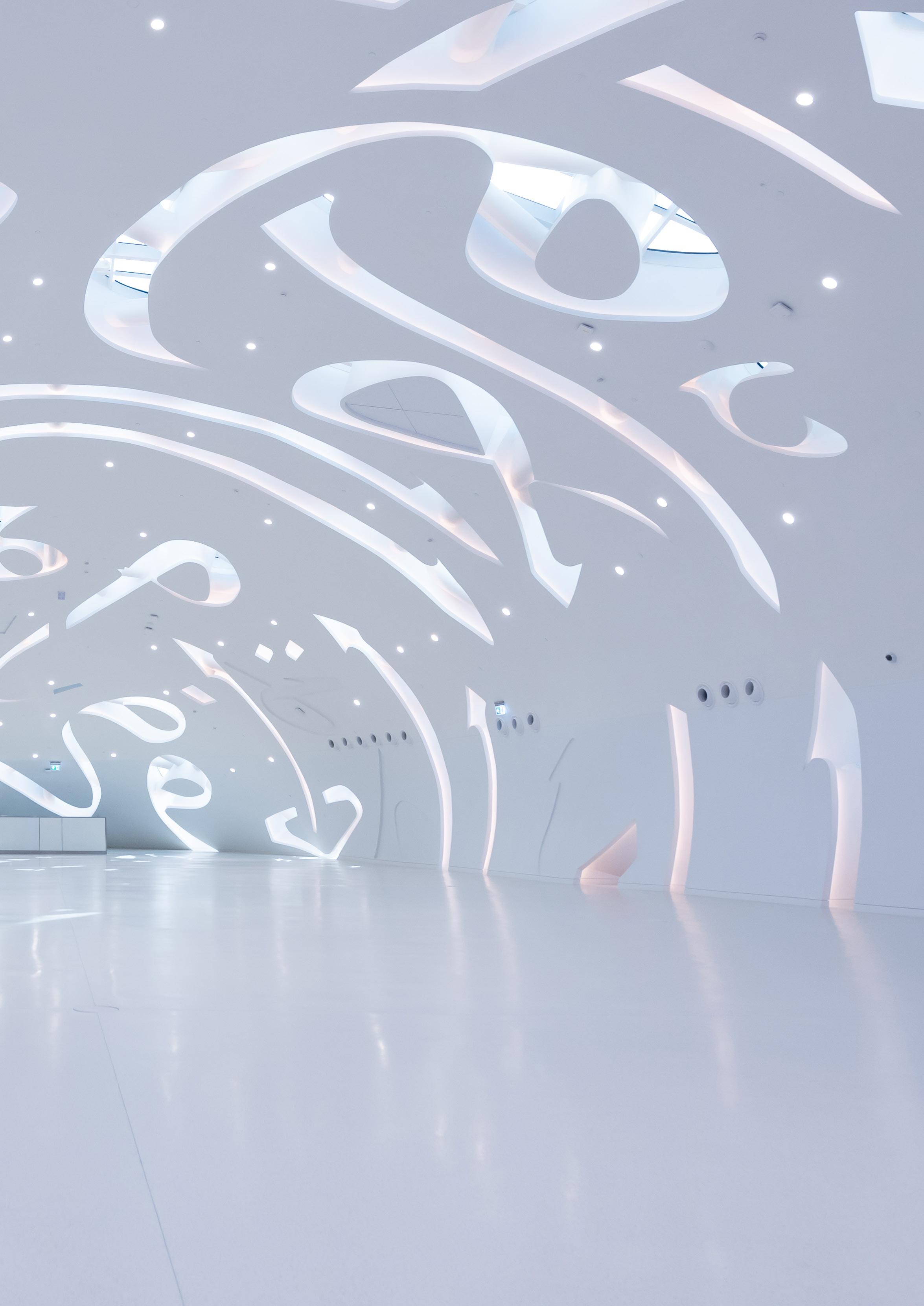
physical structure; it is a movement that aims to inspire a new generation of thinkers, dreamers, and doers. By combining artistic ingenuity, scientific exploration, and sustainable development, it represents a holistic approach to shaping the future. Its mission resonates far beyond the borders of Dubai, offering a blueprint for other nations seeking to balance progress with responsibility.
The museum’s emphasis on Arabic calligraphy and its philosophical alignment with the region’s history of intellectual achievement serve as a reminder of the Arab world’s enduring legacy. It aspires to rekindle that spirit of innovation, proving that the Arab world can once again lead in the global quest for knowledge and advancement.
Conclusion: A Vision Realized
The Museum of the Future stands as a testament to what humanity can achieve when ambition, creativity, and collaboration converge. It is a space where the dreams of tomorrow take root today – a place where the boundaries of possibility are continually expanded. As Dubai continues to position itself as a global leader in innovation and sustainability, the Museum of the Future serves as both a symbol and a catalyst for a brighter, more inclusive future for all. Through its architectural brilliance, scientific mission, and symbolic depth, the Museum of the Future invites the world to not just imagine the future but to actively participate in creating it.
67CP+H4Q - Sheikh Zayed Rd - Trade Centre - Trade Centre 2
Dubai, United Arab Emirates Tel. +971 800 2071
© Museum of the Future
https://museumofthefuture.ae/en
Photo:
Audio
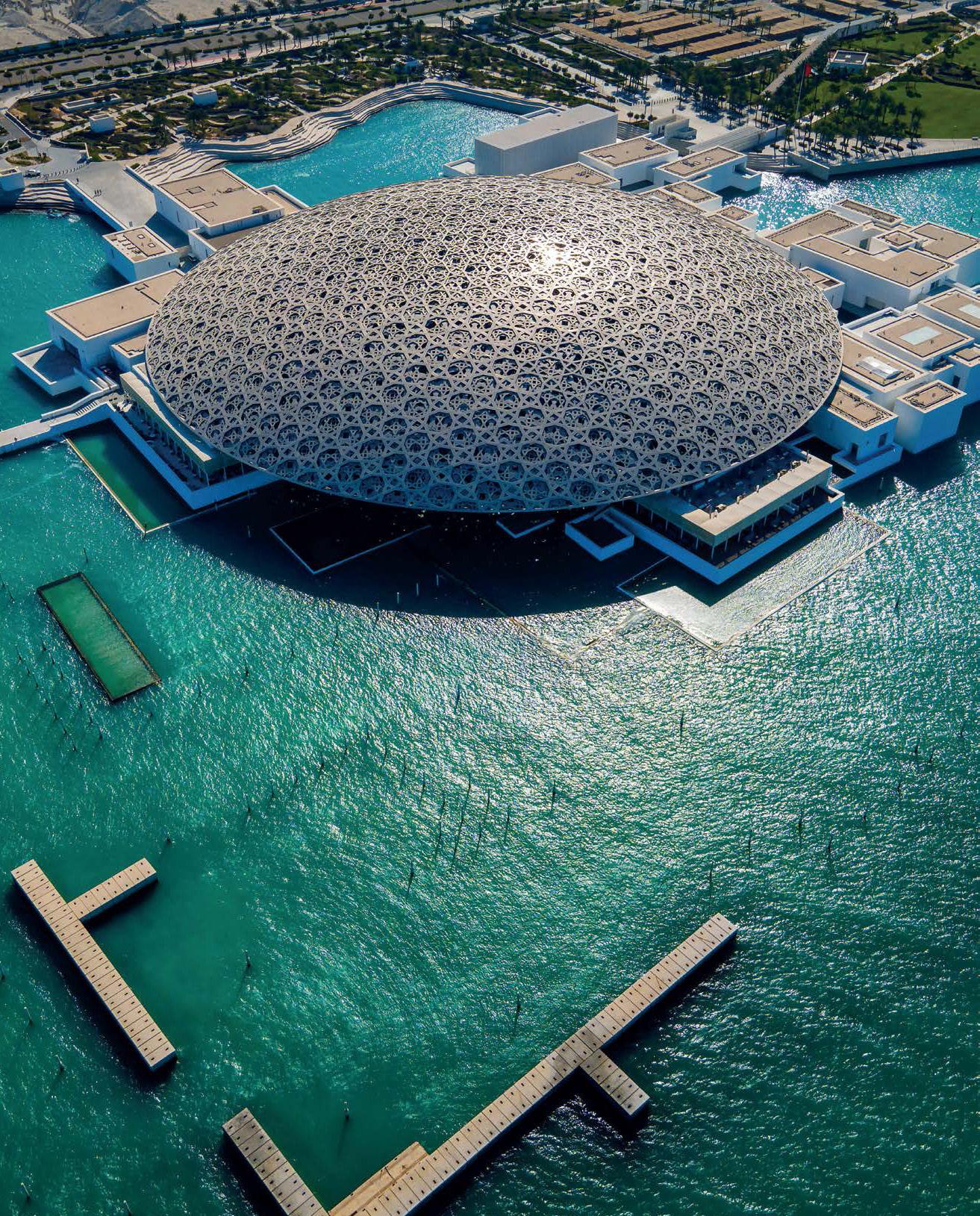
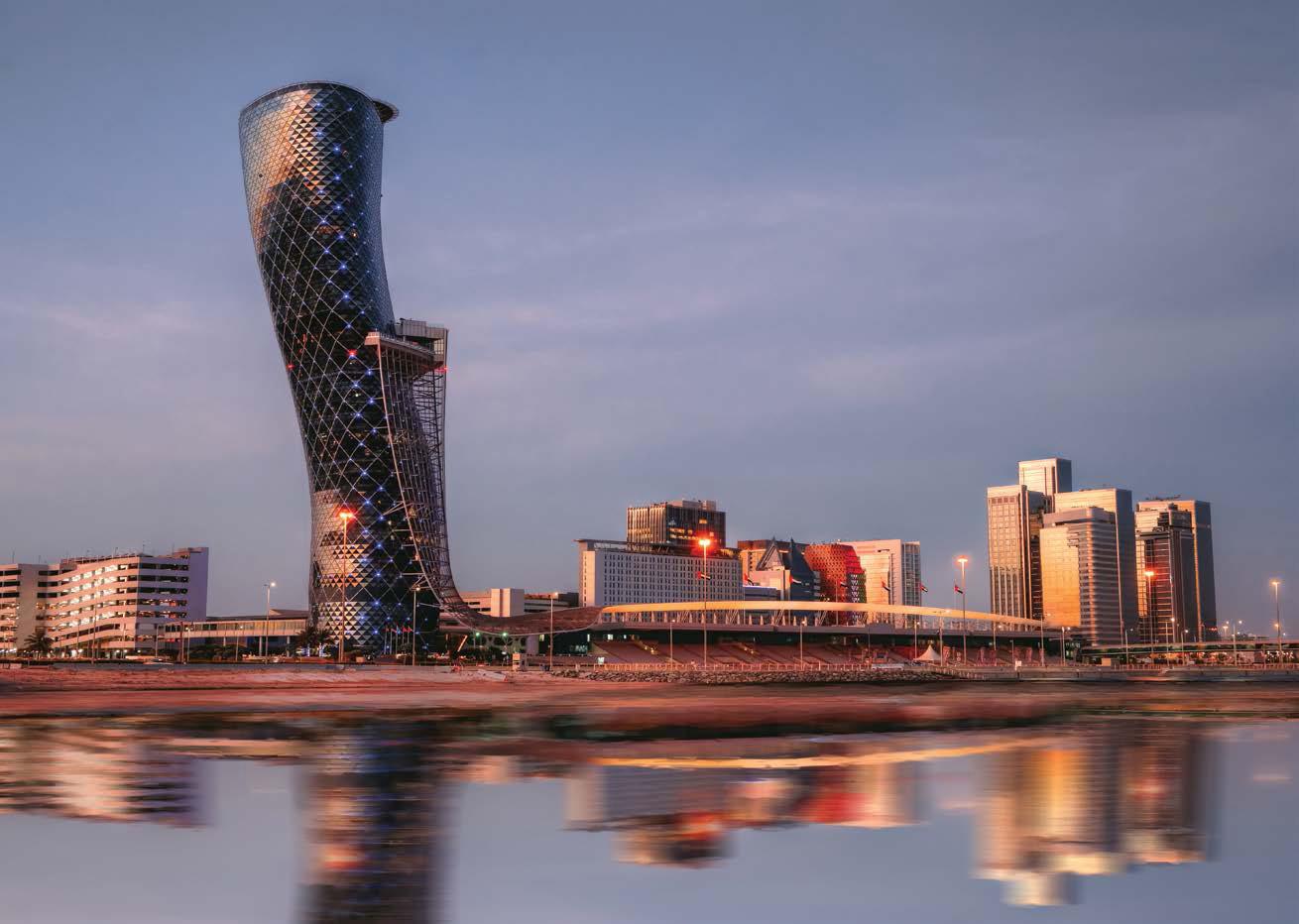
Museum technology of superlatives at Heritage Middle East in Abu Dhabi
2nd Heritage Middle East International Exhibition & Conferences for Museum and Librarianship Technologies, Restoration, Archaeology and Cultural Tourism 10 - 12 DECEMBER 2024, Abu Dhabi National Exhibition Center / UAE.
A new cultural epicenter is currently being created in the Persian Gulf – billions are being invested to create a unique museum landscape with the Saadiyat Cultural District in Abu Dhabi. The Heritage Middle East trade fair, which is taking place for the second time at the Abu Dhabi National Exhibition Center from December 10 to 12, is an important part of the implementation of these major plans. The focus here will be on museum and exhibition technology,
restoration, archaeology and tourism development. Leipziger Messe has been a co-organizer of Heritage Middle East since this year.
The United Arab Emirates want to enter new cultural spheres. In the capital Abu Dhabi alone, more than 10 billion US dollars will be invested in cultural and creative industries between 2023 and 2030, with Saadiyat Island as the focus of these efforts. By the end of next year, further huge and renowned museums of superlatives will be built here in the vicinity of the Louvre Abu Dhabi – including a new Guggenheim Museum and the Zayed National Museum. Accompanying this, Heritage Middle East invites visitors to become part of Abu Dhabi's cultural development as a purchasing
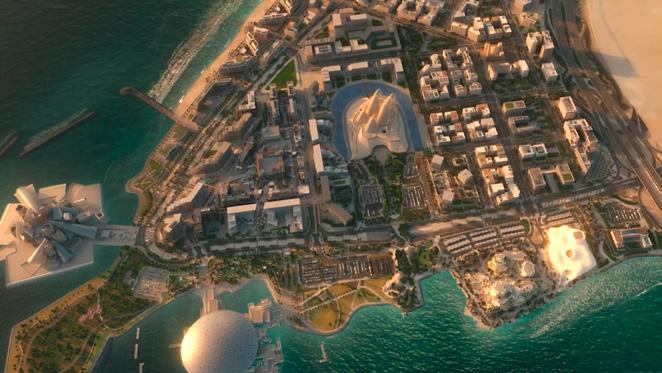
and ideas exchange for the Arab museum world. Decision-makers from museums and libraries, tourism agencies, restoration sites and more are expected on site.
Left page: © With the courtesy of Louvre Abu Dhabi Museum Audio
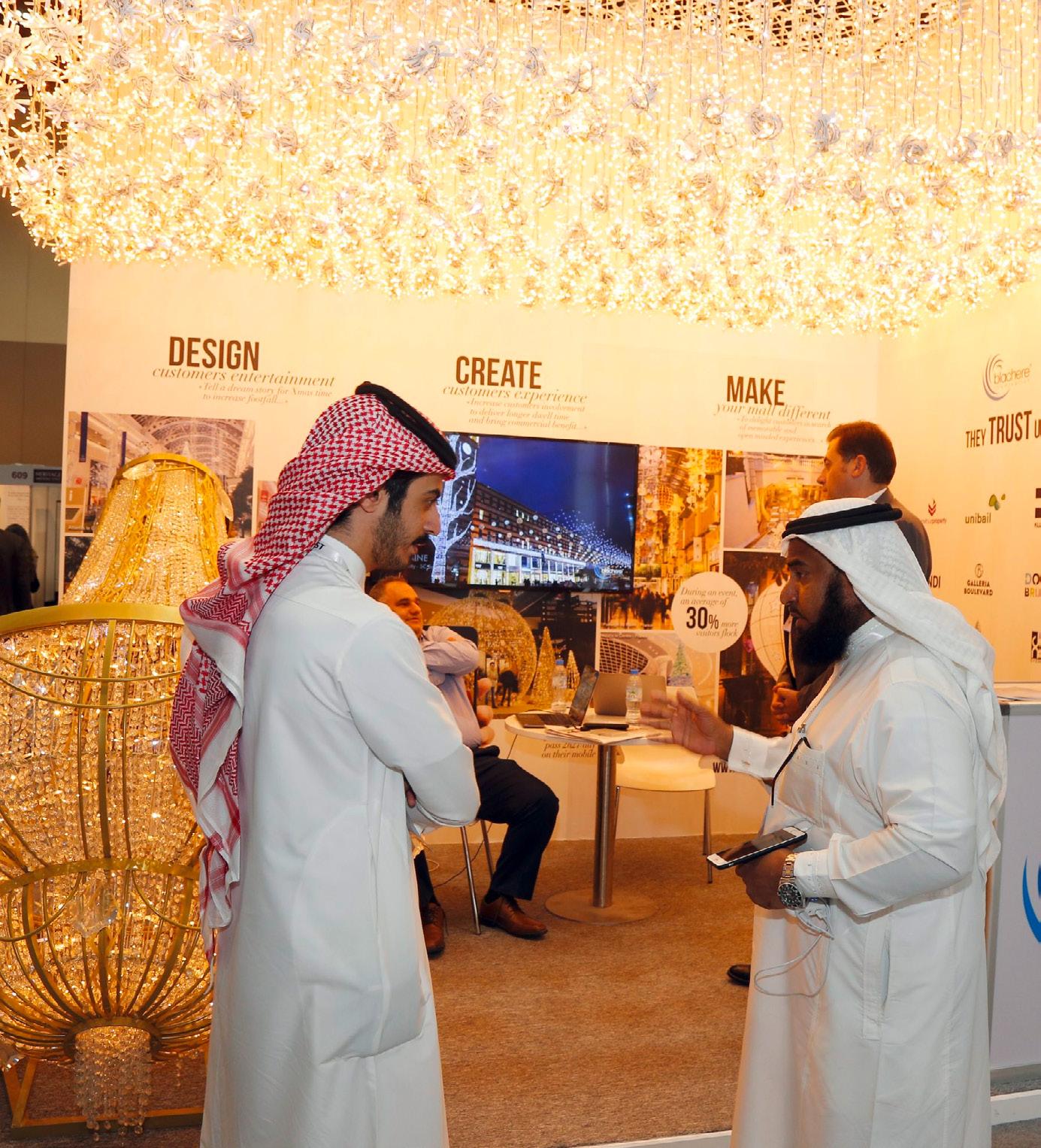
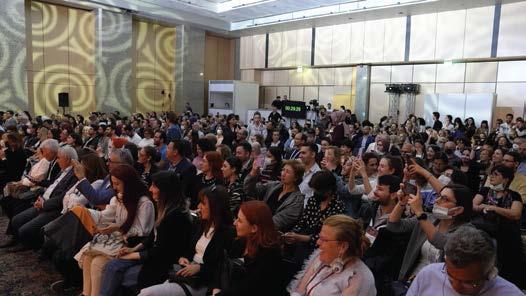
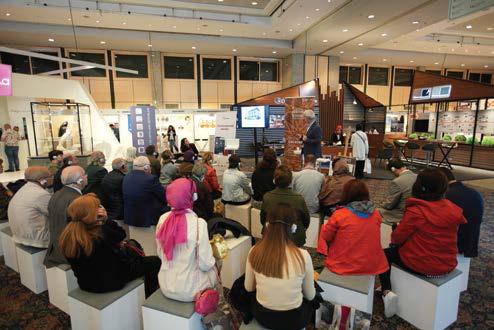

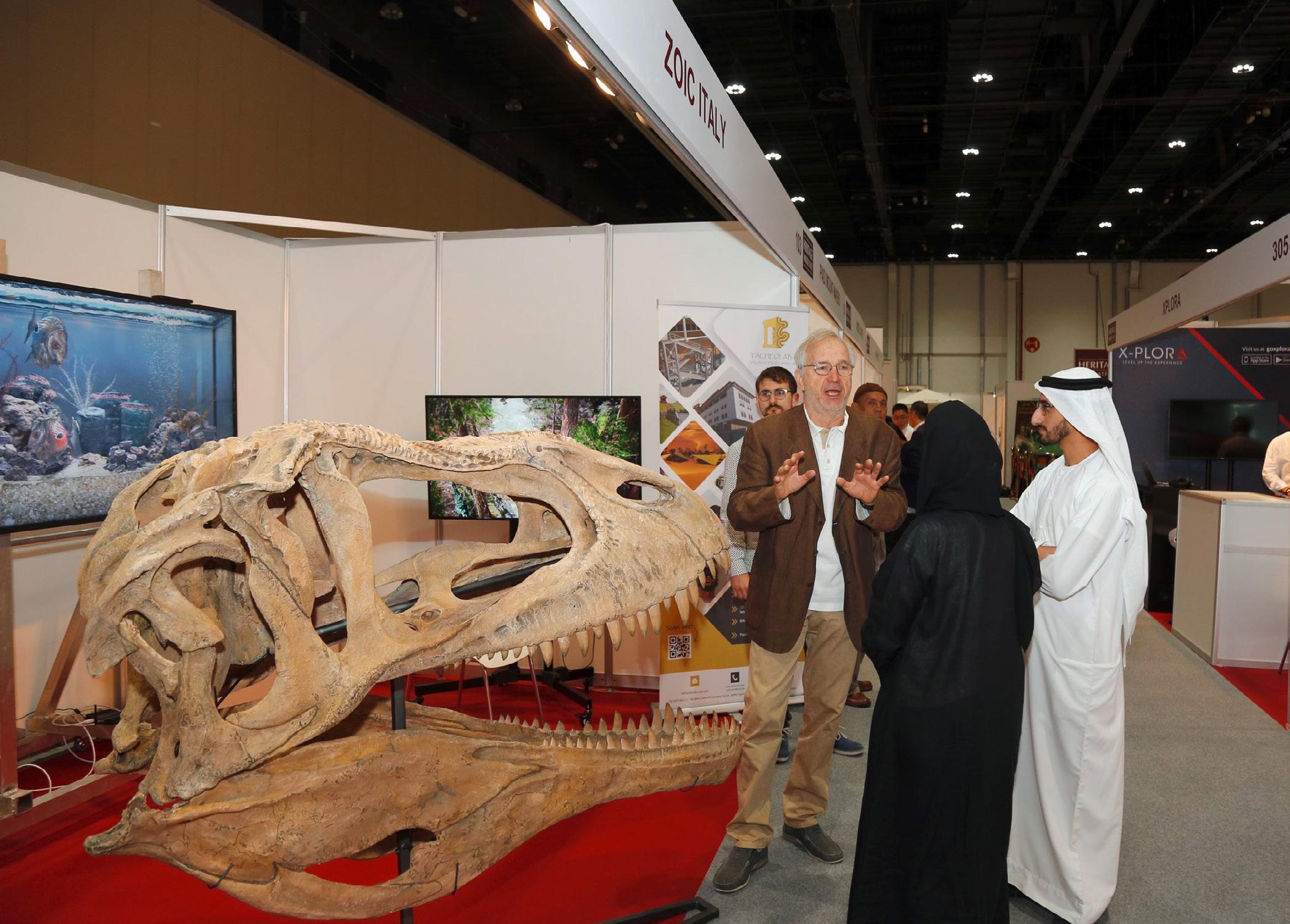
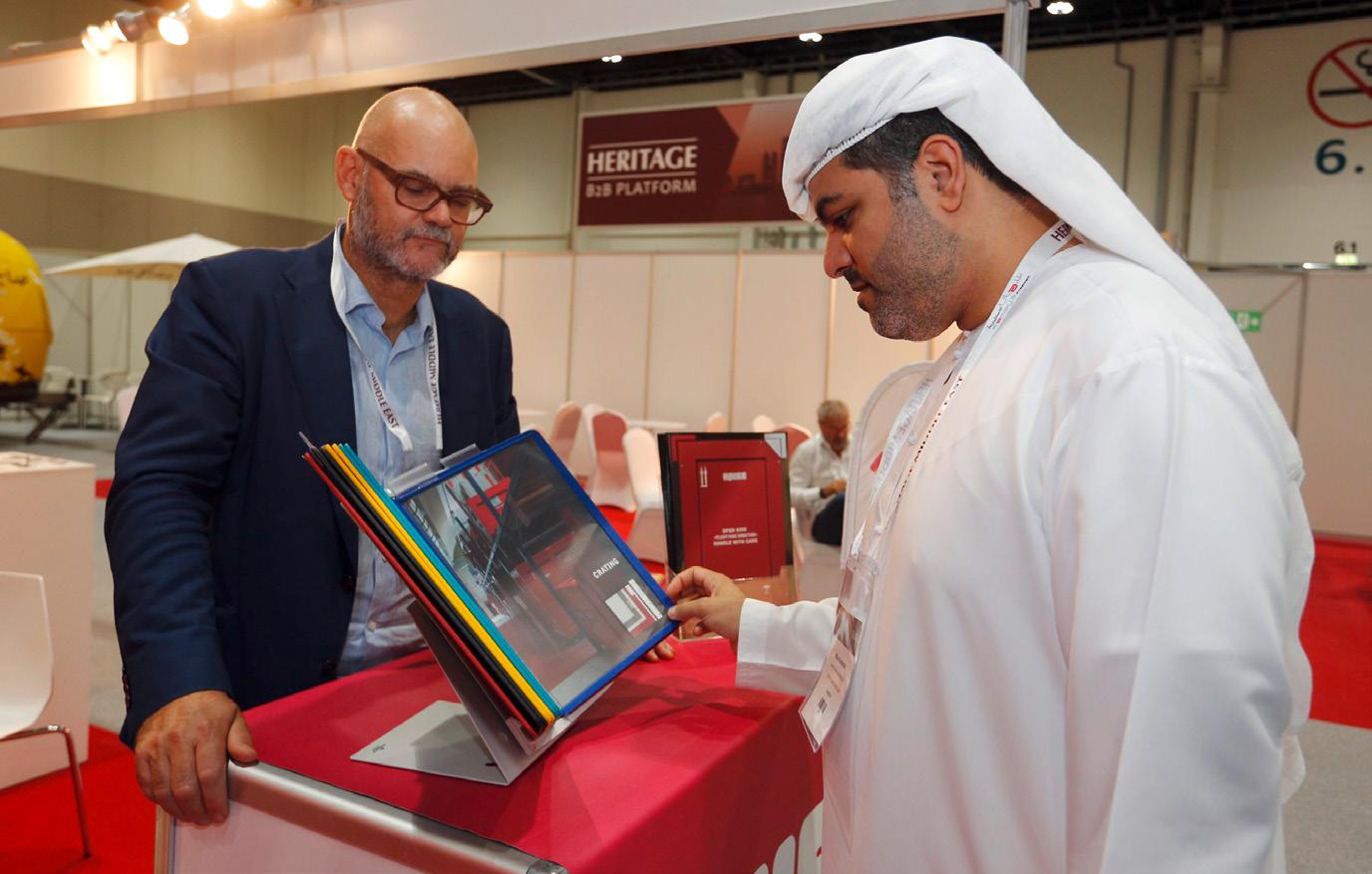
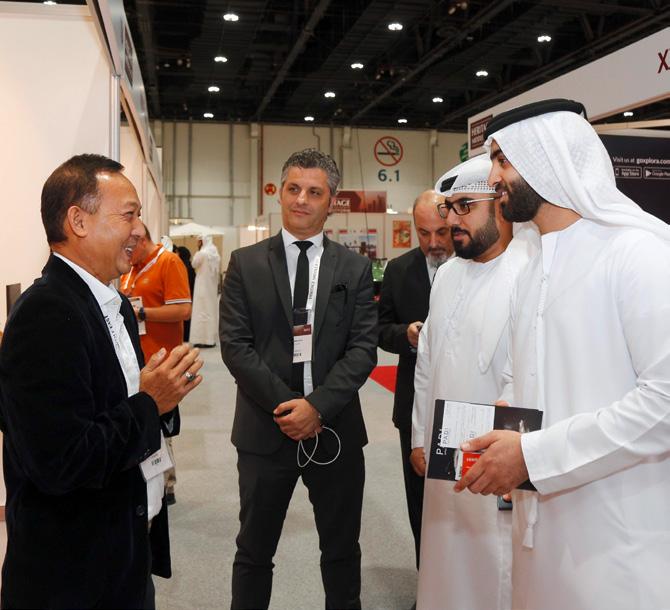
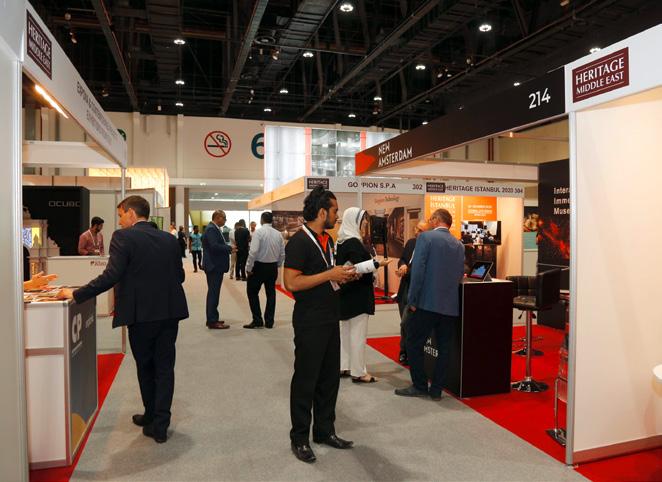
Government and municipal representatives will meet exhibitors who will showcase all their expertise and product portfolio to increase their exposure in the Gulf region. In terms of museum technology, Heritage Middle East offers unique examples of high quality and modern exhibition design, if only because of the infrastructure being created. How exhibitions can be designed to be more interactive and sustainable as well as the interplay between heritage and tourism development will be important issues addressed during the event. Trade fair visitors will also have the exclusive opportunity to take a look behind the scenes of the museums that have already opened
in the cultural district and find out more details about the five museums currently under construction.
TG Expo and the Leipziger Messe International team are co-organizing the trade fair for the first time this year. LMI is contributing its wealth of experience from international trade fairs such as denkmal and MUTEC or Heritage China International as well as Germany's guest country appearance in Abu Dhabi to the partnership with the Turkish organizer TG Expo, which has already been organizing the Heritage Istanbul trade fair for museum technology and restoration for seven years. LMI Managing Director Markus Geisenberger says of Heritage in Abu Dhabi: “Here you can experience state-of-theart exhibition equipment and avant-garde presentation concepts live in their practical application.” Renowned associations and institutions such as the German Confederation of Skilled Crafts, various national committees of the International Council of Museums ICOM and the Ministry of Culture and Tourism Abu Dhabi are also supporting the trade fair.
The event will be accompanied by a high-calibre specialist program. 28 experts from six countries will speak on topics such as museum management, cultural heritage and identity creation and present current projects and museums such as the Louvre Abu Dhabi.
Nasir Al-Damarki, head of ICOM in the United Arab Emirates, says: “This exhibition and conference offers a valuable opportunity to make contact with European providers and establish new collaborations. Heritage Middle East is an important platform for our
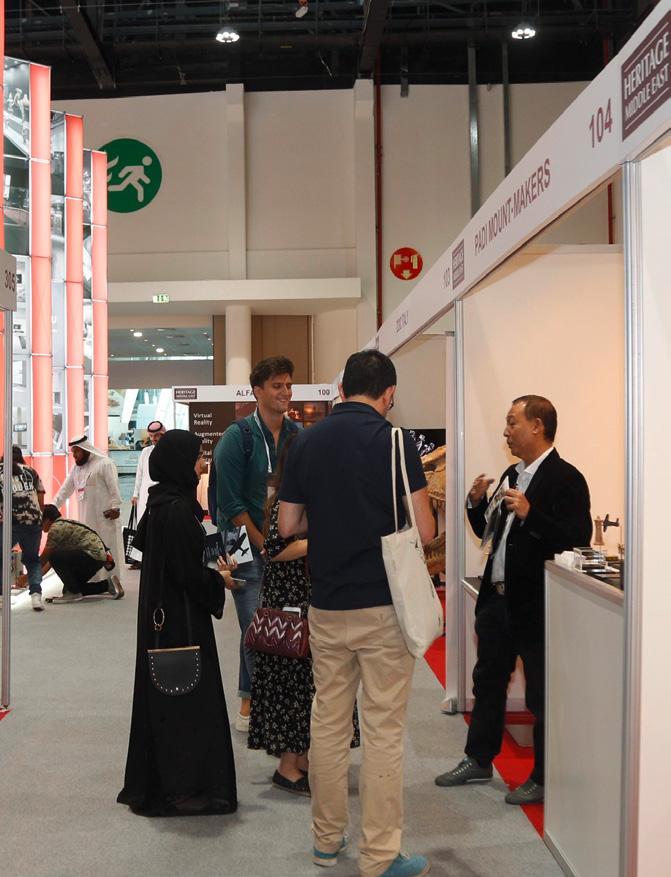
region, bringing together key stakeholders to discuss pressing challenges and explore new opportunities in the field of museums and heritage conservation. ICOM UAE is pleased to support this initiative and participate in the event.”
Mubarak Hamad Al Shamsi, Head of Abu Dhabi Convention and Exhibition Bureau said: “We are delighted to support TG Expo and Leipziger Messe International in organizing the 2nd Heritage Middle East. Abu Dhabi's commitment to excellence in arts and culture is widely recognized and the city's entire ecosystem is geared towards ensuring the success of this event. With strong support from the government at the highest levels, we are confident that the fair will receive all the necessary resources and support. Abu Dhabi provides an ideal setting for such a prestigious event.”
Heritage Middle East www.expoheritage.com
10 - 12 DECEMBER 2024
Abu Dhabi National Exhibition Center / UAE

Photos: © TG Expo/Heritage Middle East
Audio
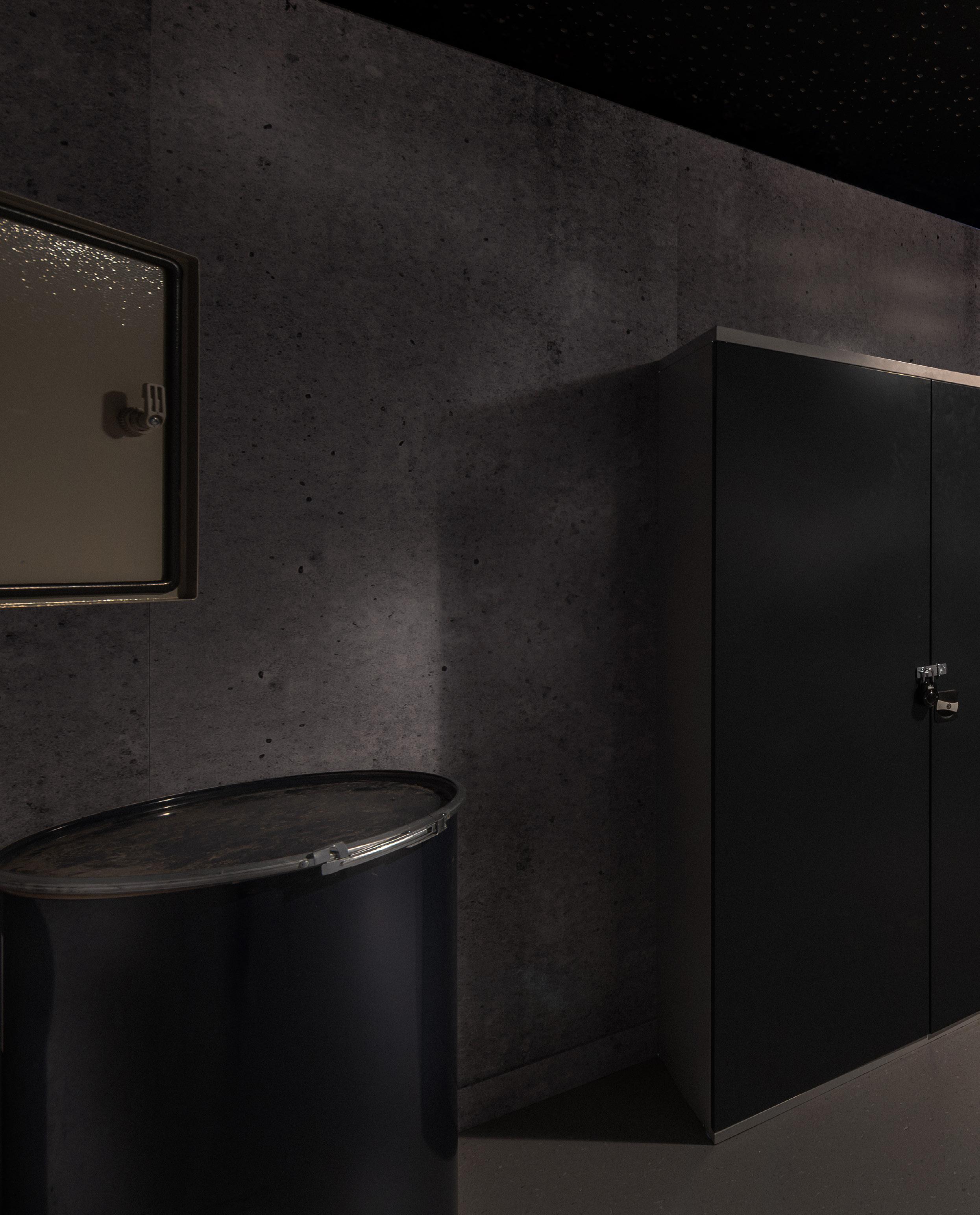
Modular AI Experience Room
Artificial intelligence as the key to new learning and experience spaces with Mila-Wall
Fotos: © Peter Muntanion
Artificial intelligence (AI) is opening up innovative opportunities for museums to transform the museum experience and revolutionize the way collections are presented and how they interact with visitors. With its ability to analyze data precisely, AI not only supports the classification and analysis of collections, but also enriches the design of exhibitions by making them more individual and interactive.
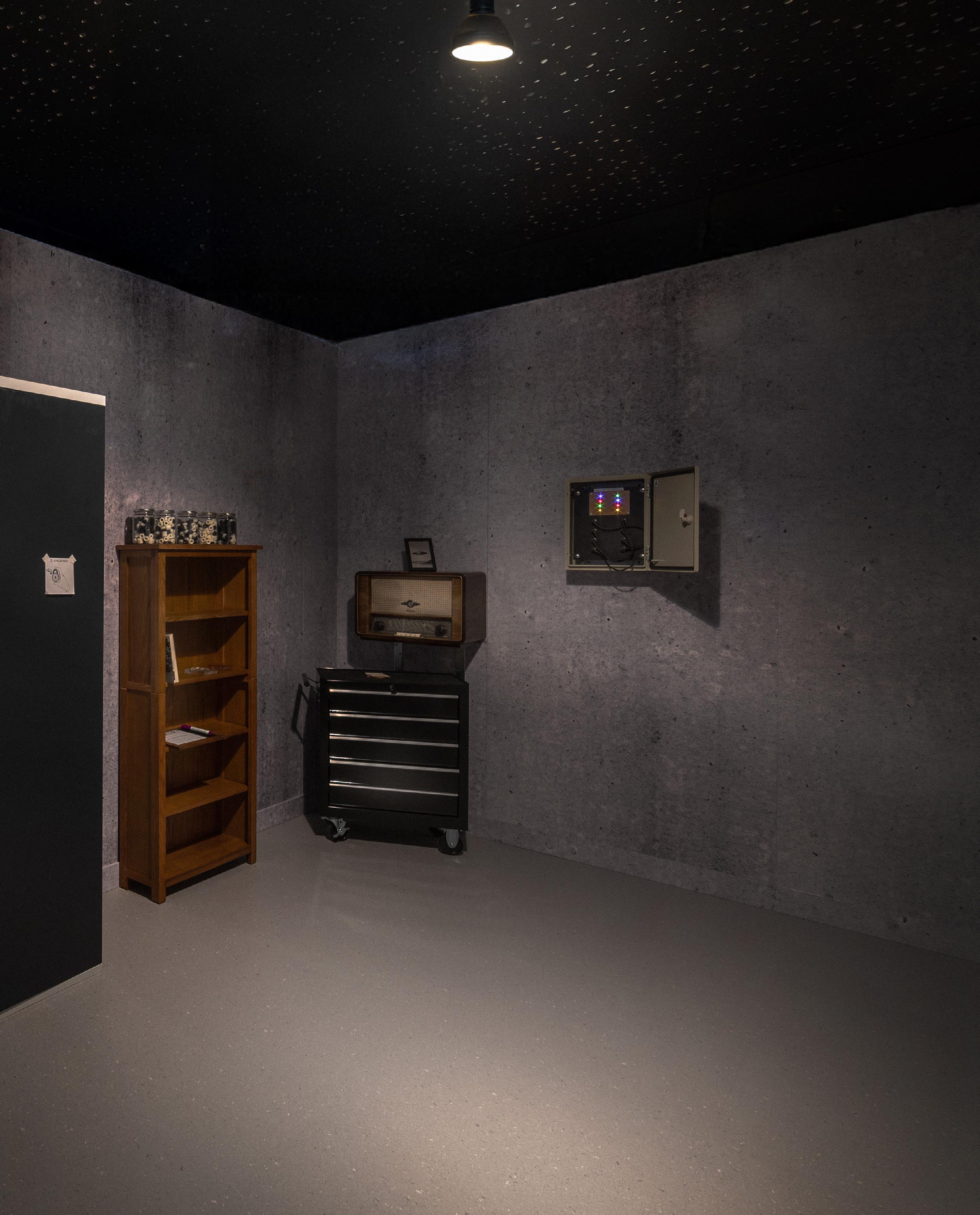
The AI EXPERIENCE ROOM in Reutlingen's Innoport, which was realised with the help of modular Mila-wall partition walls, shows an impressive implementation of this idea. These temporary and flexible room-in-room solutions combine AI with interactive experiences and learning processes.
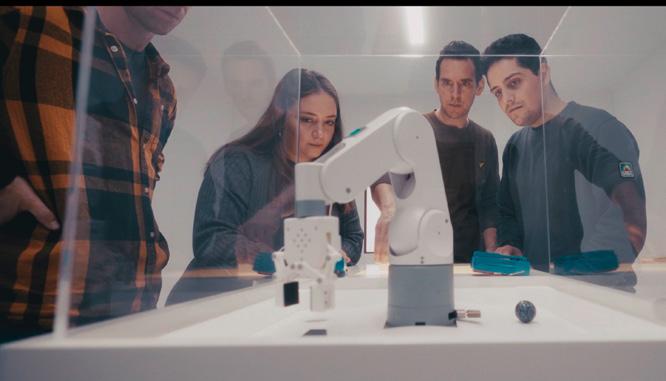
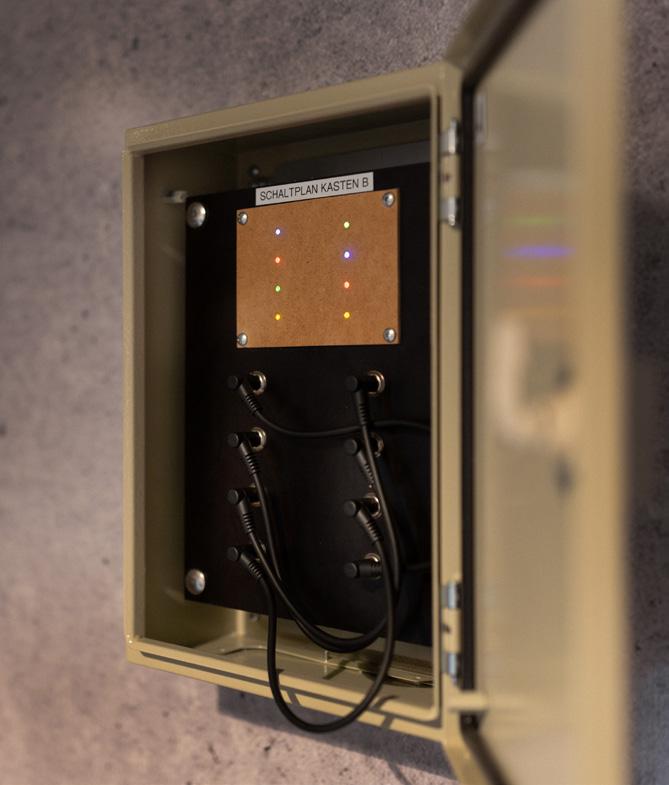
Audio
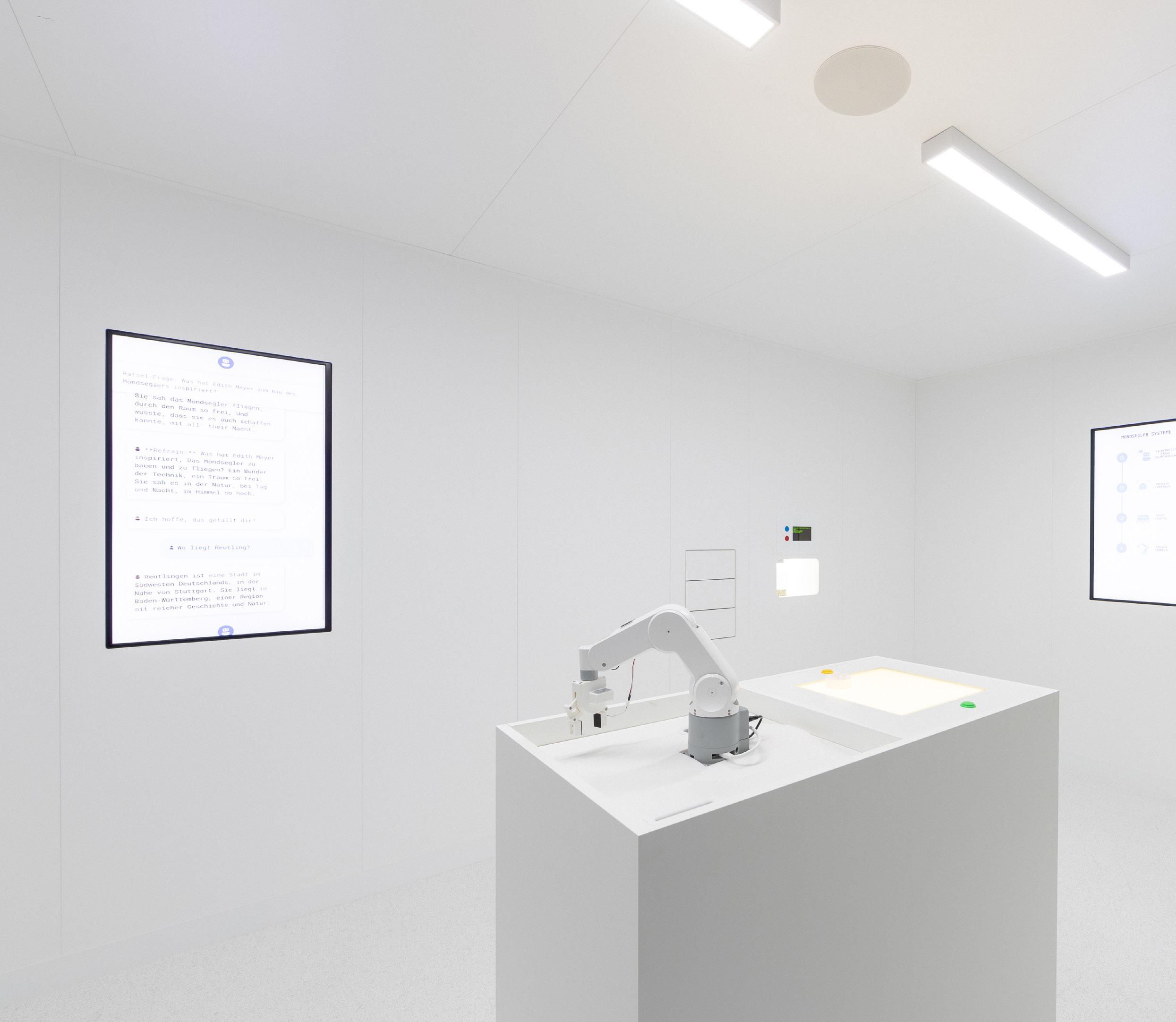
The AI EXPERIENCE ROOM offers a unique environment where visitors are immersed in an exciting adventure through the use of AI, where they solve puzzles, explore exhibits and discover new technologies step by step. Museums can also appeal to a young audience for whom Experience Rooms have been established for some time. So this is not a short-term trend, but a new way of imparting knowledge in a playful way.
The room is divided into three separate areas, each thematically and designed, build on each other. In the first room, a workshop, the journey begins. In the next
room, a high-tech laboratory, the experience is deepened. Finally, visitors enter a room designed entirely in black with large screens, which captivates with a futuristic atmosphere. There are hidden details to discover everywhere: old lockers, radios and drawers and objects that can be explored interactively with scanners.
The concept is inspired by the popular Escape Rooms and playfully promotes the understanding of future technologies with a special focus on artificial intelligence. This world of experience is aimed at families, technology enthusiasts and companies alike and creates space for modern knowledge transfer.
The rooms are designed on the basis of modular and reusable partition wall technology, which means that they can be adapted to new content at any time, converted or rebuilt elsewhere. If a room is no longer needed, about 80-90% of the partition walls can be reused for exhibitions. Sustainable, flexible and can be used again and again. The room is divided into three separate areas, each thematically and designed. The concept is inspired by the popular Escape Rooms and playfully promotes the understanding of future technologies with a special focus on artificial intelligence.
The innovative room design with modular

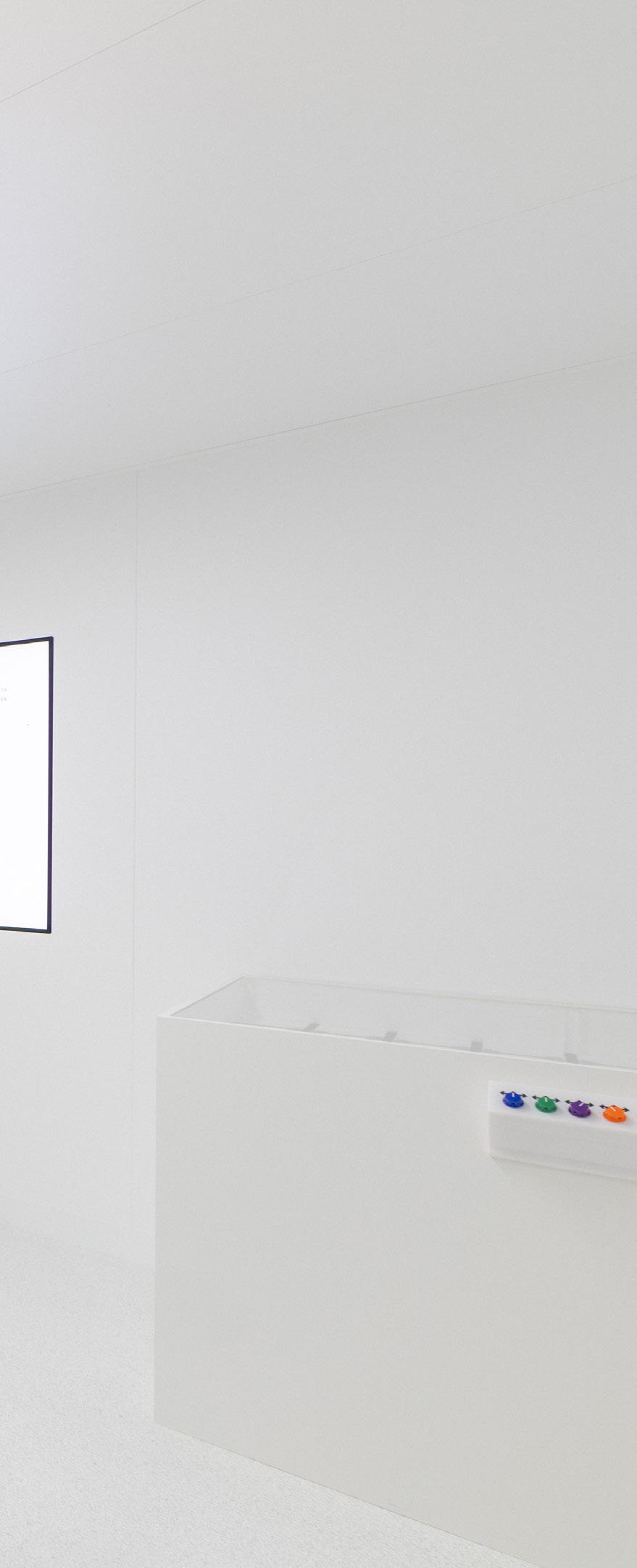
walls takes the experience to a new level. Milawall, as an expert in flexible roomin-room solutions, offers museums the opportunity to design their exhibitions in a forward-looking and inspiring way through such dynamic spatial concepts. This creates learning and experience spaces that support the transfer of knowledge and technology in an exciting way.
The rooms are designed on the basis of modular and reusable partition wall technology, which means that they can be adapted to new content at any time, converted or rebuilt elsewhere. If a room is no longer needed, about 80-90% of the partition walls
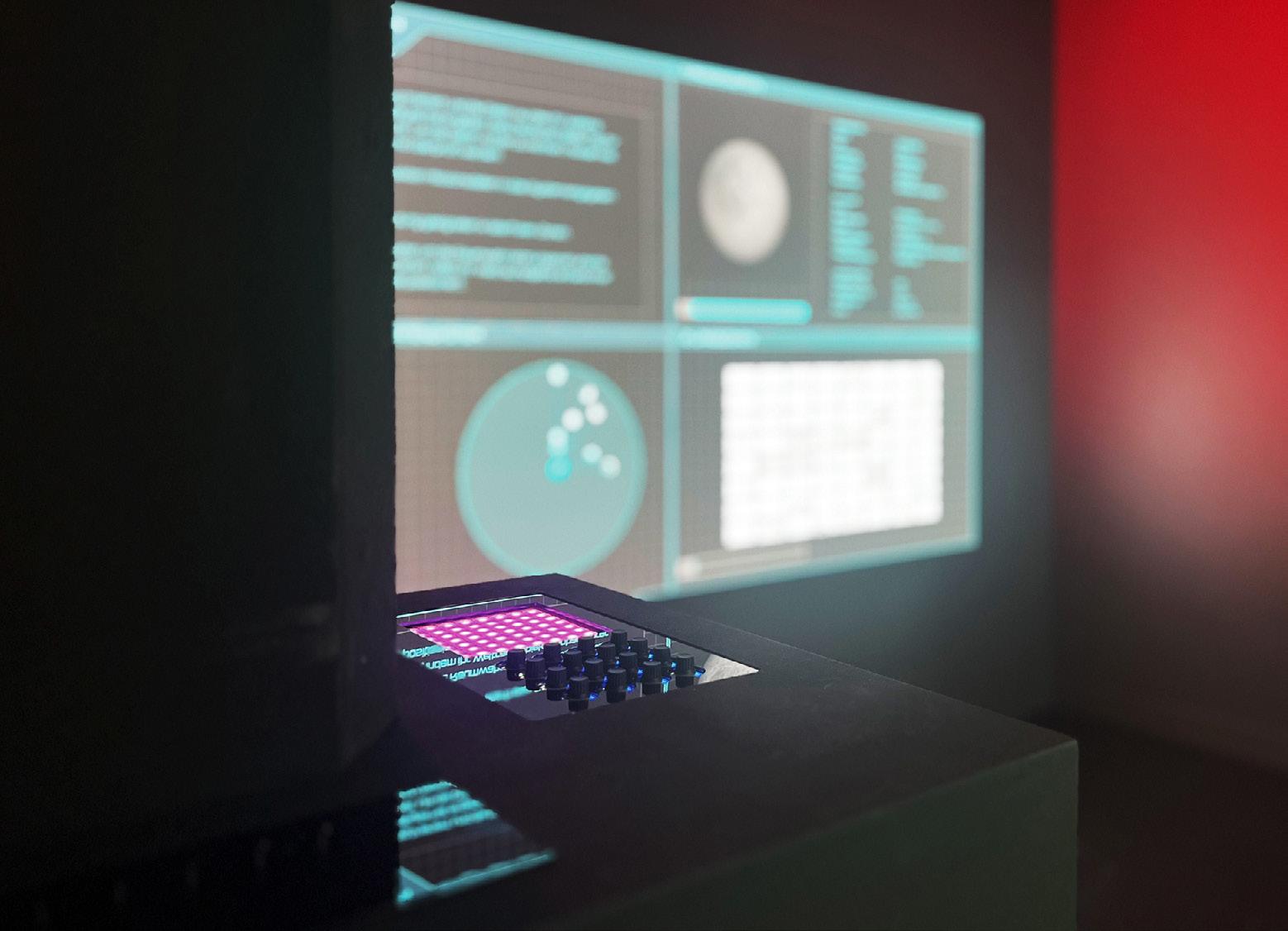
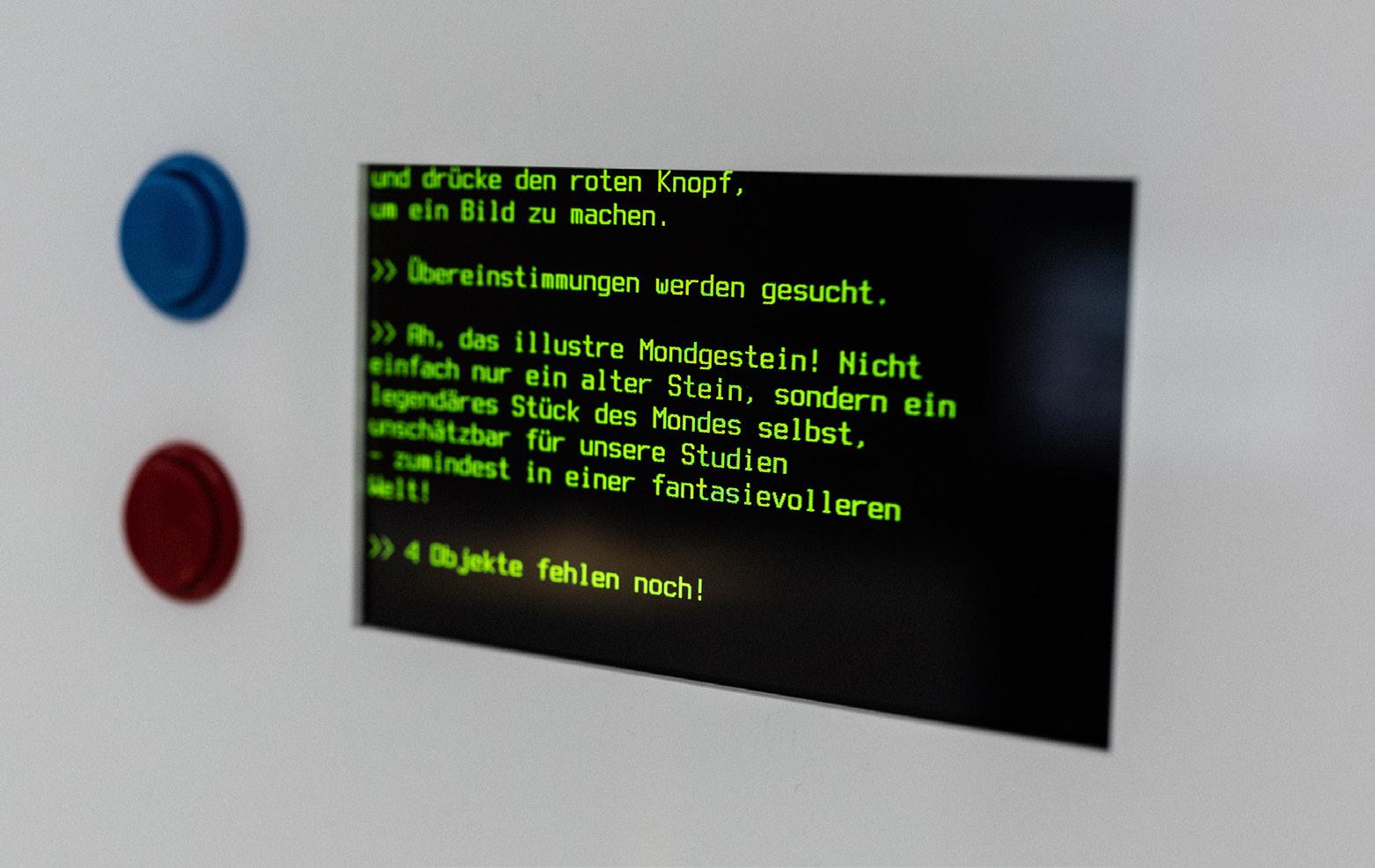
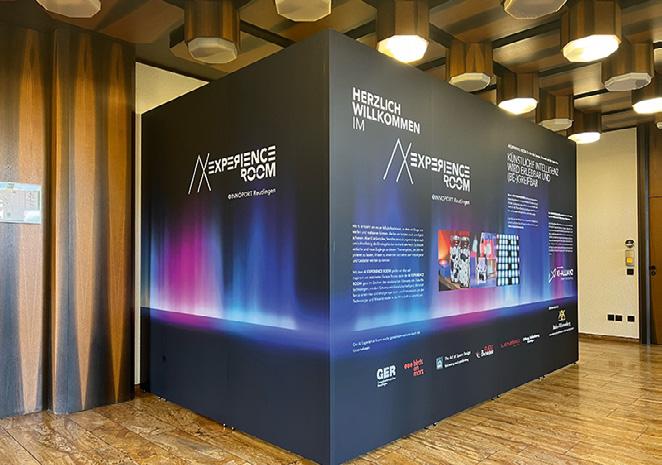
can be reused for exhibitions. Sustainable, flexible and can be used again and again.
The AI EXPERIENCE ROOM is an impressive example of how artificial intelligence has the
potential to redefine museums as places of learning, amazement and discovery.
Discover the many possibilities of the Mila-wall on site, from the partition wall, to the chillout room, to the video box and to the AI Experience Room.

Audio
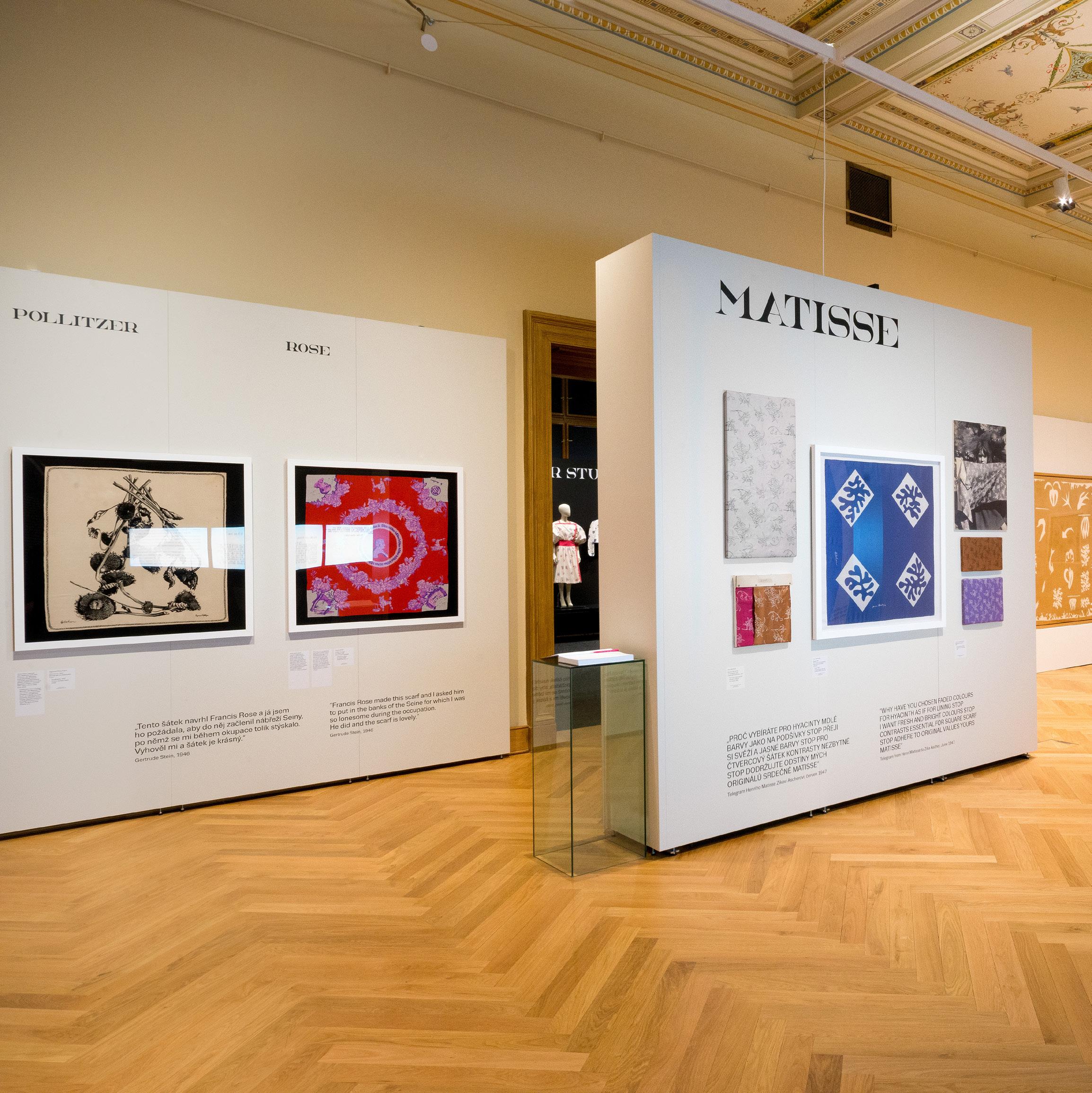
Museum of Decorative Arts Prague
Mila-wall modular construction technology in the UPM in Prague
The Museum of Decorative Arts Prague is currently showing an exhibition on Zika and Lida Ascher that is well worth seeing. With their extraordinary fabrics they have influenced the fashion industry. Zika Ascher
celebrated her first big success in London with silk scarves. The scarves were designed by renowned artists like Henry Moore and Henri Matisse. Later Ascher supplied renowned fashion houses like
Dior, Pierre Cardin and Yves Saint Laurent with his fabrics.
In their original homeland, however, the name of the textile manufacturers had fallen into oblivion.
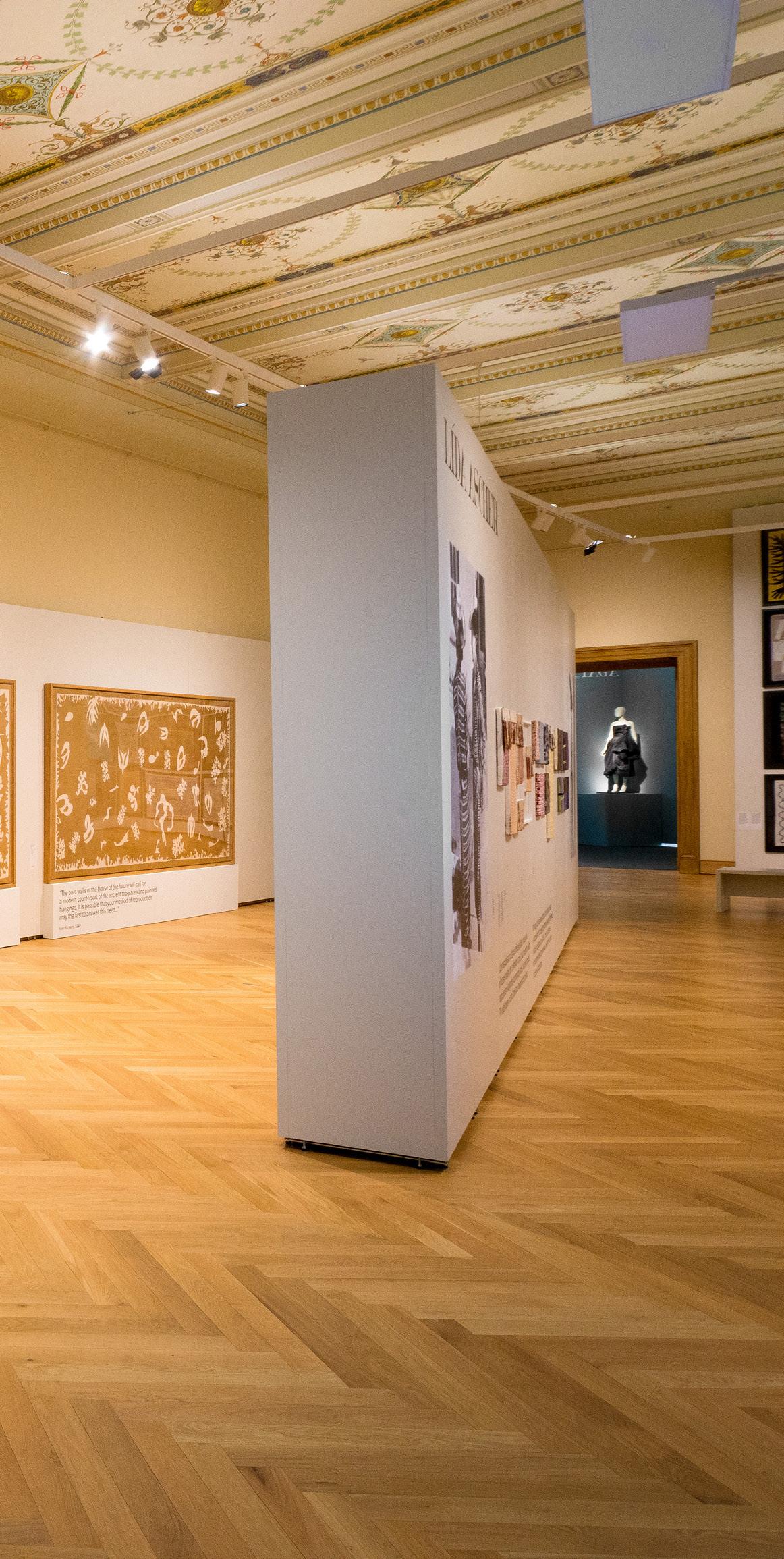
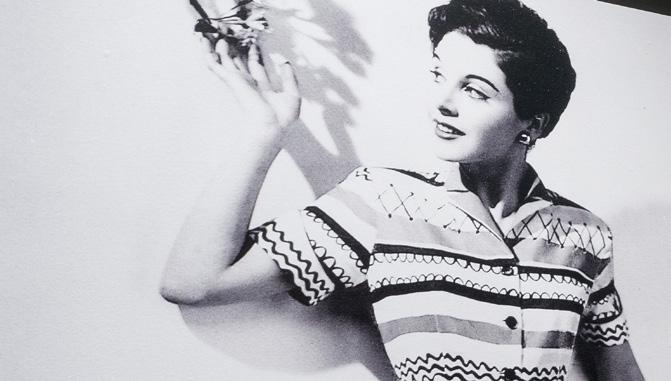
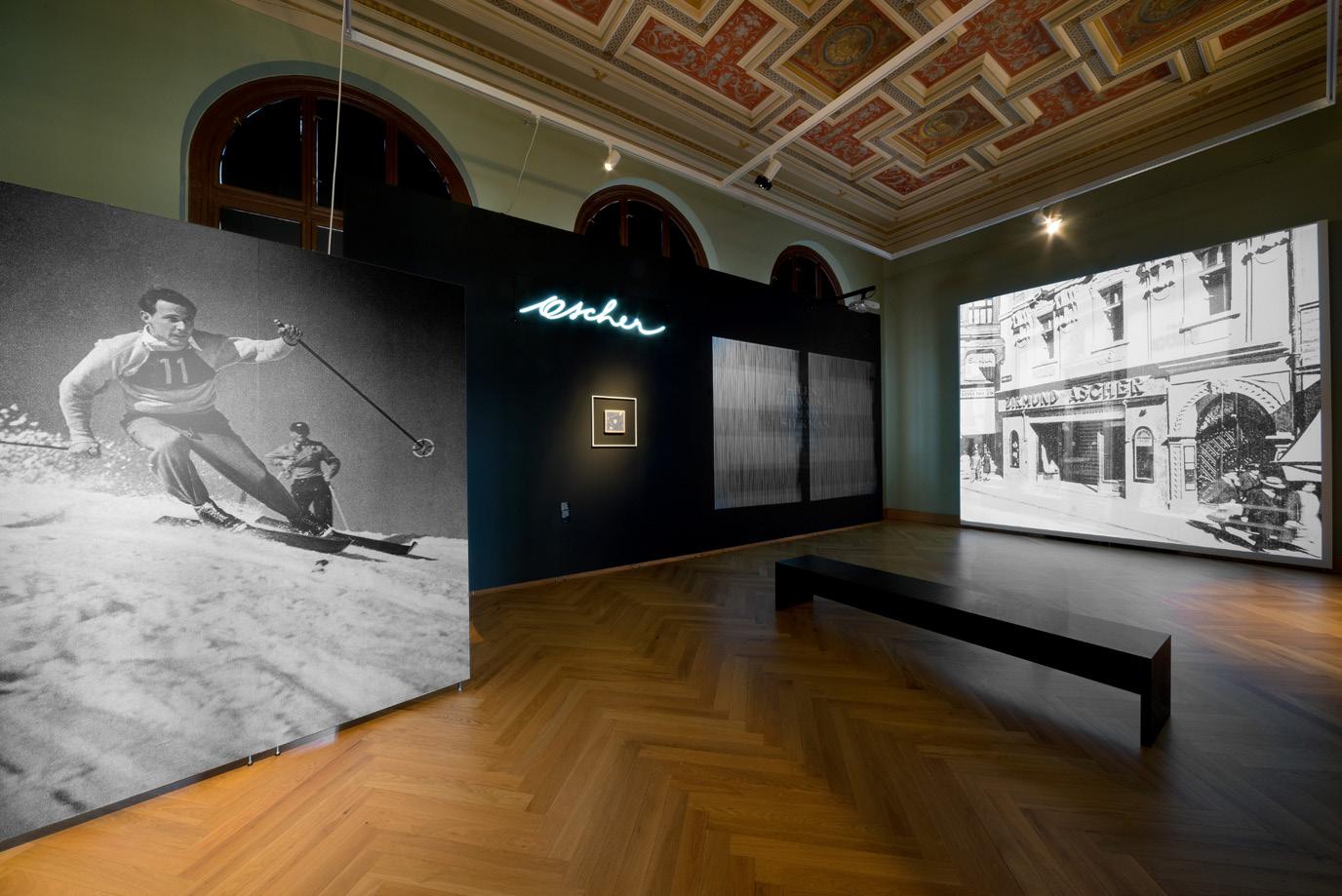
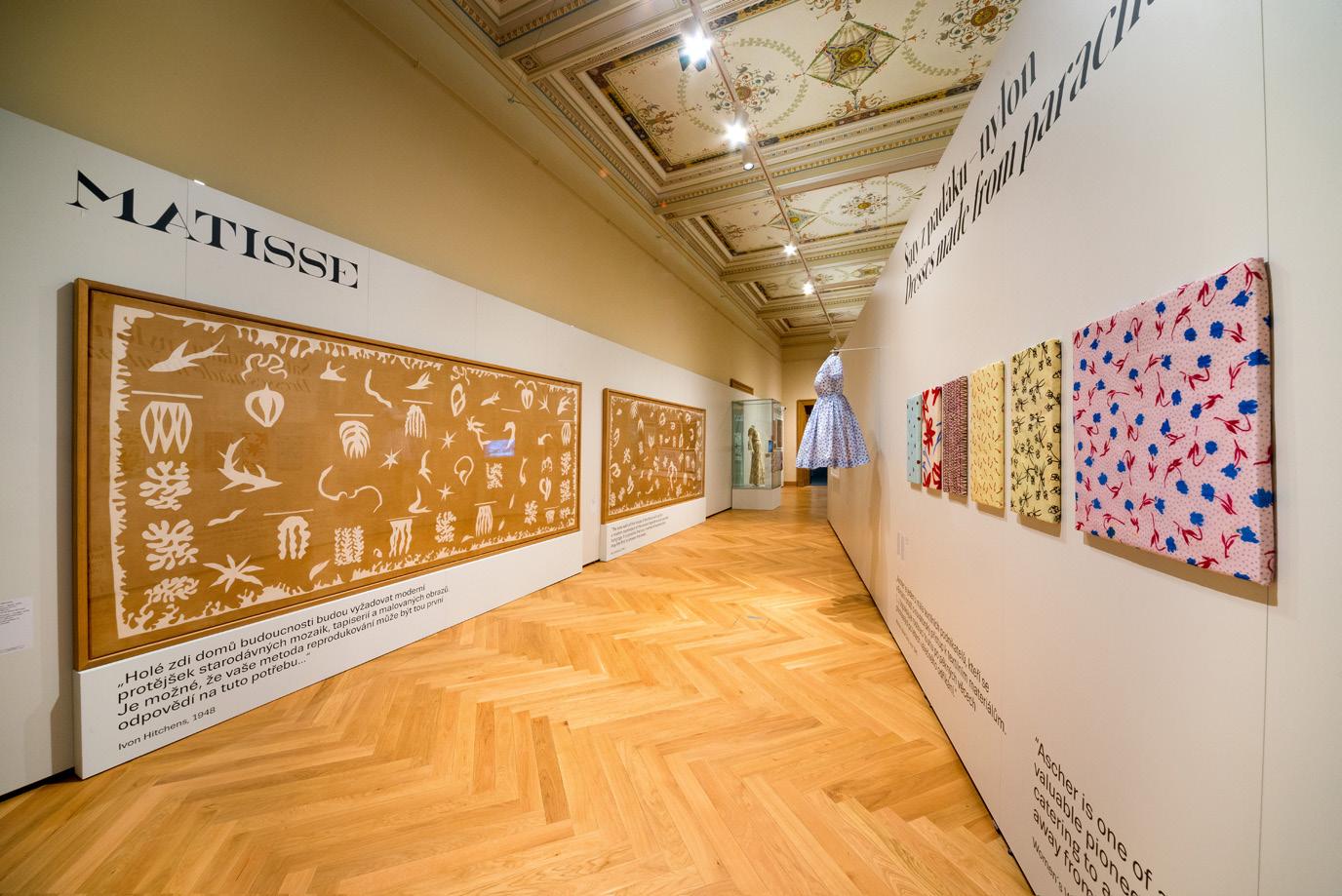
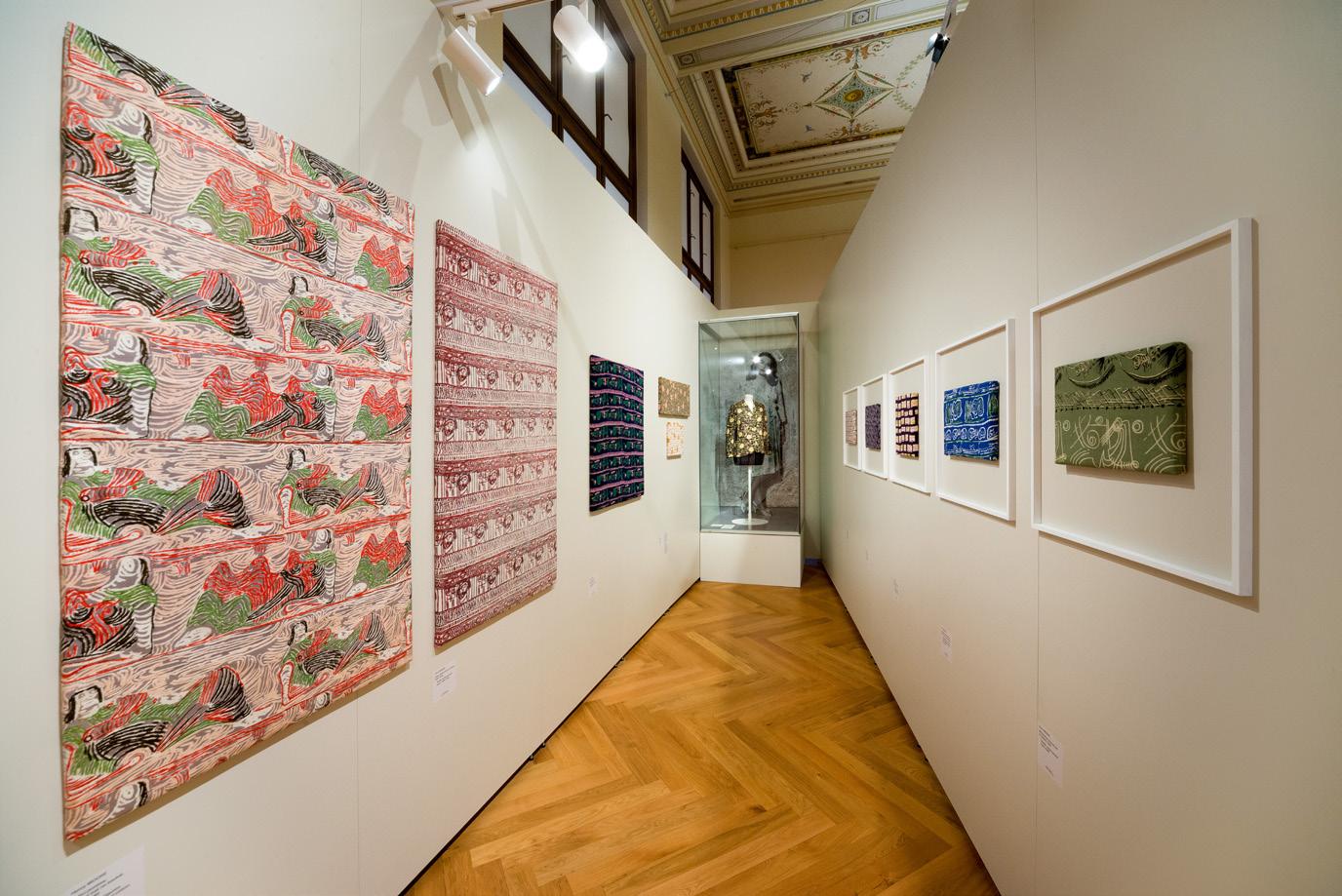
Fotos: © Peter Muntanion
Audio
The exhibition in Prague shows hundreds of exhibits - numerous fabrics as well as dresses, coats and blouses. In total, more than 300 wall elements of 3 m and 4 m height were used, including radius modules. A cinema with Mila-wall acoustic walls was also built. The design and layout of the exhibition presents itself at the highest level and is a perfect example of the flexibility of Mila-wall wall elements.
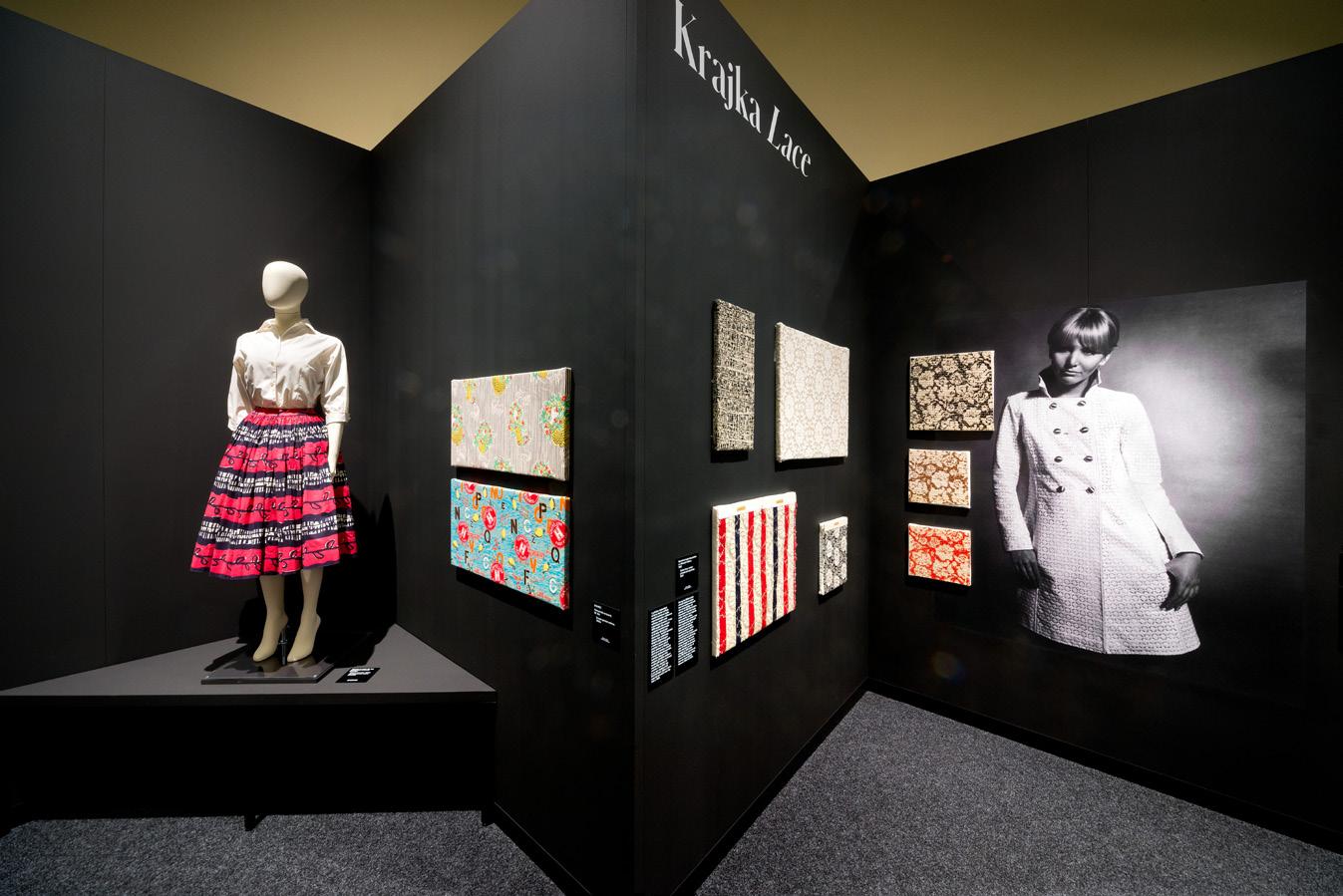
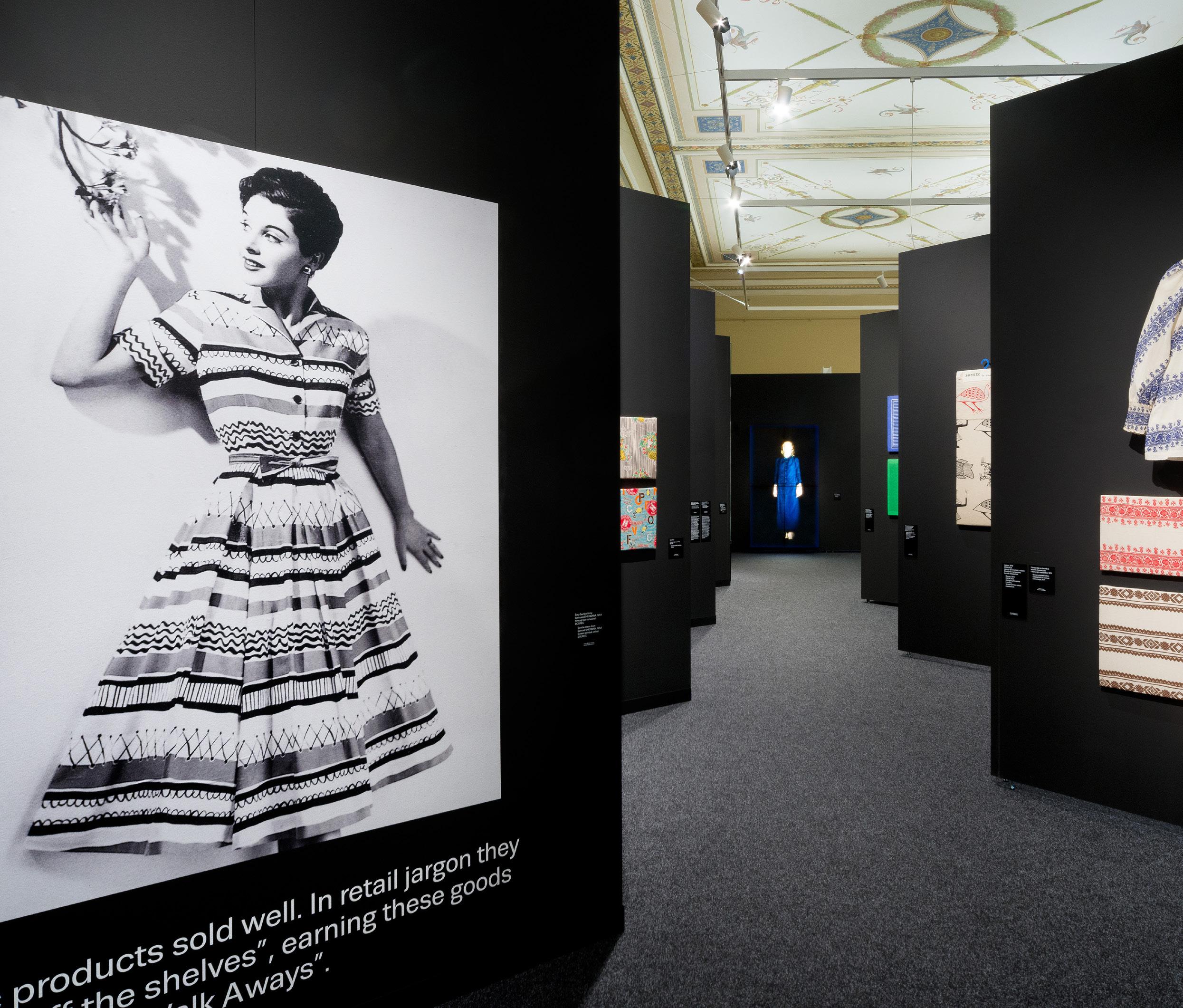
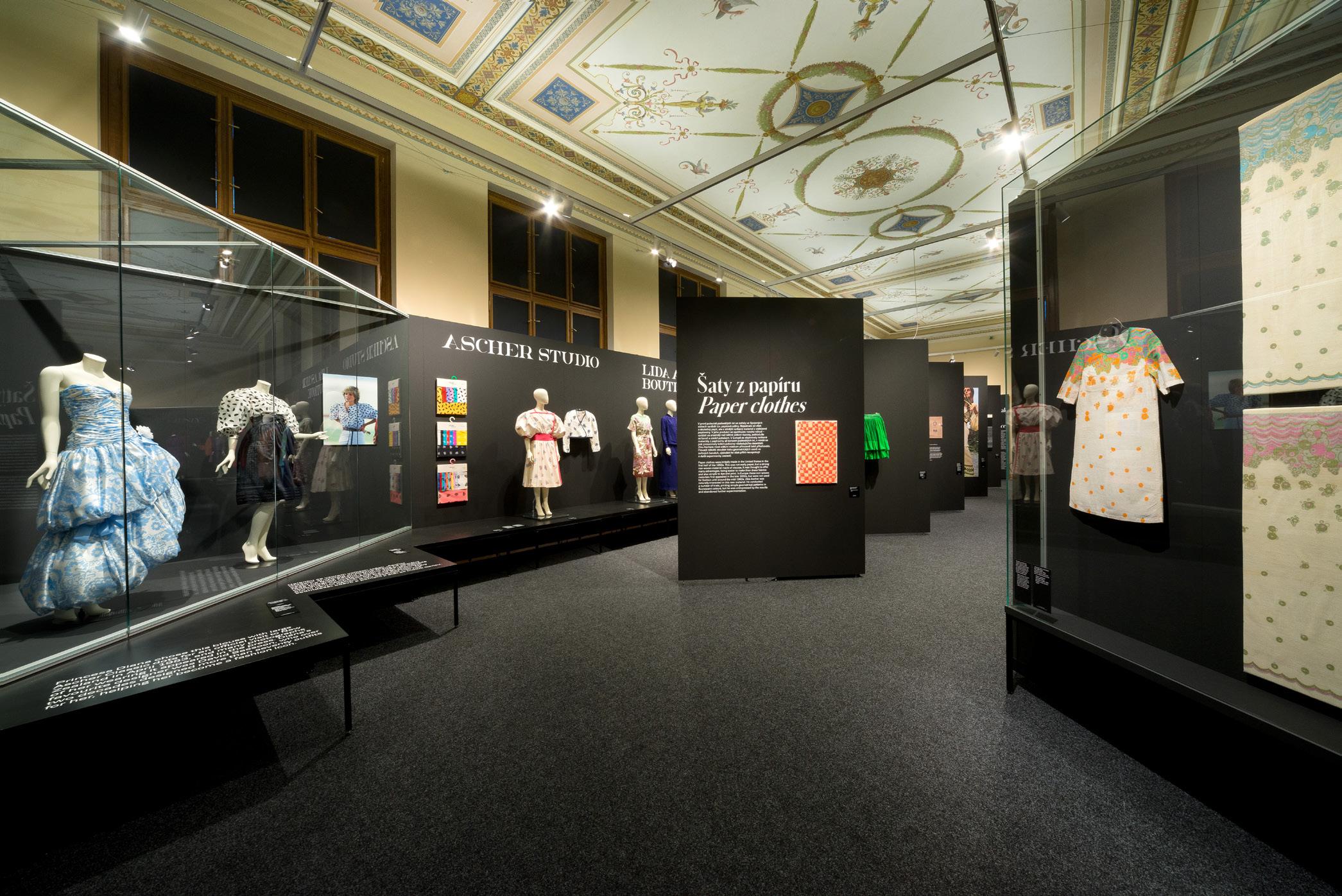
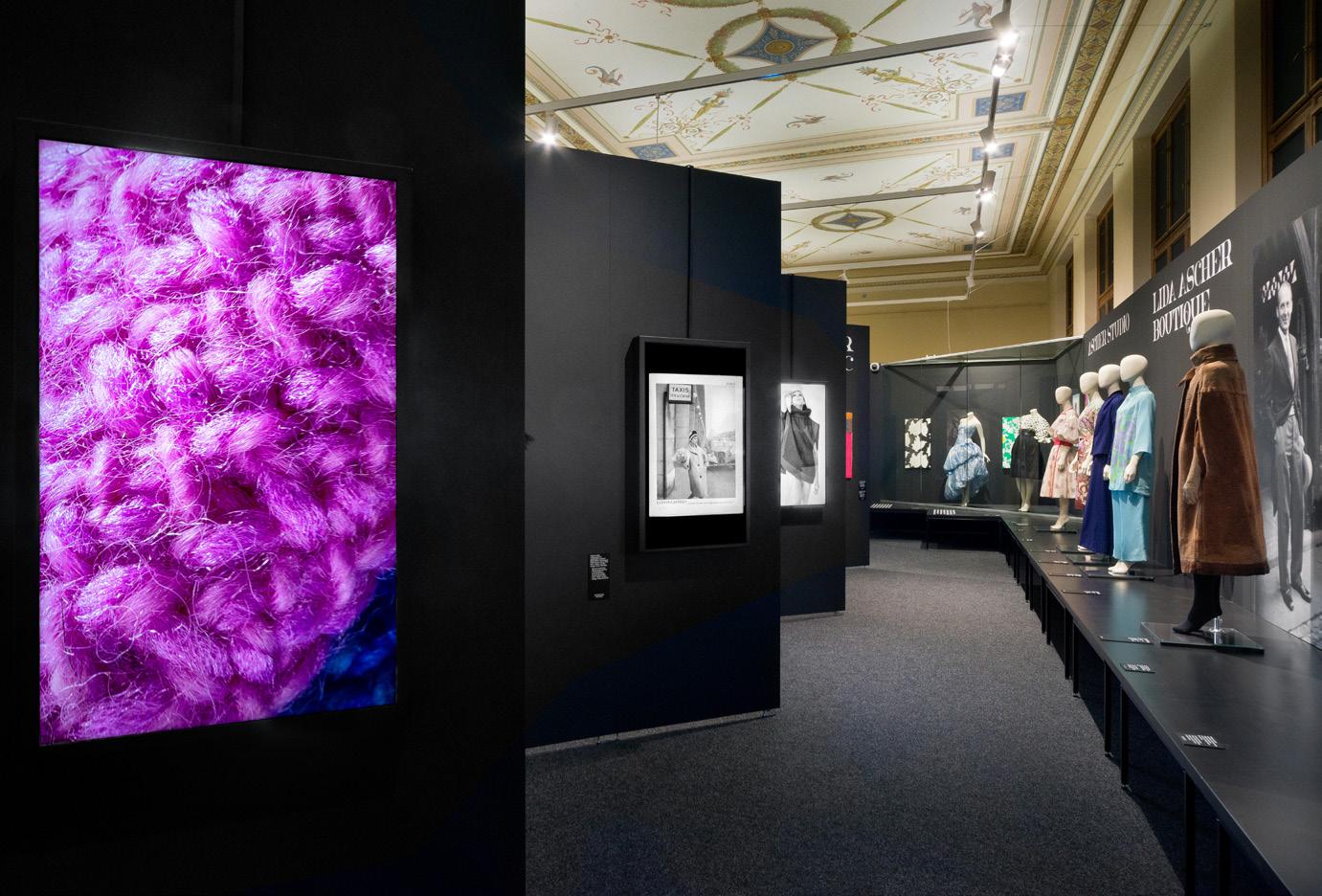
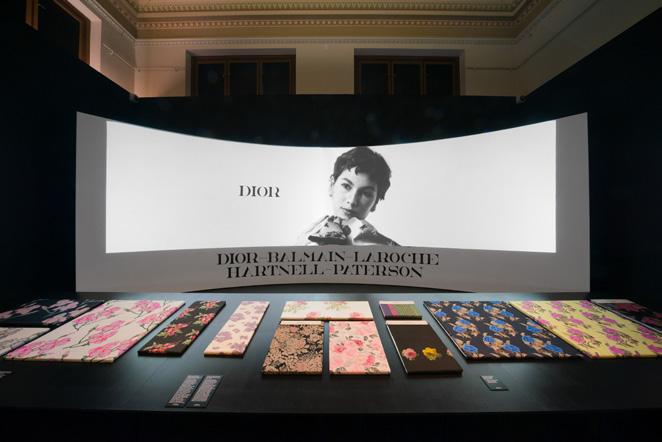
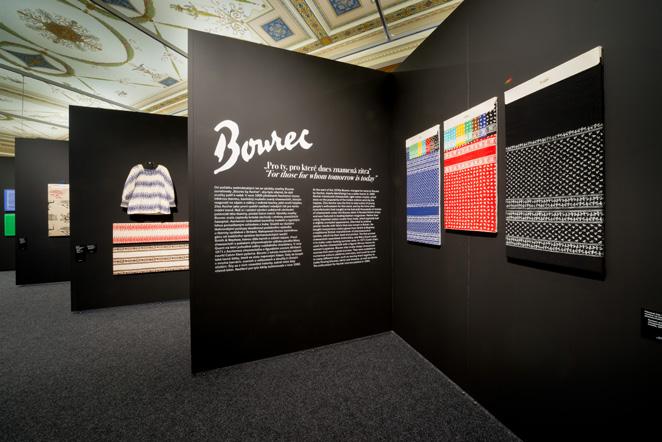
„The Mad Silkman“: Mila-wall modular construction technology in the UPM in Prague
"For the organization of exhibitions in the Museum of Decorative Arts it is important to have such an exhibition system that allows us to flexibly change the disposition for one or the other exhibition, a single system that meets all the parameters for
different exhibitions, is modular, variable, and compatible, and allows quick assembly. The result of our long search, which lasted more than a year, was the Mila-wall system from the manufacturer MBA".

MBA-Design & Display Produkt GmbH Siemensstrasse 32
72766 Reutlingen
Tel: +49 7121 1606-0 info@mba-worldwide.com www.mila-wall.com
Audio
The Mercedes-Benz Museum
Stuttgart, Germany – Tradition meets innovation
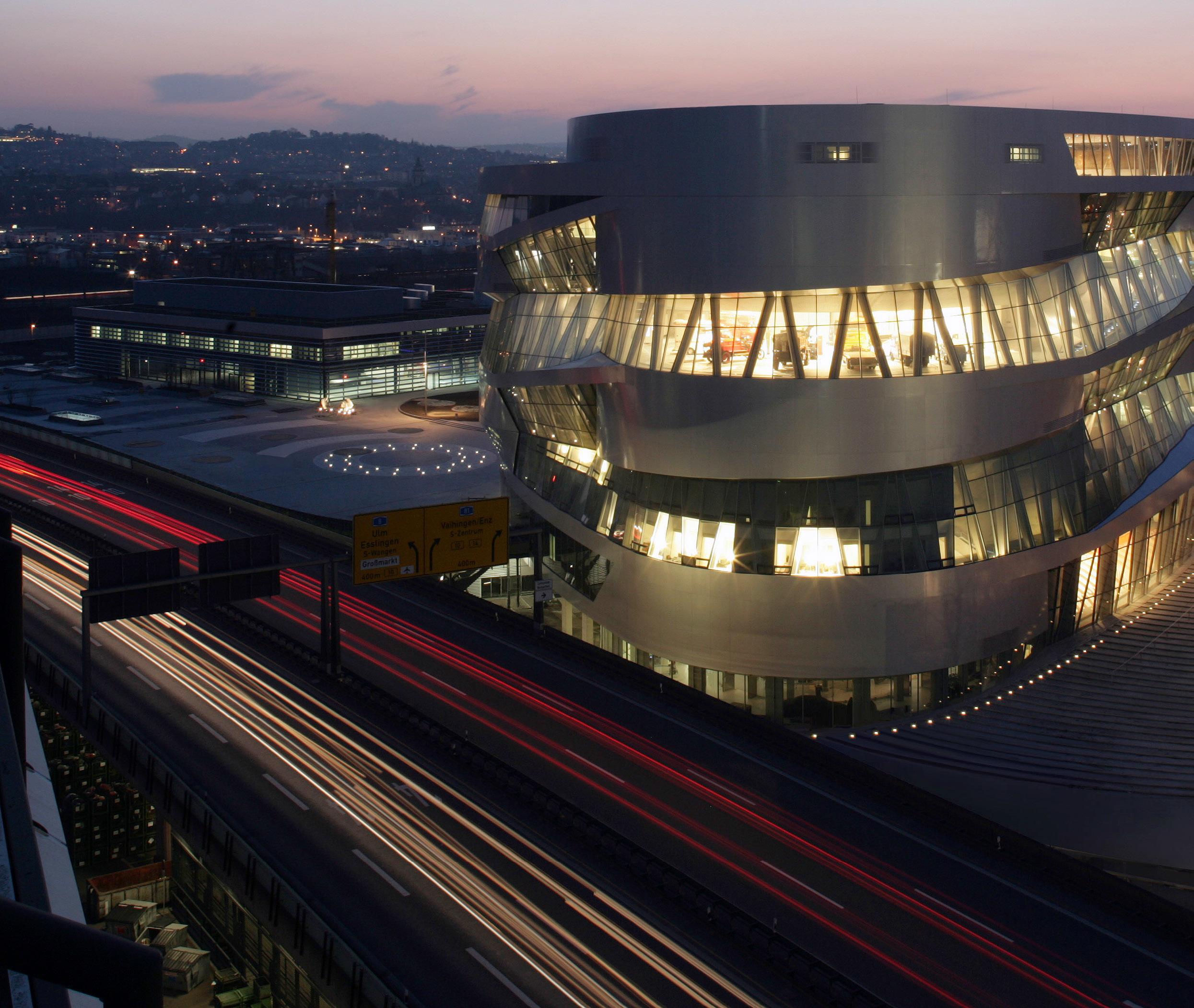
It is the only museum in the world that can document over 125 years of automobile history complete from the very first day. On nine levels covering 16,500 square metres, 160 vehicles and, in all, more than 1500 exhibits are on display. Following the principle, "The future is rooted in the past", the museum presents itself as a place of innovation.
The exhibition not only presents the fascinating origins of the Mercedes-Benz brand, it also affords illuminating insights into the future. This dual function is also reflected in the architecture of the Mercedes-Benz Museum, designed by Dutch architecture firm UNStudio van Berkel & Bos, Amster-
dam. The building’s interior is inspired by the double helix structure of the DNA spiral that carries the human genome. This in turn is closely connected with the vision of the Mercedes-Benz brand: to reinvent itself again and again.
Consummate design – The architecture of the Mercedes-Benz Museum
The Mercedes-Benz Museum, recipient of major architectural awards, makes more than 125 years of automotive history tangible. The building combines an elegant appearance with a unique structure based on a double helix. All aspects of this architecture are in flow, with no closed
rooms or straight walls. Ceilings span 33 metres without any supports, and each of the 1800 triangular window panes is unique.
Three architecture firms were instrumental in creating the Mercedes-Benz Museum: UNStudio van Berkel & Bos, Amsterdam, Netherlands, was responsible for the building's exterior design. HG Merz evolved the concept in close cooperation with the then DaimlerChrysler AG, from the initial invitation for tenders to detailed planning of the museum's design. DaimlerChrysler Immobilien GmbH (today Daimler Real Estate GmbH), as general contractor, was responsible for the museum's construction.
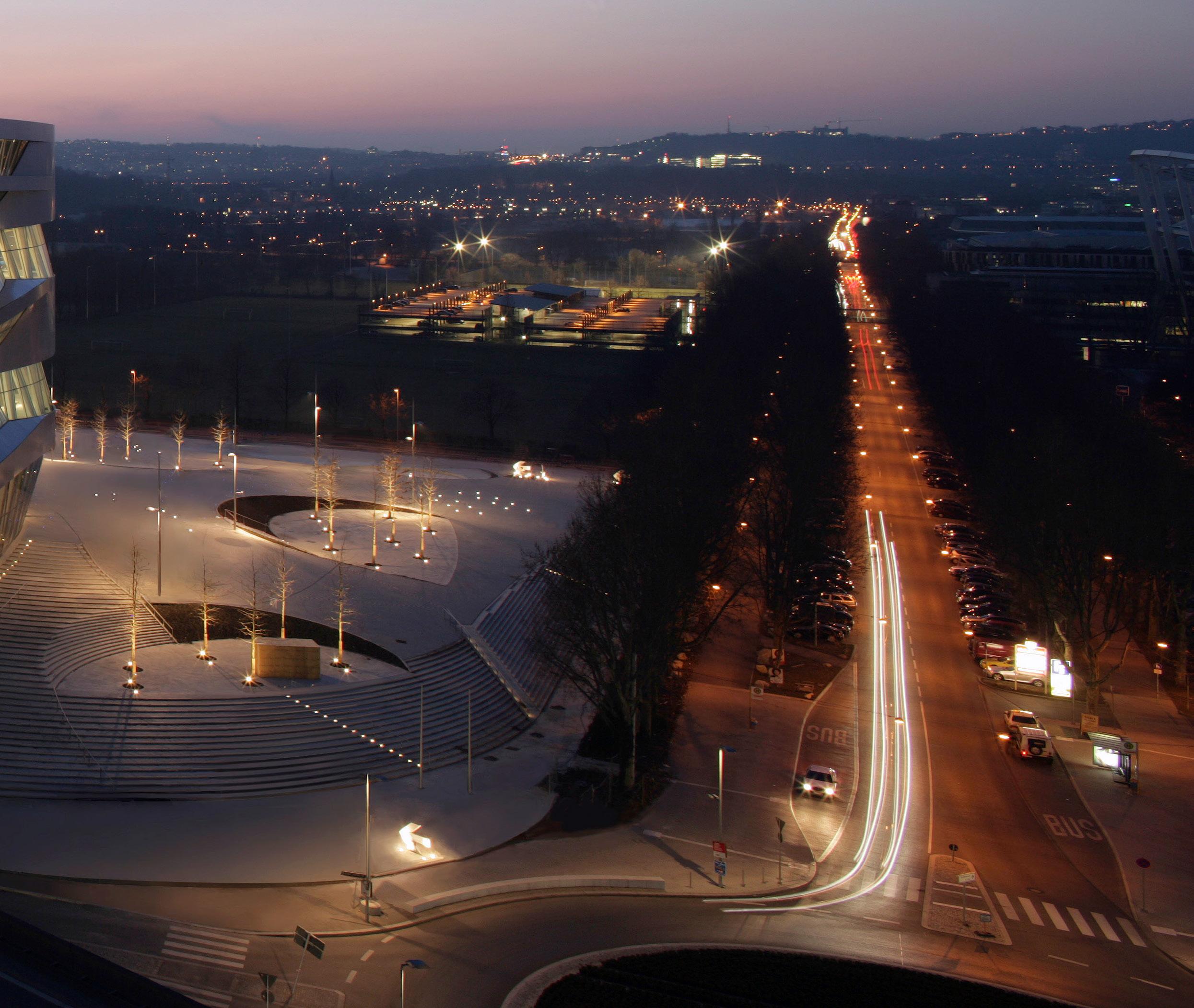
During the three-year gestation period of the building, the new Mercedes-Benz Museum was already an object of public attention. For the foundations of the 47.5-metre-tall building alone, 850 concrete and steel piles were driven into the ground. The schedule was tight. Work at the site proceeded in two shifts: 16 hours a day, six days a week.
The museum forms a link between the parent plant in Stuttgart-Untertürkheim and the Mercedes-Benz sales and service outlet. Surrounded by a hill six metres in height, the museum rises almost 50 metres into the sky. Its form at the same time harmonises with the hills and curves of the
Neckar Valley. The building acts as a portal: whether turning off federal highway B 14 from the Rems valley or the B 10 from the Neckar valley, visitors experience the museum as a key hub on their way towards town. Architect Ben van Berkel used these topographic conditions as the starting point for his planning.
The museum's shell consists of materials which are also used in the automotive industry – aluminium and glass. The building develops its visual impact depending on the weather conditions and the time of day: During the day, the interplay of the bright, light-reflecting aluminium panelling and the darker-looking window strips dominates,
while in the evening, when the Collection rooms are illuminated, this impression is reversed and lends the 110,000-tonne building an aura of weightlessness.
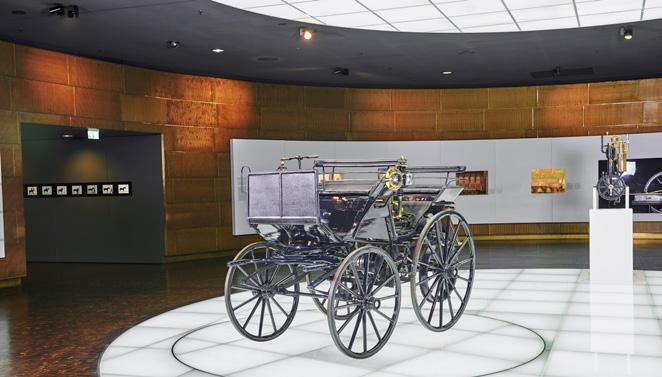
Audio
Mercedes-Benz Museum. © Daimler AG
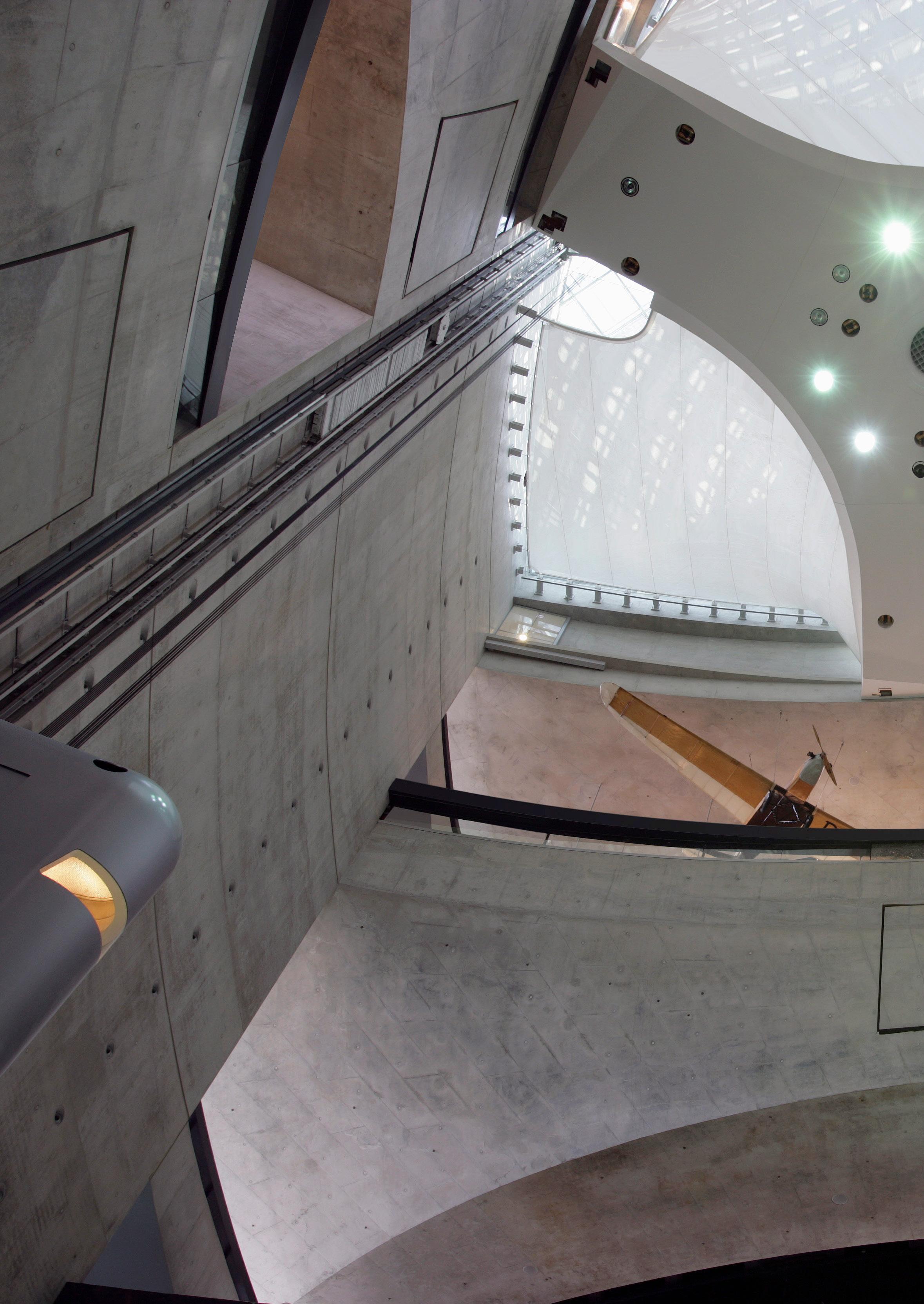
Van Berkel's initial outline sketch depicted a seemingly simple geometric figure consisting of three loops turning endlessly back into themselves. The result in the completed museum building: there are neither closed rooms nor straight walls, while horizontal and vertical surfaces flow gently into one another. Ceilings span 33 metres without any supports, and each of the 1800 triangular window panes is unique. The so-called twists – building elements incorporating two twists – are the most spectacular innovation in the building and determine its dynamic appearance. They serve an important function with regard to building statics and also link the different Collection rooms with each other. The twists emerge from the lift shafts as a vertical wall and then, leaning on the next lift shaft, spiral outwards in a gentle sweep. A single twist has a surface area of around 400 square metres and weighs about 2500 tonnes.
Numerous prizes and awards such as the "Golden Design Award of the Federal Republic of Germany 2008" or the architectural prizes "Exemplary Barrier-free Construction 2007" and "Concrete 2008" attest to the building's uniqueness. In 2009 the Mercedes-Benz Museum won the 2009 Hugo Häring Prize for "exemplary buildings in Baden-Württemberg", an award presented by the Baden-Württemberg regional association of the Association of German Architects.
The building itself continues to be a prime attraction. Special guided architectural tours are much in demand. Open guided architectural tours take place every Friday at 4 p.m. Guides specially trained by architects help the visitors to appreciate the fascination of the structure. An all-embracing concept for the future now is in the making: currently, planning is in progress to concentrate the activities of Mercedes-Benz Classic in Stuttgart. The intention is to relocate the Classic Center, currently located in Fellbach, a suburb of Stuttgart, to an extension site next to the Mercedes-Benz Museum. The future overall presence in the Neckarpark is then to be transformed into an international Mercedes-Benz brand centre where the past, present and future of the automobile can be experienced.
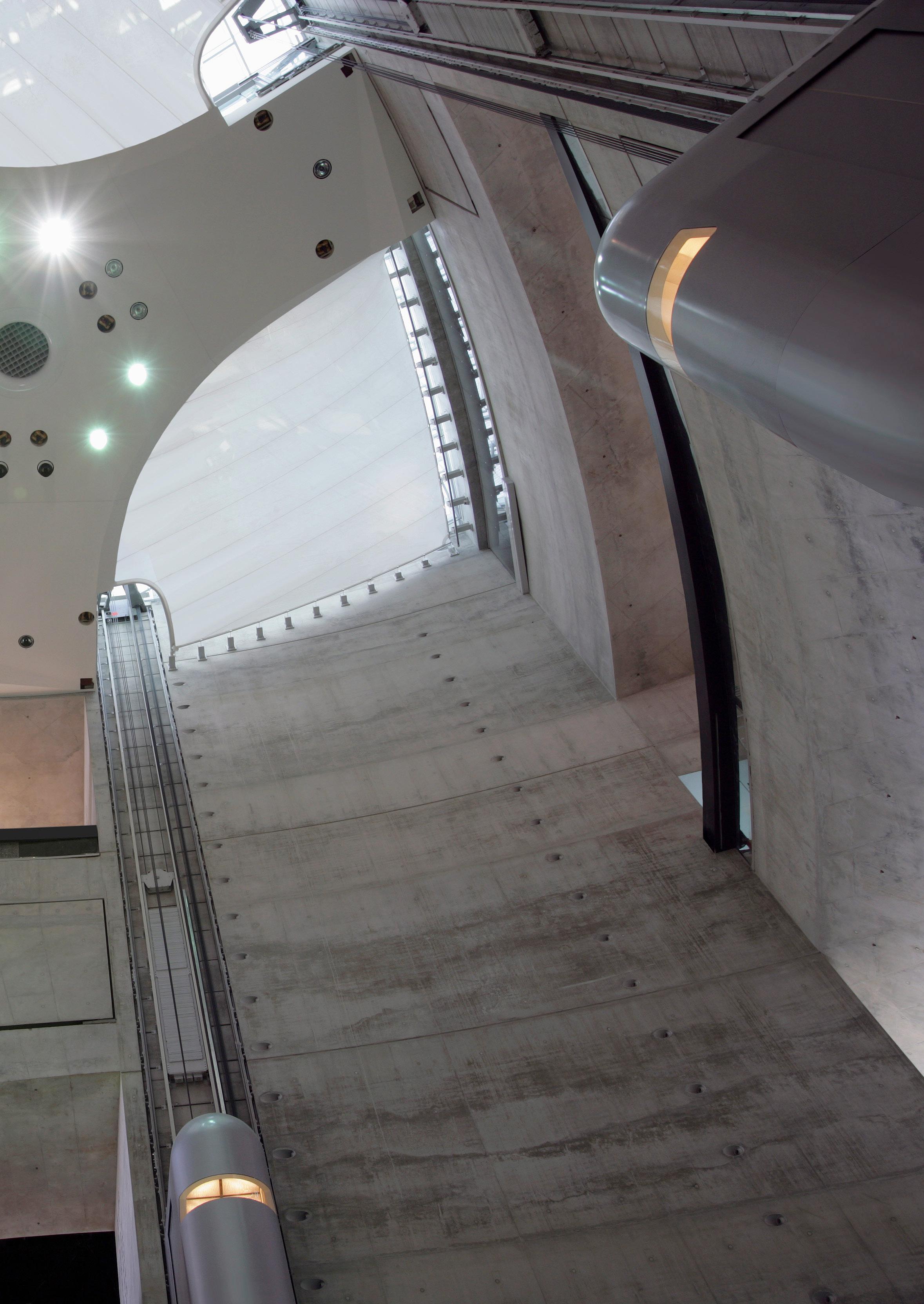
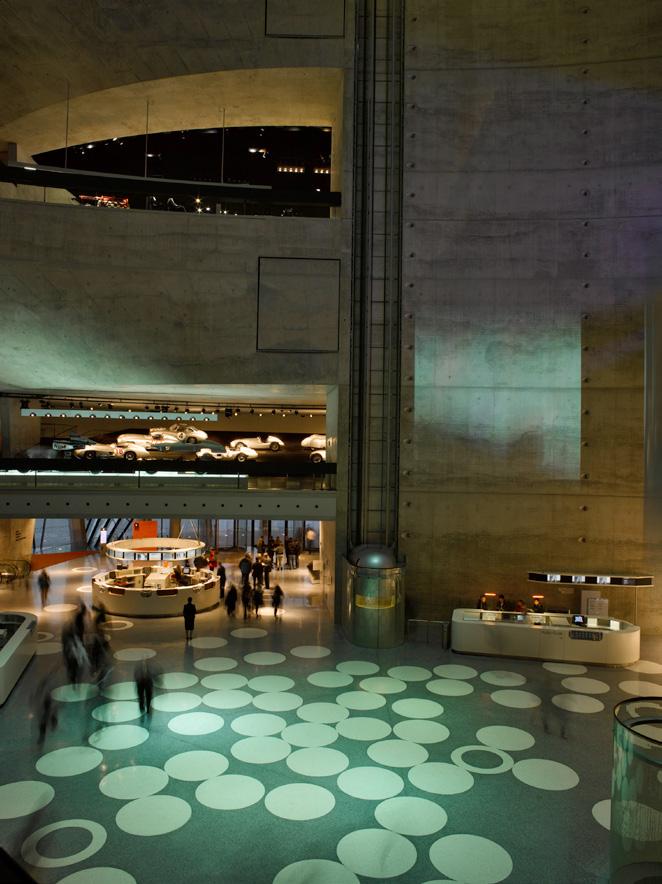
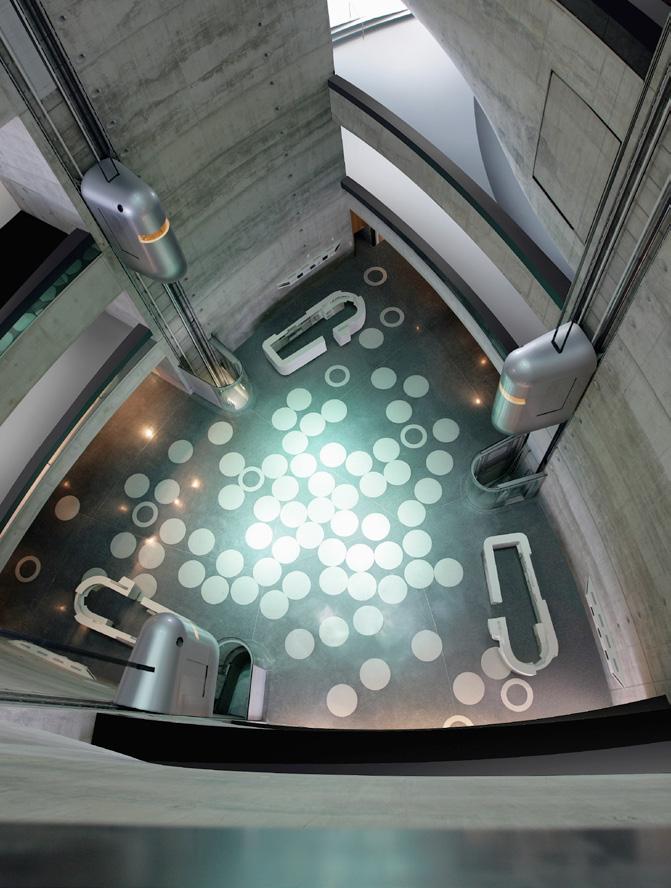
Mercedes-Benz Museum. © Daimler AG
Visitors experience a unique journey through automotive history. Beginning with the birth of the automobile in the year 1886, two tours gradually spiral their way down through the extensive collection back to the starting point.
The first of the tours consists of seven Legend rooms which narrate the chronological history of the brand. The second tour groups the vehicles on display into five separate Collection rooms, which thematically document the breadth and diversity of the collection and the brand portfolio. The visitor can switch from one circuit to the other at any time. Both tours end at a spectacularly staged banked curve, featuring racing cars and record-breakers representing an over 120-year motorsport tradition, and at "The Fascination of Technology" section, which shows research vehicles and original drafts from the design process of Mercedes-Benz.
Experiencing history by themes and epochs – Legend and Collection
The exhibition at the Mercedes-Benz Museum is divided into Legend and Collection rooms. The Legend rooms narrate the history of the Mercedes Benz brand chronologically. The Collection rooms are arranged thematically and document the wealth and diversity of the brand’s vehicles. The Fascination of Technology on Level 0 offers a glimpse into the working environment of the Mercedes-Benz designers.
Legend rooms: from the chronicler's perspective
Seven Legend rooms take visitors on a journey through automotive and period history, from the invention of the automobile to the present day. The rooms are linked with each other by an 80-metre ramp. With the exception of the first and last rooms, the Legend tour is designed in line with a consistent principle: along the outside of a curved, clover-leaf wall, a ramp sweeps down to the vehicles, which form the focal point of each display. While visitors can look down at the vehicles of each period to the right-hand side, a chronological display on their left featuring large images and exhibits illustrates key events in corporate history as seen against their specific world-historical backdrop.
Each Legend room presents a particular era by developing a central theme and makes the "Mercedes legend" tangible.
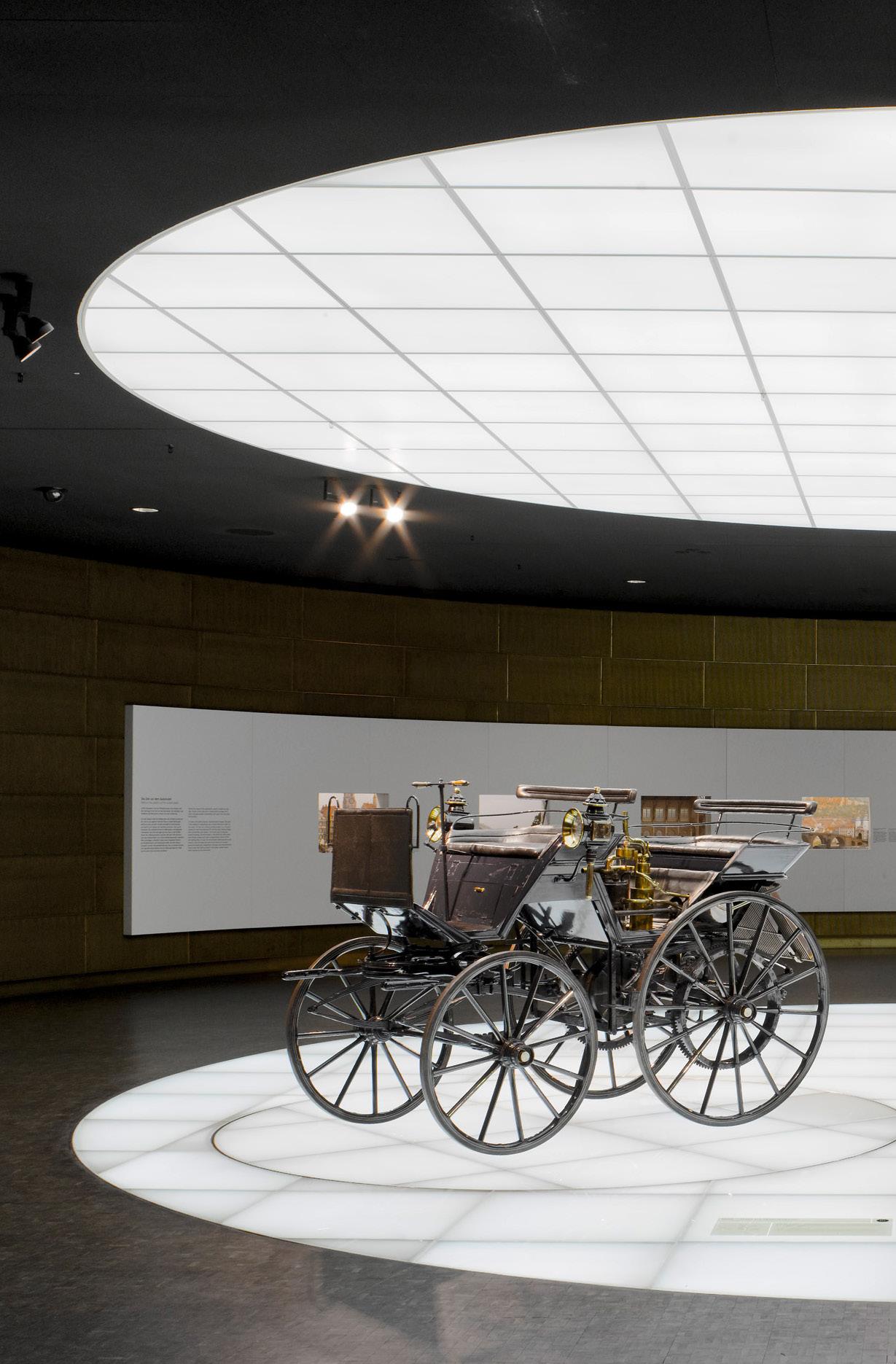
• Legend 1: Pioneers – The Invention of the Automobile, 1886 to 1900
• Legend 2: Mercedes – Birth of the Brand, 1900 to 1914
• Legend 3: Times of Change – Diesel and Supercharger, 1914 to 1945
• Legend 4: Post-war Miracle – Form and Diversity, 1945 to 1960
• Legend 5: Visionaries – Safety and Environment, 1960 to 1982
• Legend 6: New Start –The Road to Emission-free Mobility
• Legend 7: Silver Arrows – Races & Records
Collection rooms: thematic layout
The generously designed, bright daylight-lit Collection rooms accommodate a large number of vehicles. Buses, taxis, trucks,
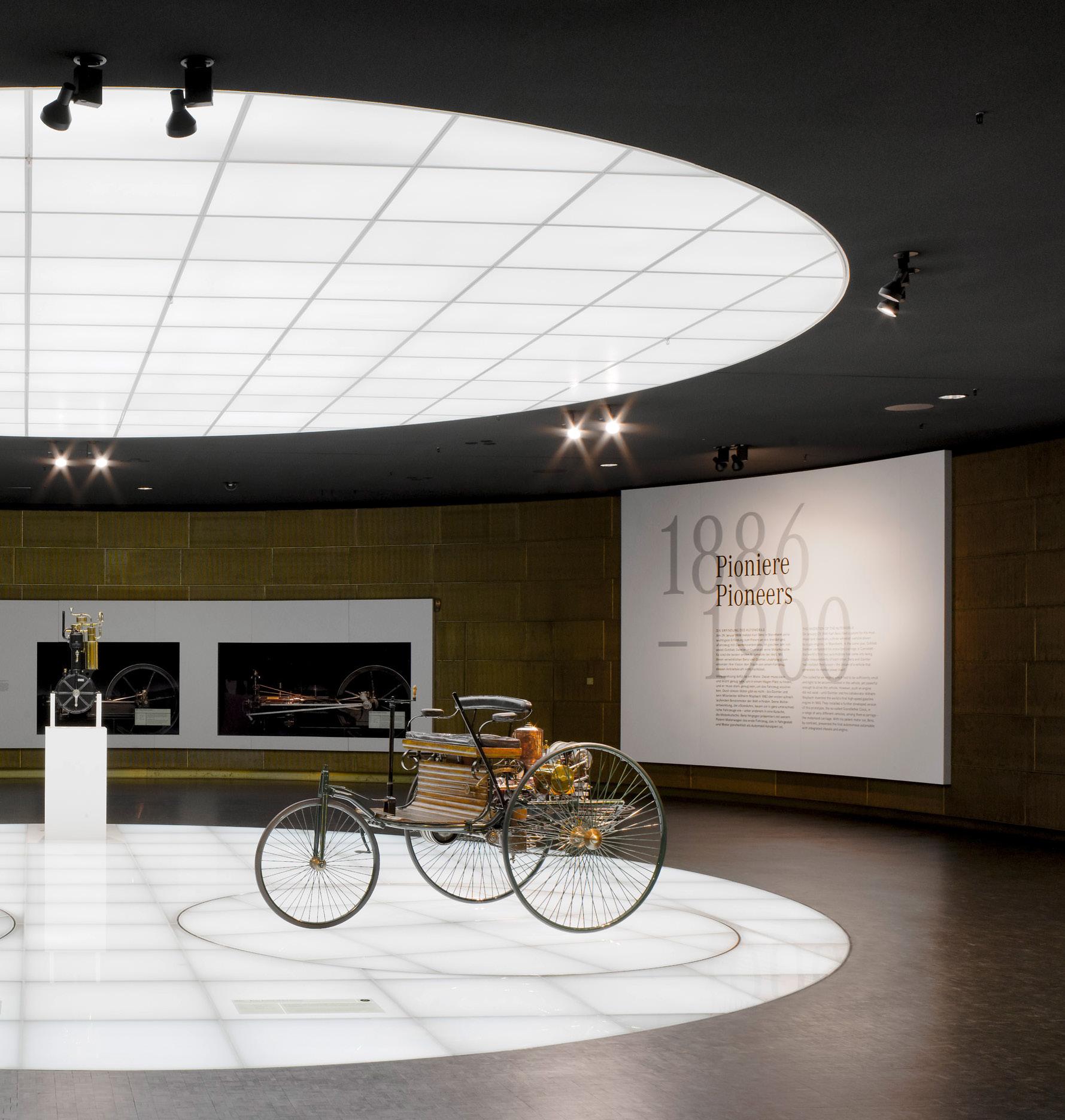
fire-fighting vehicles and ambulances, along with celebrities' vehicles, underscore the diversity of the brand's products. The My Mercedes-Benz gallery room hosts temporary special exhibitions.
Discreet floor graphics reminiscent of road markings indicate the topic of each Collection room and the direction to be taken through the vehicle layout. The vehicles in the Gallery of Helpers are all oriented
towards a focal point in the centre of the space, while the exhibits in the Gallery of Celebrities are displayed on high-quality wooden plinths. Alongside the ramp linking each Legend tour to one of the Collection rooms is a glass showcase, viewable from both sides. On the outside it displays model vehicles, on the inside smaller exhibits.
A "micro-cinema" also shows films illustrating the topic of each Collection room.
Benz Patent-Motorwagen (1886); Location: Mythos 1; Mercedes-Benz Museum / The Benz Patent-Motorwagen is the world's first gasoline-powered automobile. Unlike Daimler's motorized carriage, the motor car - here a replica - is an independent unit consisting of chassis and engine. Carl Benz designed it as a three-wheeler because he was not satisfied with the steering systems that were common for four-wheeled vehicles in 1886. Cylinder 1; Displacement 954 cm³; Power 0.75 hp (0.55 kW); At 400 rpm Mercedes-Benz Museum. © Daimler AG
Audio
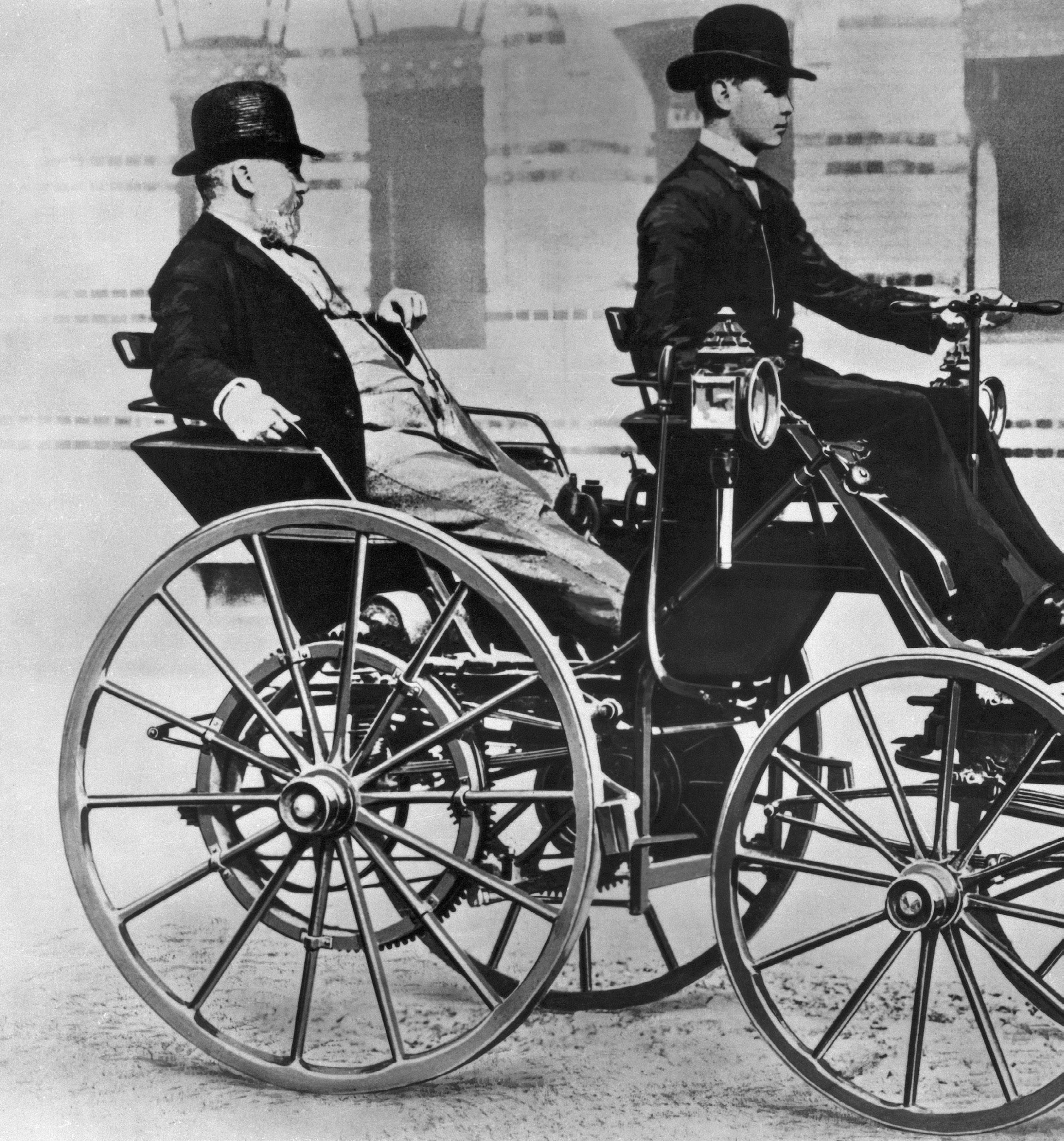
Gottlieb Daimler:
A pioneer in global mobility
His very last era was once again nothing shy of success as Gottlieb Daimler invented the high-speed petrol engine in 1883/1884. In 1885, he utilised the new powertrain in the “Reitwagen” (riding car) – the world’s
first motorised two-wheeler. And in 1886, he turned a horse-drawn carriage into the first four-wheeled automobile with his engine. Daimler-Motoren-Gesellschaft (DMG) was founded in Cannstatt in 1890, and in the space of just ten years, it became the world’s leading manufacturer of luxury cars. In April 1900, the products were given the
legendary name “Mercedes” – Gottlieb Daimler, sadly, was not around to witness this as he died of a heart condition on 6 March 1900. His last twenty years were well spent, however, during which time he achieved many great things together with engineer Wilhelm Maybach. One very significant innovation was the high-speed
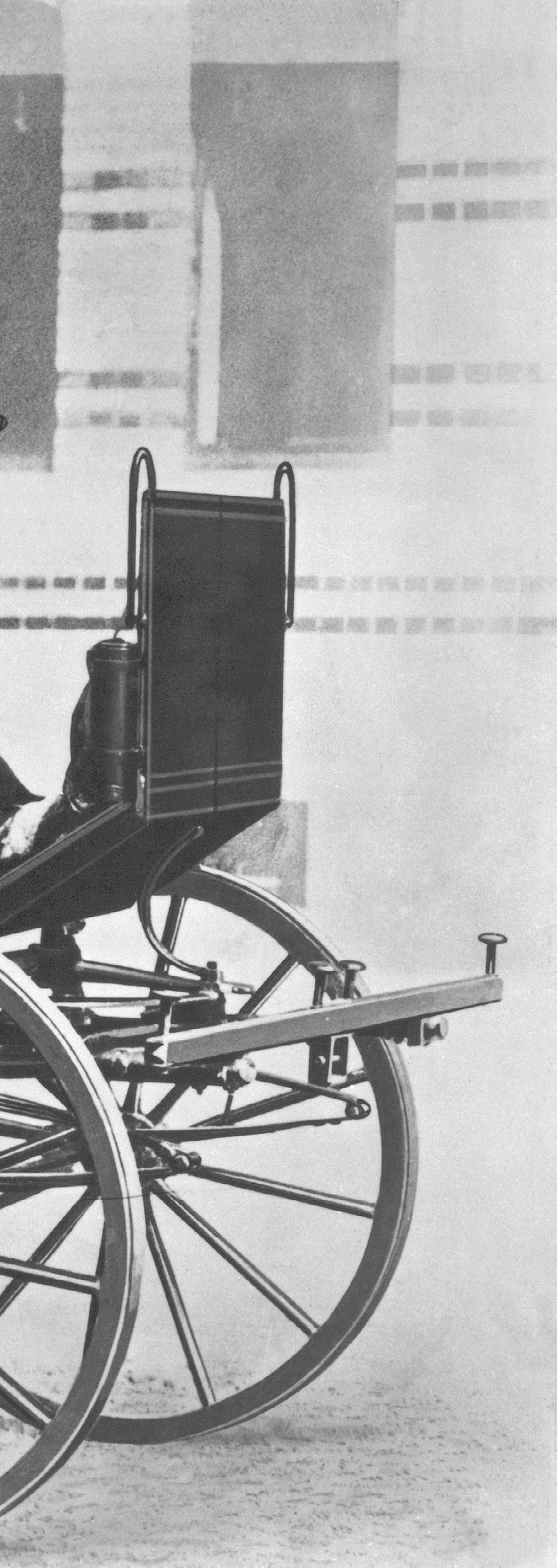
From top manager to start-up founder
Gottlieb Daimler was 48 years old when he set up his experimental workshop in the greenhouse of his villa in Cannstatt, and started working on the high-speed, four-stroke engine in the summer of 1882. At this time, he had already made a name for himself as he could look back on a successful career as an engineer and manager. His most recent position was as technical director and board member of Gasmotoren-Fabrik Deutz AG. The son of a baker, Gottlieb was born on 17 March 1834 in Schorndorf, Germany and later enjoyed an excellent technical education, including earning a degree in mechanical engineering, which he used as a solid starting point to build his career. The inventor was also very cosmopolitan as he sought to gain valuable practical experience in France and Great Britain at a young age. During his time working for Deutz, he also visited
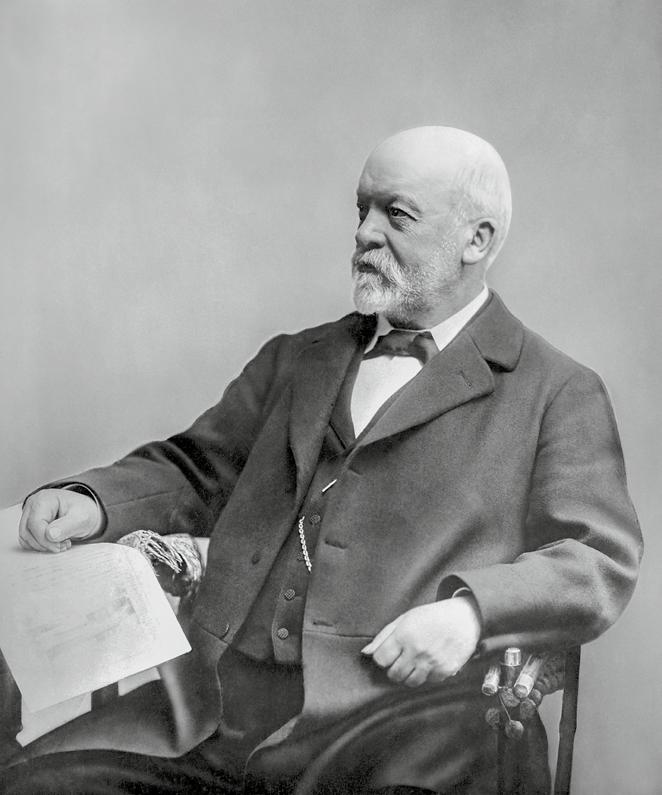
Russia, attended the World Exhibitions in Paris and Chicago in 1889 and 1893, respectively, and corresponded with his French business partner Louise Sarazin in her native language.
petrol engine in 1886, which ultimately made the Daimler name synonymous with inventing the automobile. Carl Benz, meanwhile, was also busy at this time presenting his patent motor car.
In 1886, Gottlieb Daimler built his first four-wheeled automobile known as the “motor carriage”. The photo shows him inside the vehicle being chauffeured by his son Adolf.
Gottlieb Daimler (17 March 1834 to 6 March 1900).
Gottlieb Daimler memorial site in Stuttgart-Bad Cannstatt with the reconstructed experimental workshop of mobility pioneer Gottlieb Daimler.
Photos: © Mercedes-Benz AG
After leaving Gasmotoren-Fabrik Deutz in late 1881, the then top manager could have easily taken another well-paid management position elsewhere. Instead, he took a bold risk to become an entrepreneur himself and founded what would now be called a “disruptive” start-up: his goal was nothing less than to revolutionise mobility on land, water and in the air. To this end, a powerful and lightweight yet reliable engine was the key. Carl Benz was also pursuing a visionary approach but, unlike Daimler, did not focus on developing a universal engine as he instead had his eyes set on achieving widespread mobility with the automobile. The general public was initially sceptical to these ideas and often rejected them. Audio
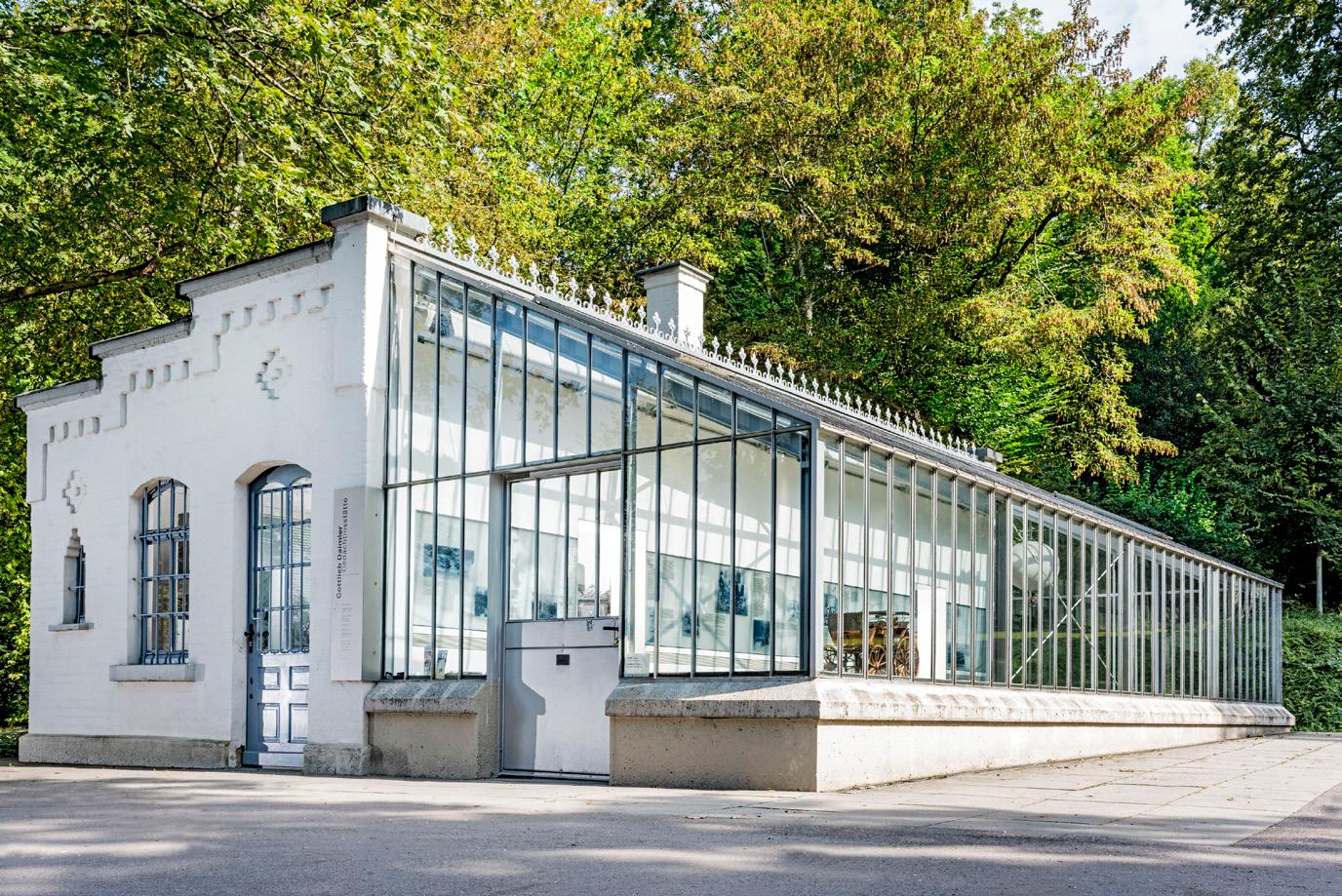
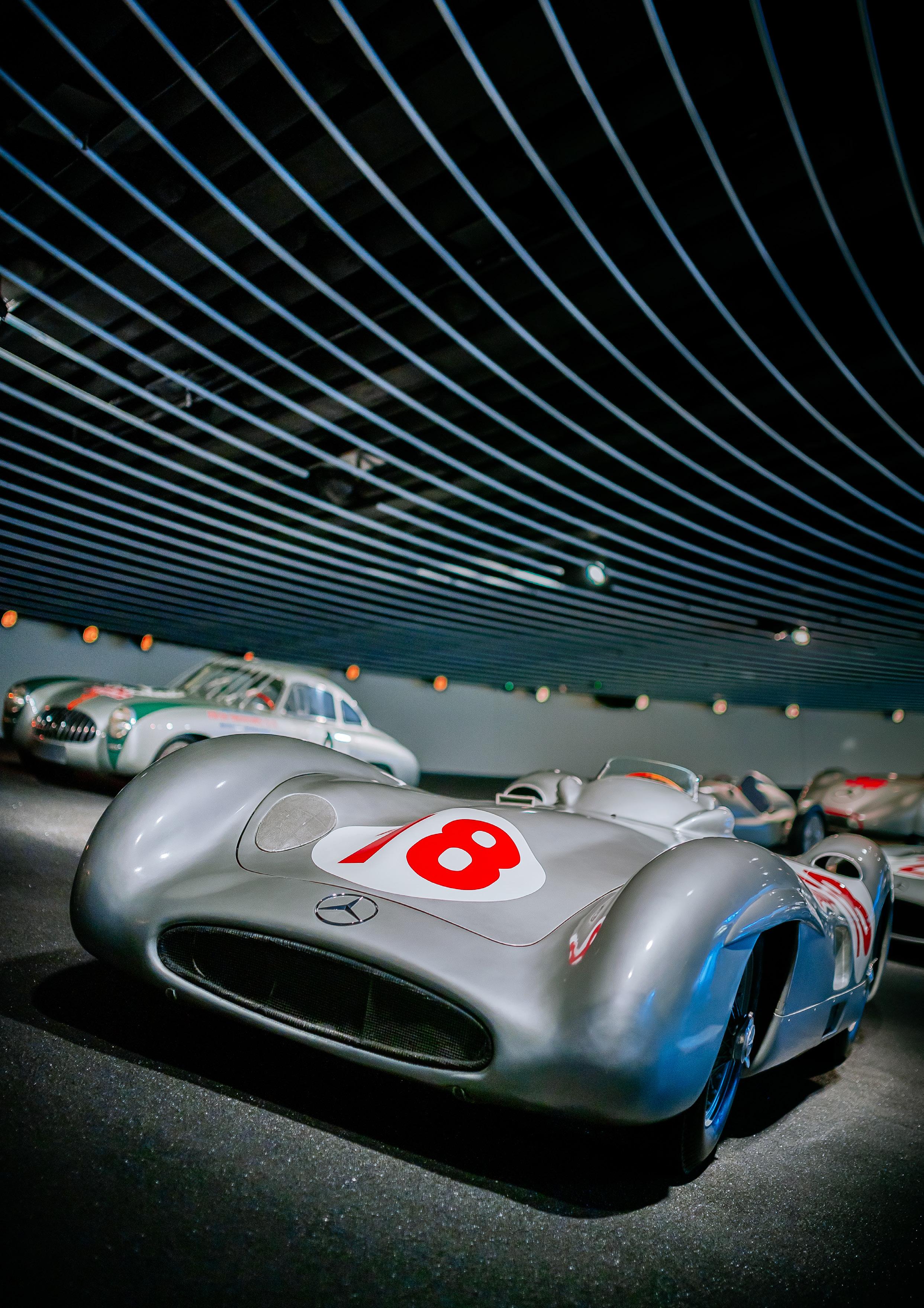
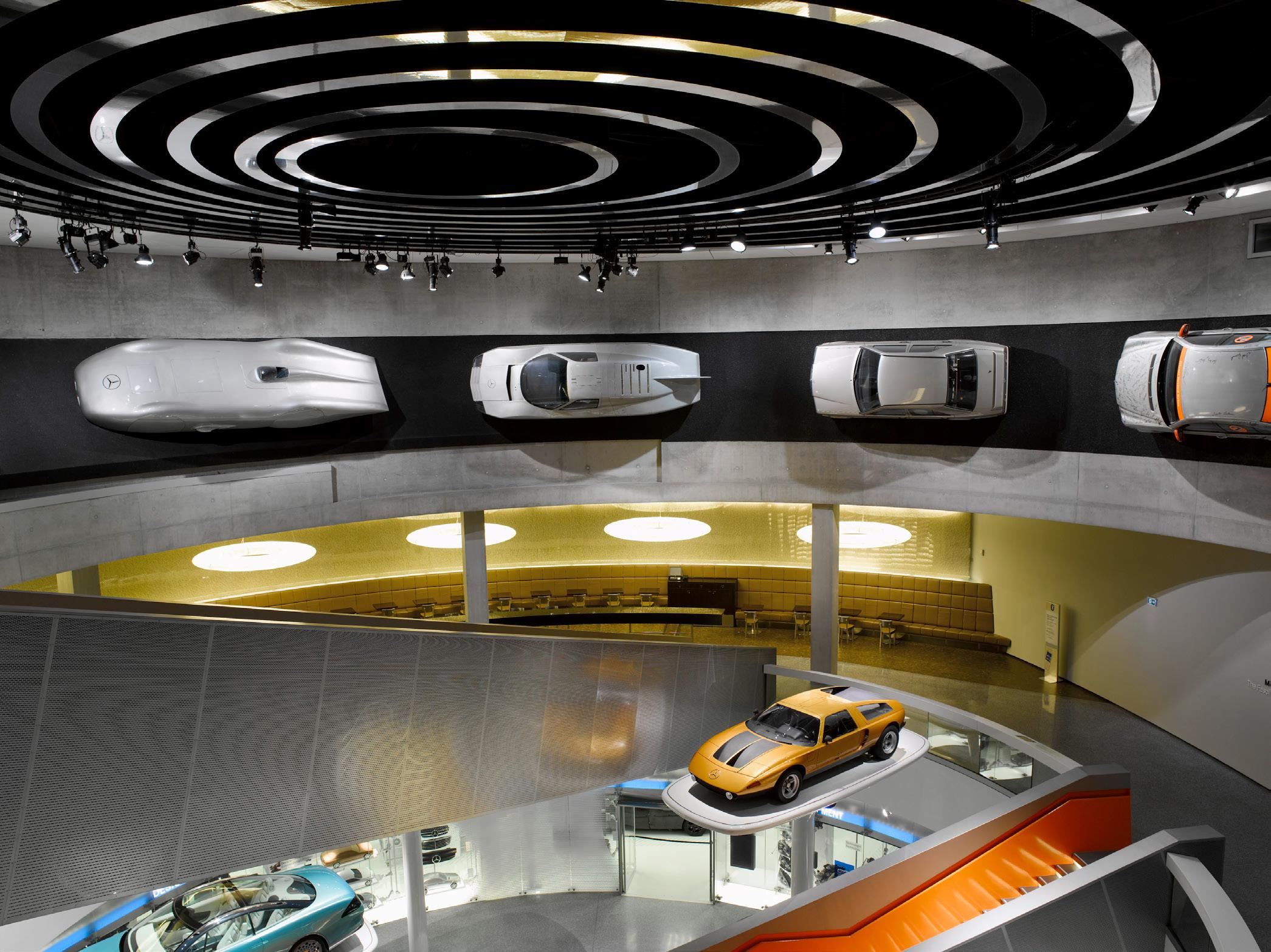
Emotional finale at the banked curve
Both the Legend and Collection tours end up at the "Silver Arrows – Races & Records" display, where a steep banked curve stands for the magic moments of the Mercedes-Benz motorsport annals. Legend 7 is the emotional finale to the museum tour and invites visitors to linger a while. The visitor can first take a seat on a grandstand opposite the banked curve, either to savour the impressive overall image or to view film footage of historic motor races shown on six different monitors. A "racing tunnel" then leads to the Legend room "Races & Records", where exciting racing cars and original memorabilia from famous racing drivers are on display. Two racing
Mercedes-Benz 2.5-liter streamlined racing car W 196 R; Room: Mythos 7; Mercedes-Benz returns to Grand Prix racing with the W 196 R streamlined car. At the first race of the new Formula 1 cars on July 4, 1954 in Reims, Juan Manuel Fangio and Karl Kling landed a one-two victory. Fangio ends the season as world champion. With the improved version of the streamlined car, he wins the 1955 Italian Grand Prix and is once again world champion at the end of the season. Cylinder 8, Displacement 2497 cm³, Output 290 hp (213 kW). Mercedes-Benz Museum. © Daimler AG
simulators also are on hand: the four-minute high-speed drive conveys the excitement of motorsport in a most impressive way. The banked curve gradually becomes a spectacular vertical wall on which inimitable record-breaking cars are mounted. The display includes the record-breaking W 125 of 1938, which posted the highest speed ever attained on a public road (432.7 km/h), and the Solarmobile which won the Tour de
Sol from Lake Constance to Lake Geneva in the mid-1980s. In addition, five large platforms present experimental vehicles past and present. These exhibits link the museum tour with the Fascination of Technology display area, which showcases the development of design at Mercedes-Benz.
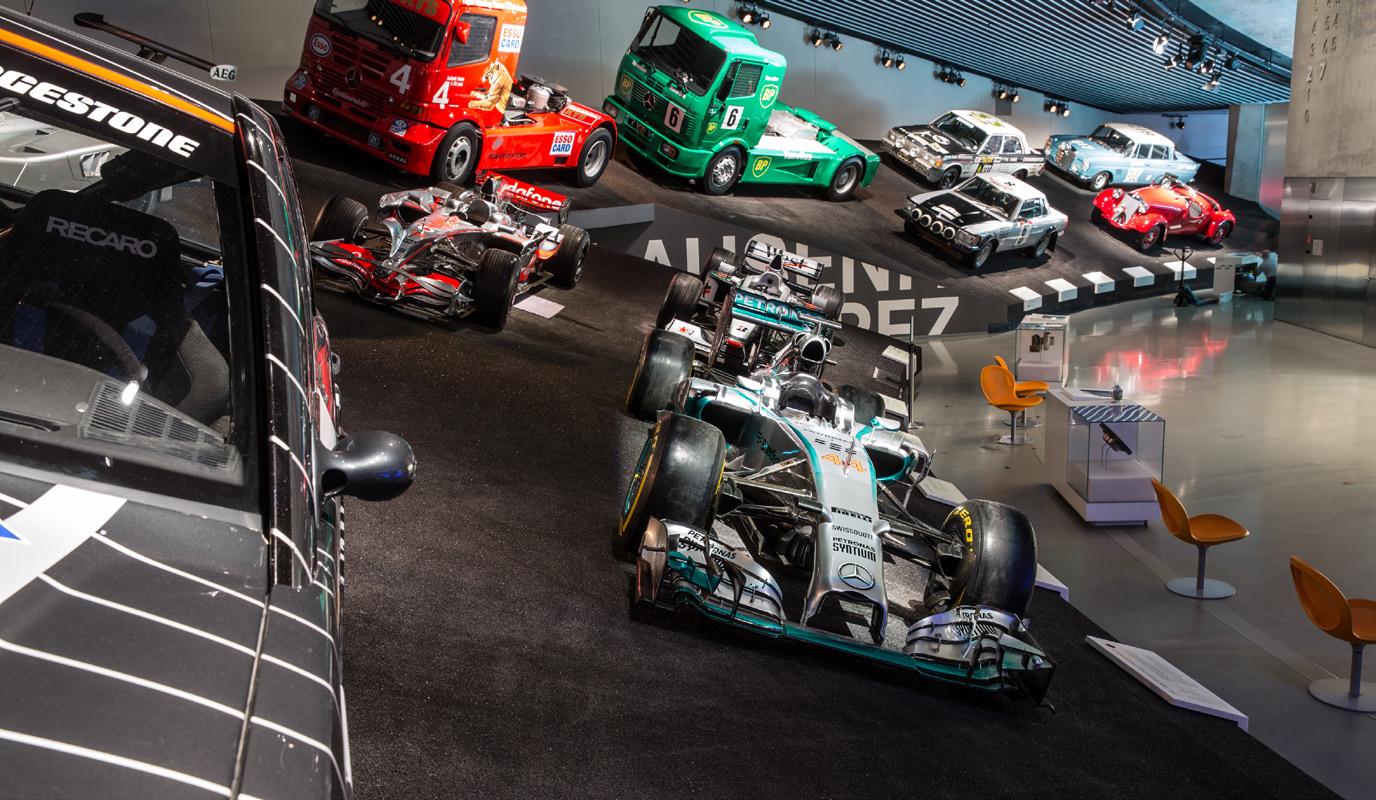
Audio
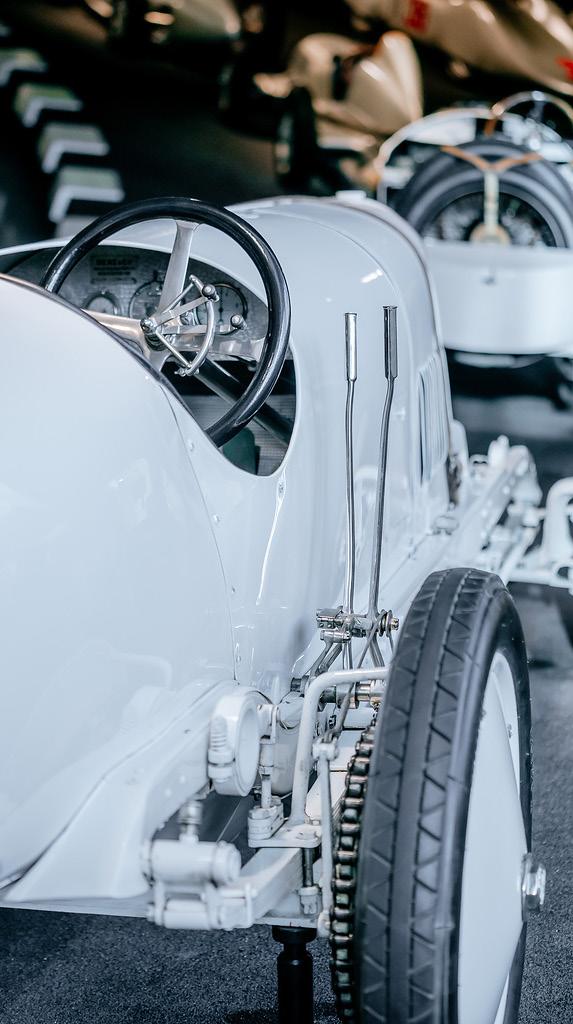
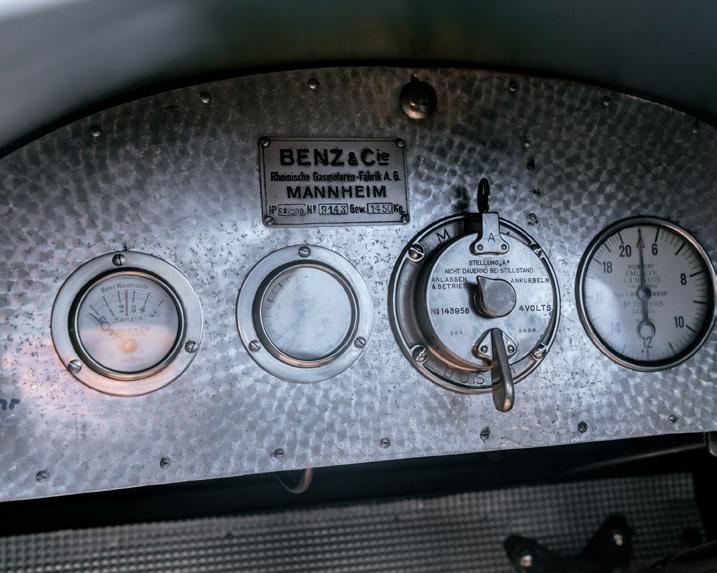
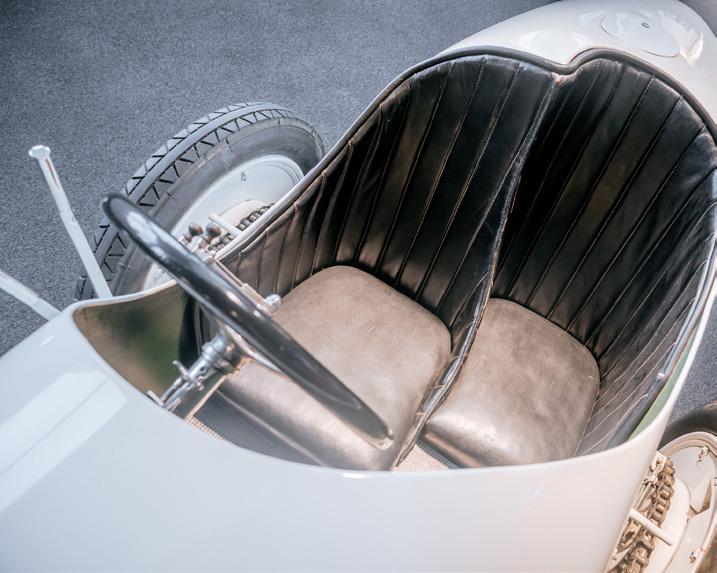
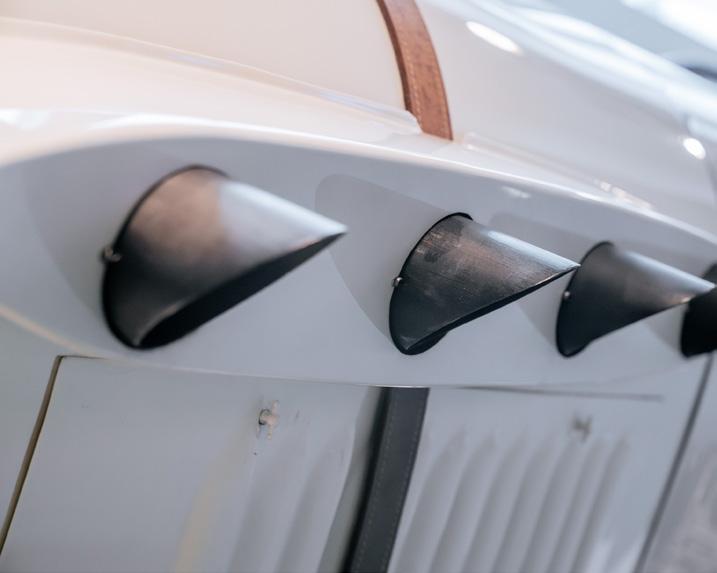
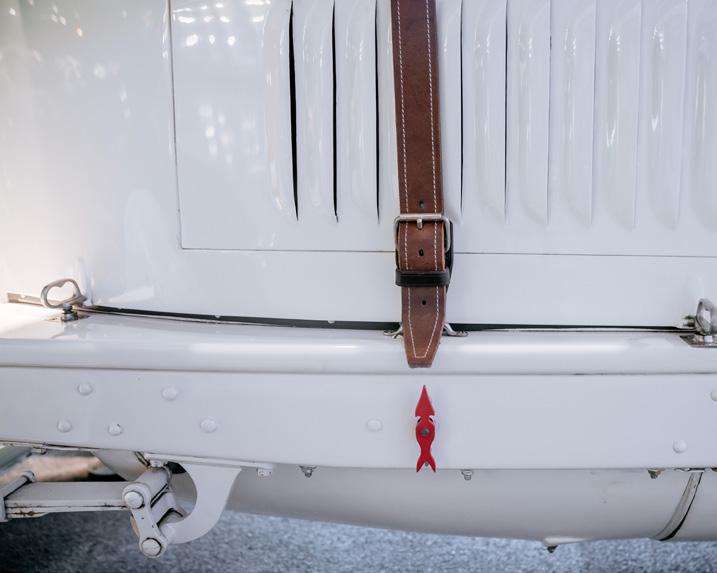
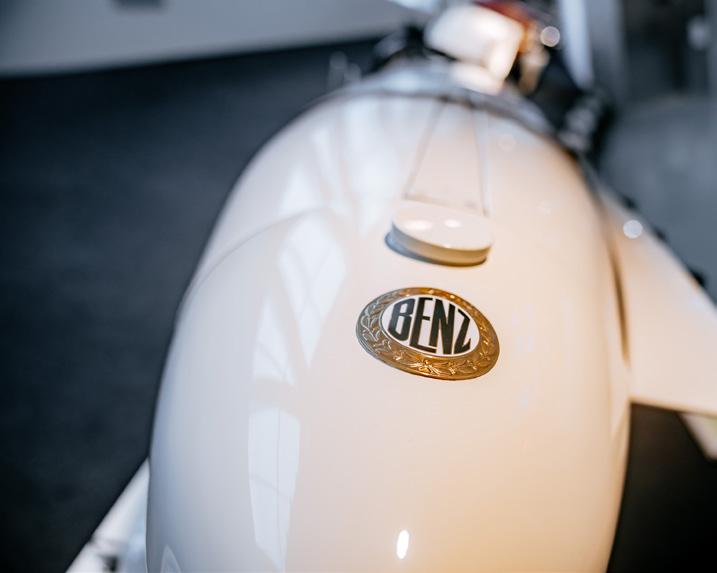





Over 200 km/h:
The “Blitzen-Benz” was the fastest car in the world in 1909
Thunderous, powerful, and ground-breaking – the Benz 200 PS “Blitzen-Benz” redefined speed and automotive innovation in the early 20th century. This extraordinary racing car, which became the fastest car in the world in 1909, symbolized a bold leap into the future of engineering and human achievement.
A Technological Marvel
At the core of the “Blitzen-Benz” was an awe-inspiring four-cylinder engine with a 21.5-litre displacement, delivering 147 kW (200 hp). Weighing 407 kilograms, the powerhouse propelled the vehicle to unimaginable speeds for its time. Designed with a cigar-like aerodynamic shape, the car featured a rounded radiator grille, a narrow driver’s cockpit, and streamlined wooden spoked wheels. Without the aid of a wind tunnel, engineers focused on optimizing every detail to minimize drag.
Large exhaust pipes extending from the hood signaled its raw power, while the absence of a silencer ensured a deafening performance. The car’s impressive transmission used oversized gears and strong chains to drive the rear wheels, while the engine roared to life with a manual crank.
Breaking the 200 km/h Barrier
On November 8, 1909, at the Brooklands racetrack in England, works driver Victor Hémery achieved a historic feat: the “Blitzen-Benz” became the first car with a combustion engine to exceed 200 km/h. Averaging 205.666 km/h over half a mile and 202.648 km/h over a kilometer with a flying start, the car shattered existing speed limits and established a new benchmark in Europe.
Brooklands, the world’s first purpose-built motor racing circuit, with its banked curves, was the perfect venue for this record-breaking event. However, it soon became evident that the car’s unparalleled speed demanded longer, straighter tracks than those available in Europe.
A Sensation in America
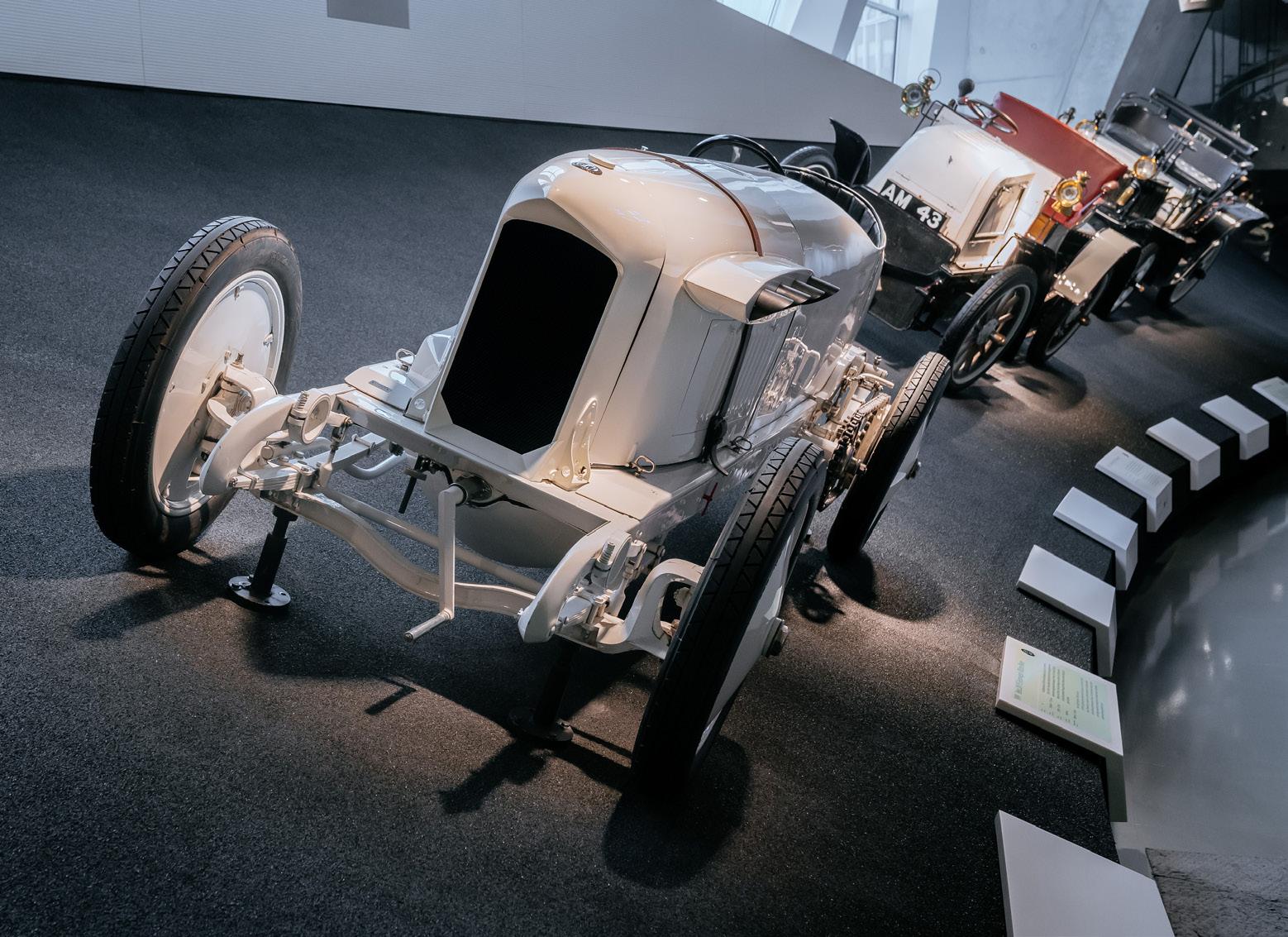
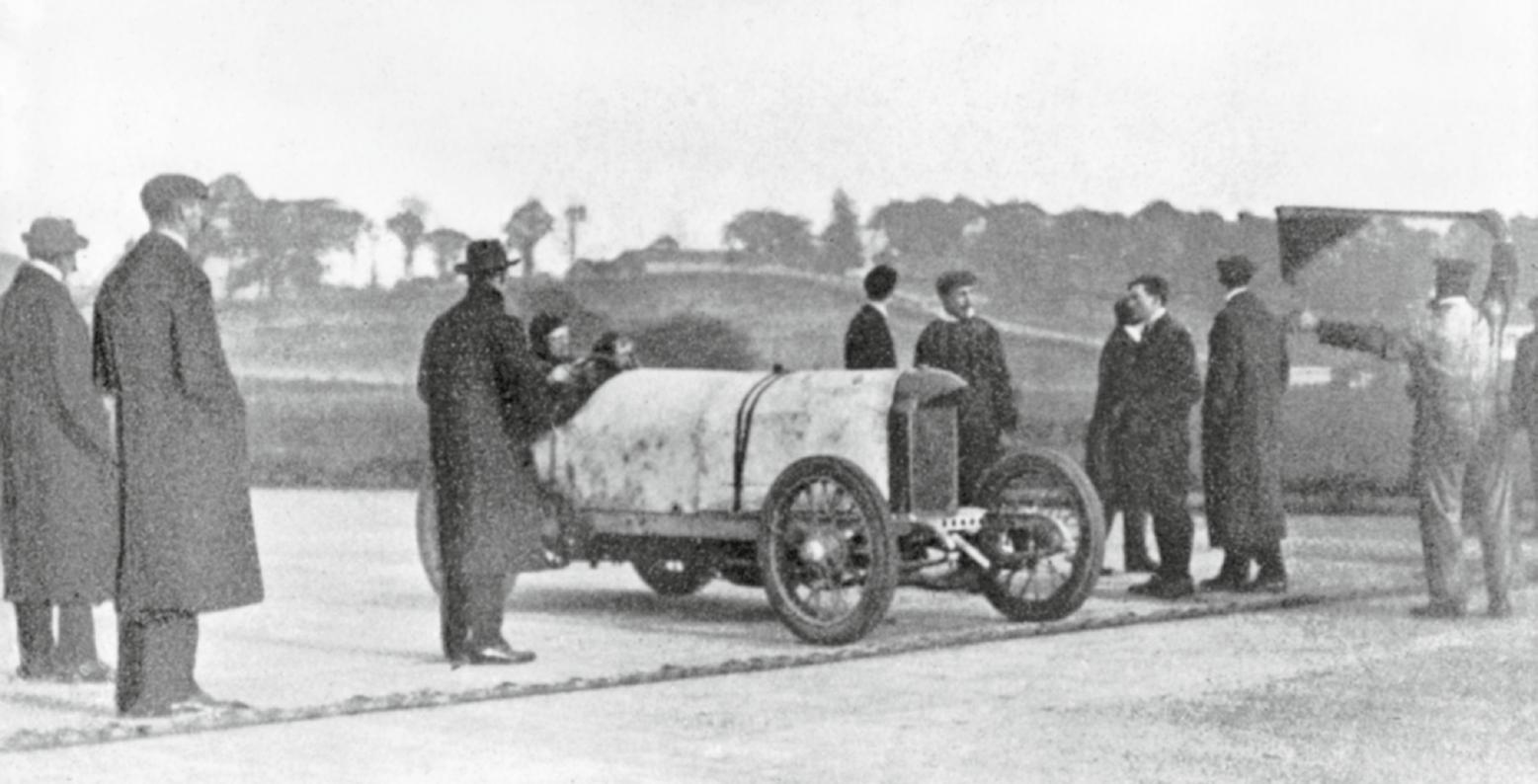
Legend Room 7: Silver Arrows – Races and Records. Benz 200
Photos and film: Mercedes-Benz Museum. © Daimler AG. Film: © Mercedes-Benz AG.
New Heights at Daytona
The “Blitzen-Benz” wasn’t done yet. On April 23, 1911, Robert R. “Bob” Burman pushed the car to an astounding 228.1 km/h, again at Daytona Beach. This achievement made it twice as fast as airplanes of the era and faster than any other car or train.
In 1910, the “Blitzen-Benz” crossed the Atlantic to showcase its prowess in the United States. Owner Ernest “Ernie” Moross dubbed it the “Lightning-Benz,” and its German name “Blitzen-Benz” soon gained global recognition. On March 16, 1910, Barney Oldfield reached a staggering 211.97 km/h on Daytona Beach, solidifying its reputation as a marvel of engineering. Oldfield later exhibited the car at show events, mesmerizing crowds with its sheer power and performance.
A Lasting Legacy
For eight years, the “Blitzen-Benz” held its title as the world’s fastest car. Only six examples were ever built, and four survive today, with one on display in Stuttgart’s Mercedes-Benz Museum. The “Blitzen-Benz” remains an icon of ambition, innovation, and the relentless pursuit of progress. Its legacy endures as a symbol of a time when boundaries were meant to be broken and speed became a defining force in automotive history.
Audio
Brooklands racetrack, 8 November 1909. Victor Hémery sets two new speed records with the Benz 200 hp racing car: 205.666 km/h over half a mile and 202.648 km/h over one kilometre, both with a flying start. Mercedes-Benz Museum,
hp “Blitzen-Benz”.
Super-Wings: The Timeless Allure of the Mercedes-Benz 300 SL Coupé
Seventy years ago, the automotive world was forever changed with the debut of the Mercedes-Benz 300 SL Coupé. Unveiled on February 6, 1954, at the International Motor Sports Show in New York, this groundbreaking super-sports car remains an icon of engineering, style, and innovation. Known for its upward-opening "gullwing" doors, the 300 SL captivated hearts and minds then and continues to fascinate today, as evidenced by its prime position in the Mercedes-Benz Museum’s Legends Room 4.
A Star in the Spotlight
From the moment it took center stage in New York, the 300 SL was destined for greatness. Perched on an elegant pedestal, the silver coupé radiated sophistication and power. Sharing the stage with the equally stunning yet less groundbreaking 190 SL Roadster, the 300 SL stole the show with its striking gullwing doors – a feature never before seen on a production car. The 300 SL's introduction was perfectly timed to appeal to the burgeoning American market. With its sleek design and remarkable performance, the car embodied post-war optimism and the thrill of technological advancement.
Racing Pedigree and Engineering Marvel
The 300 SL wasn’t just a pretty face – it was a machine born of racing heritage. Its design drew heavily from the 1952 W 194 racing car, which had dominated prestigious events such as the Mille Miglia, the Le Mans 24 Hours, and the Carrera Panamericana. The gullwing doors, while visually stunning, were a practical solution dictated by the car’s lightweight tubular spaceframe. Conventional doors were impossible due to the frame's high side structure, so the engineers innovated, turning necessity into an enduring design hallmark.
Despite their dramatic appearance, these doors came with practical refinements. Top-mounted springs assisted with opening and held the doors securely in place, while small chrome tubes housed the mechanism, adding a touch of elegance.
Clever Features and Cutting-Edge Technology
The ingenuity of the 300 SL extended to every detail. The rectangular side windows
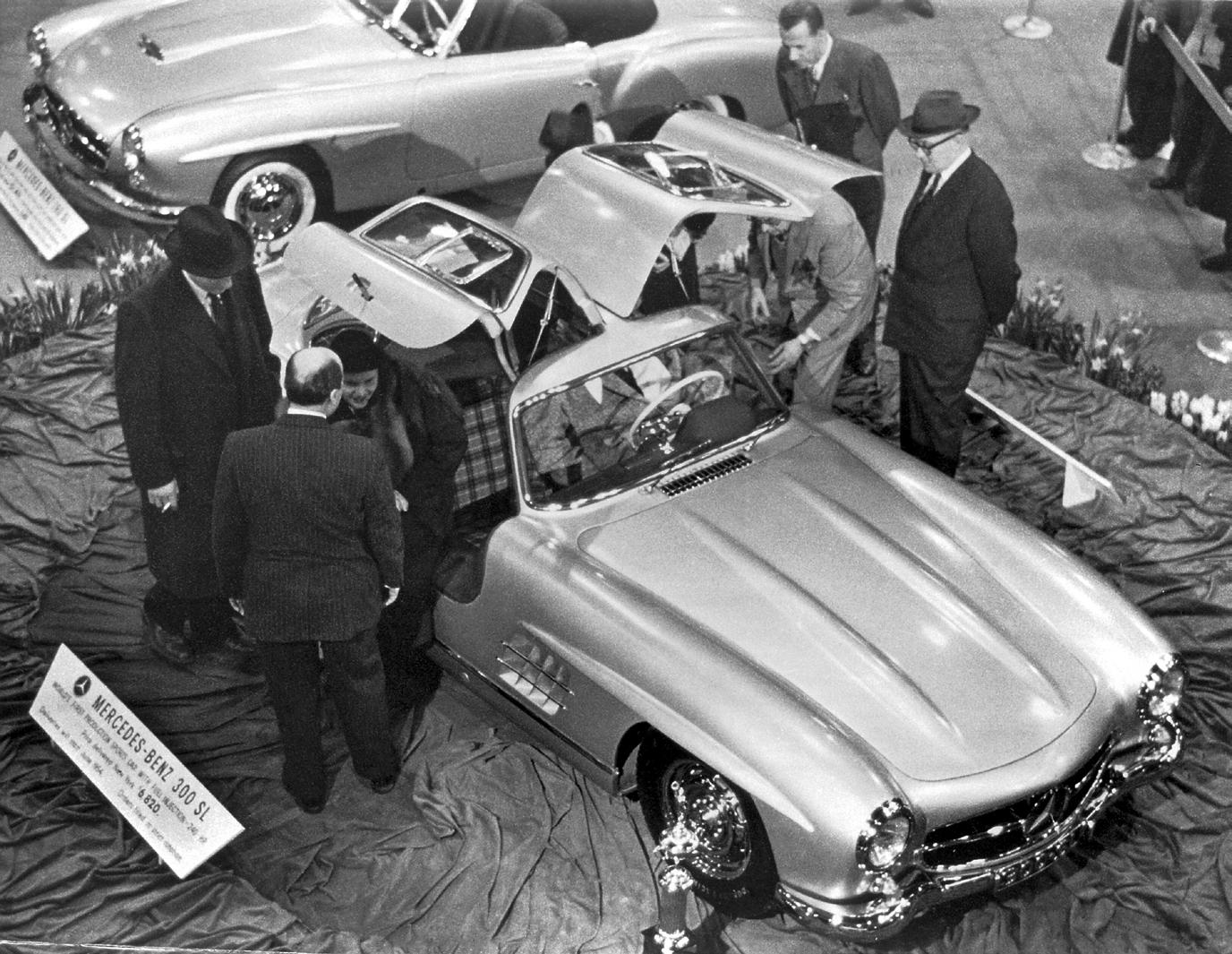
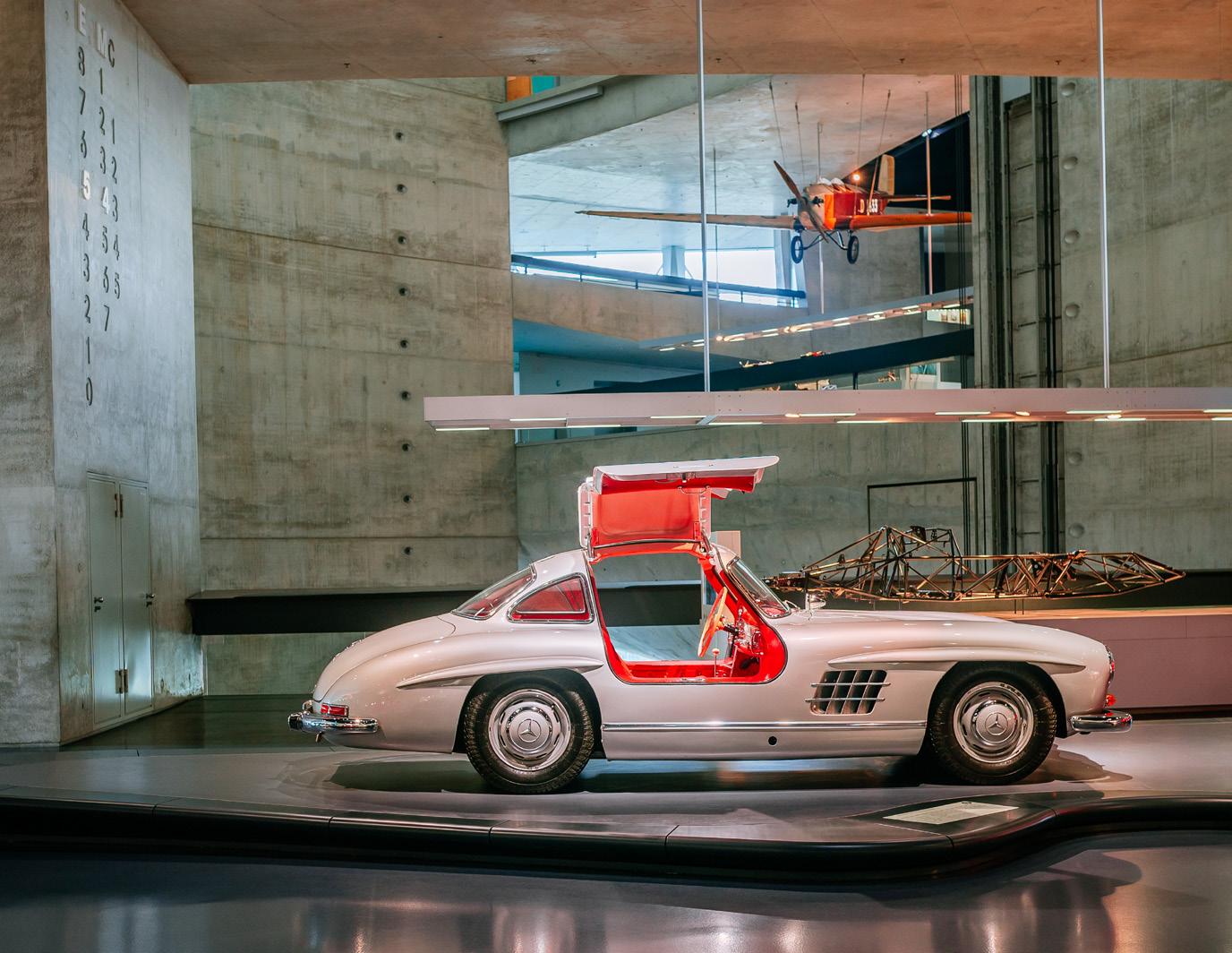
weren’t roll-down – they were removable and stored in the boot. A pivoting steering wheel eased access to the driver’s seat, addressing the challenges posed by the high frame and unique doors.
Under the hood, the 300 SL was a technological tour de force. It was the first production passenger car equipped with a four-stroke direct injection engine. This innovation boosted the 3.0-liter six-cylinder engine’s output to 158 kW (215 hp), enabling a top speed of up to 250 km/h – a staggering figure for the mid-1950s. This
exceptional performance was complemented by advanced suspension and near-perfect weight distribution, making the 300 SL as thrilling to drive as it was to admire.
Right: International Motor Sports Show in New York, 6 to 14 February 1954. Presentation of the Mercedes-Benz 300 SL “Gullwing” (W 198, centre) and the 190 SL (W 121, behind).
Mercedes-Benz Museum. © Daimler AG
Audio
Left: Mercedes-Benz Museum, Mercedes-Benz 300 SL Coupé.
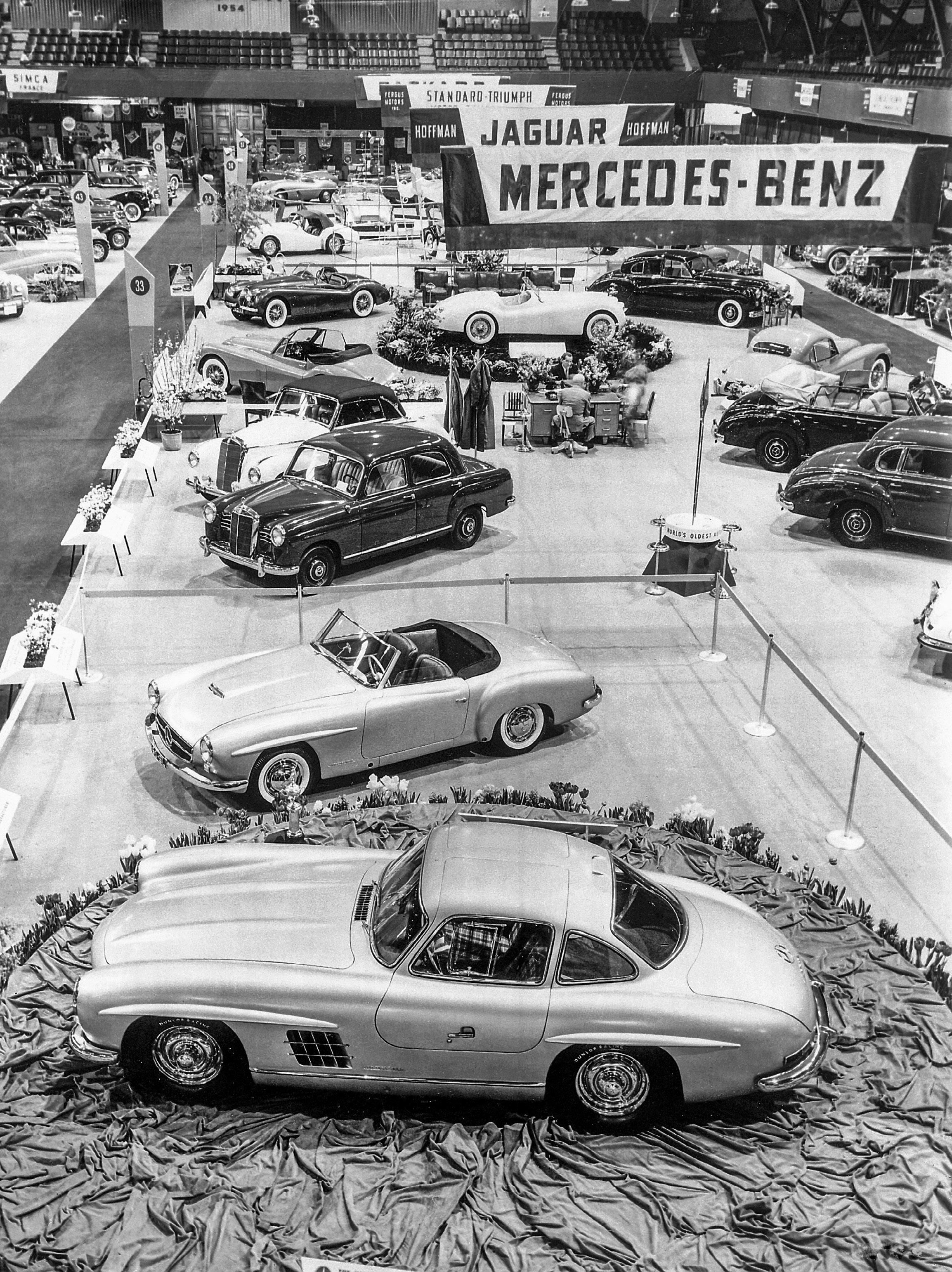
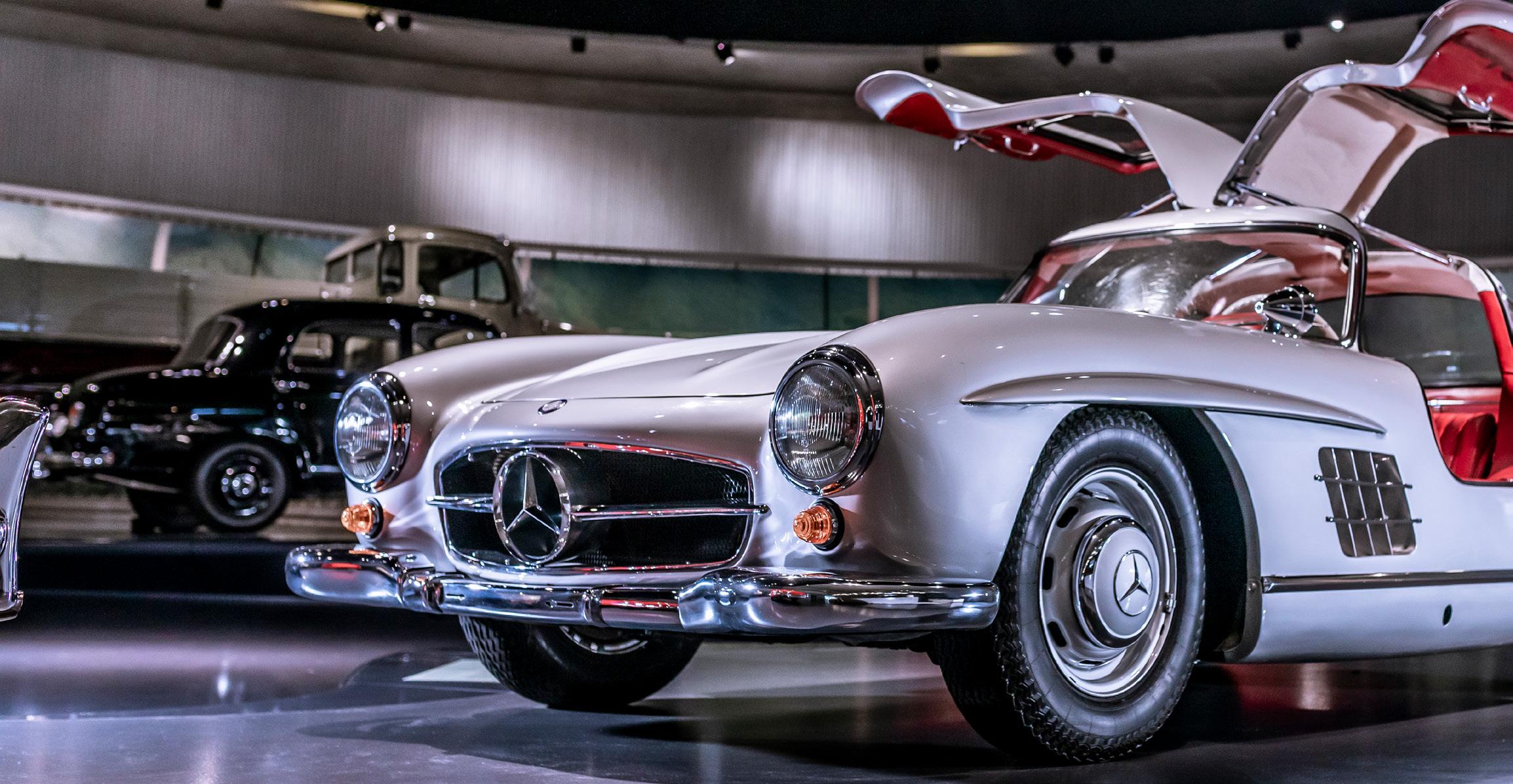
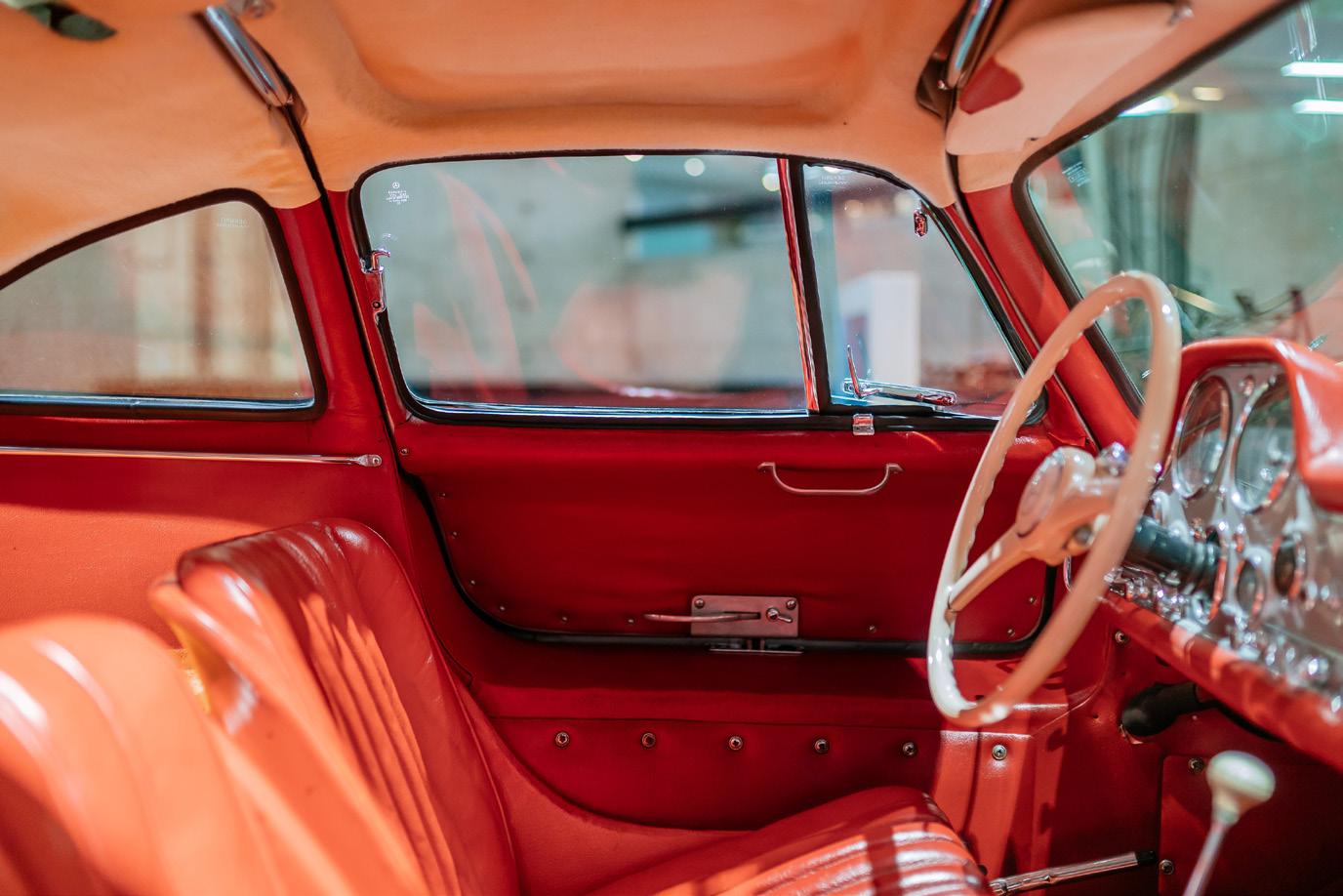
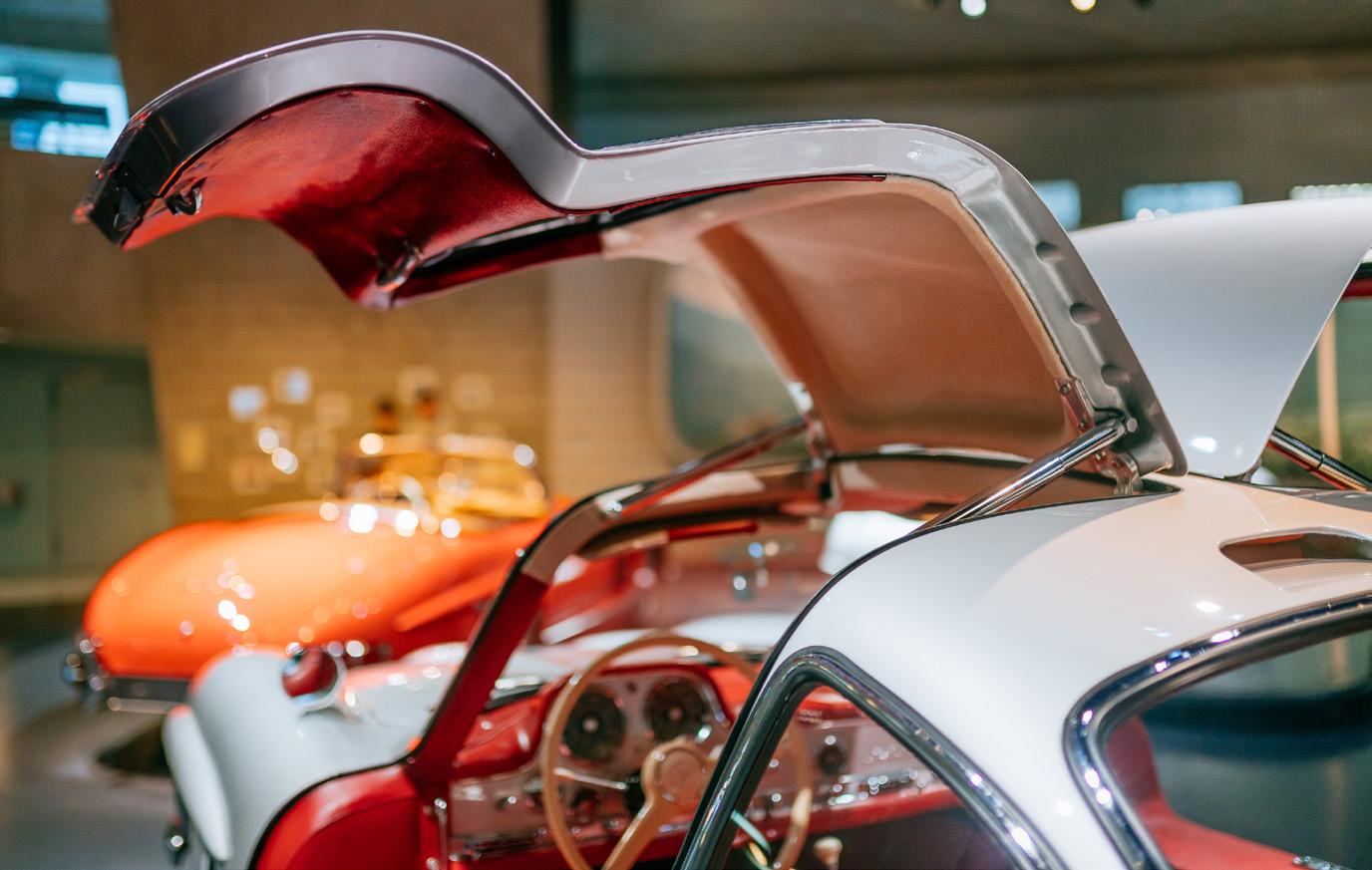
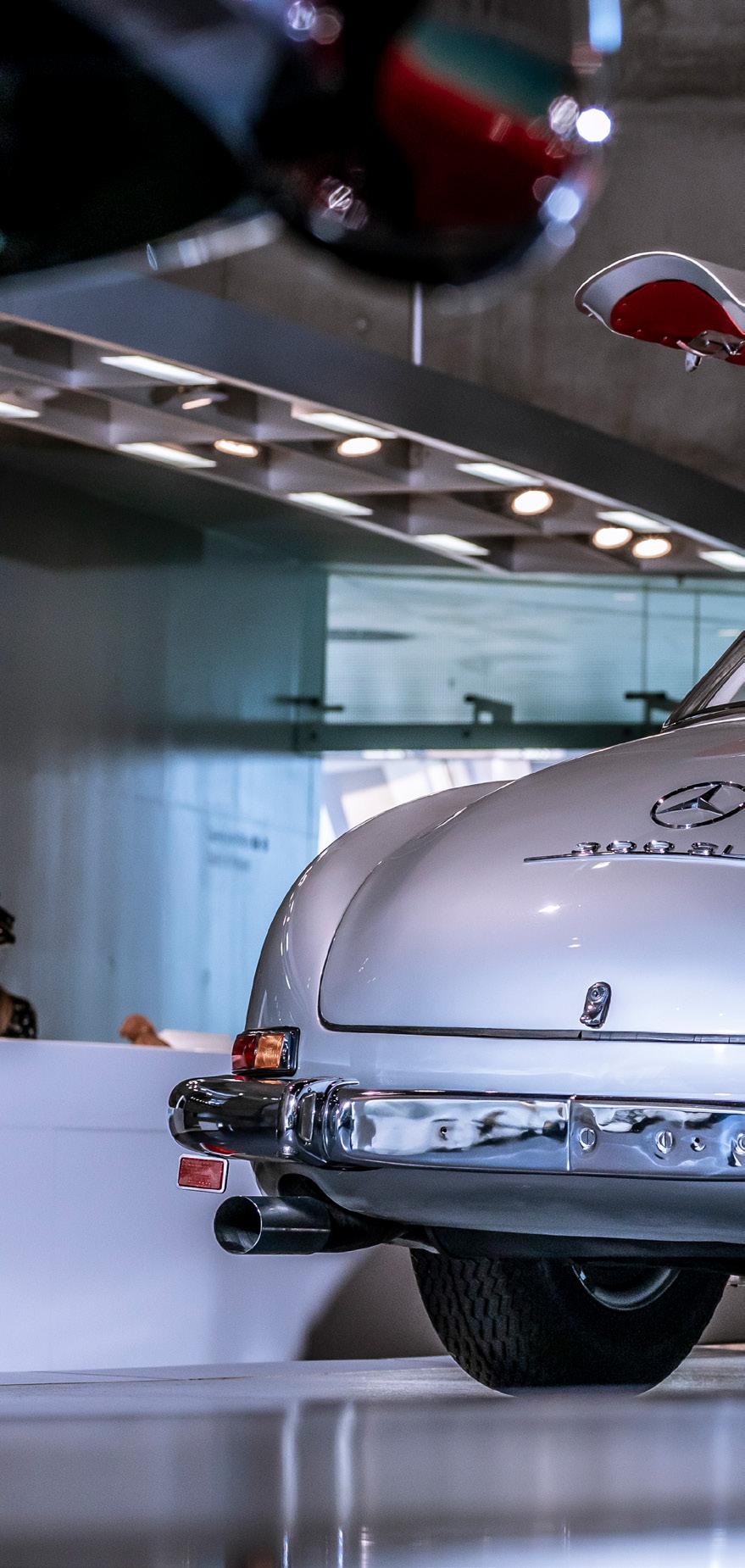
Mercedes-Benz 500 K © Mercedes-Benz Museum. © Daimler AG
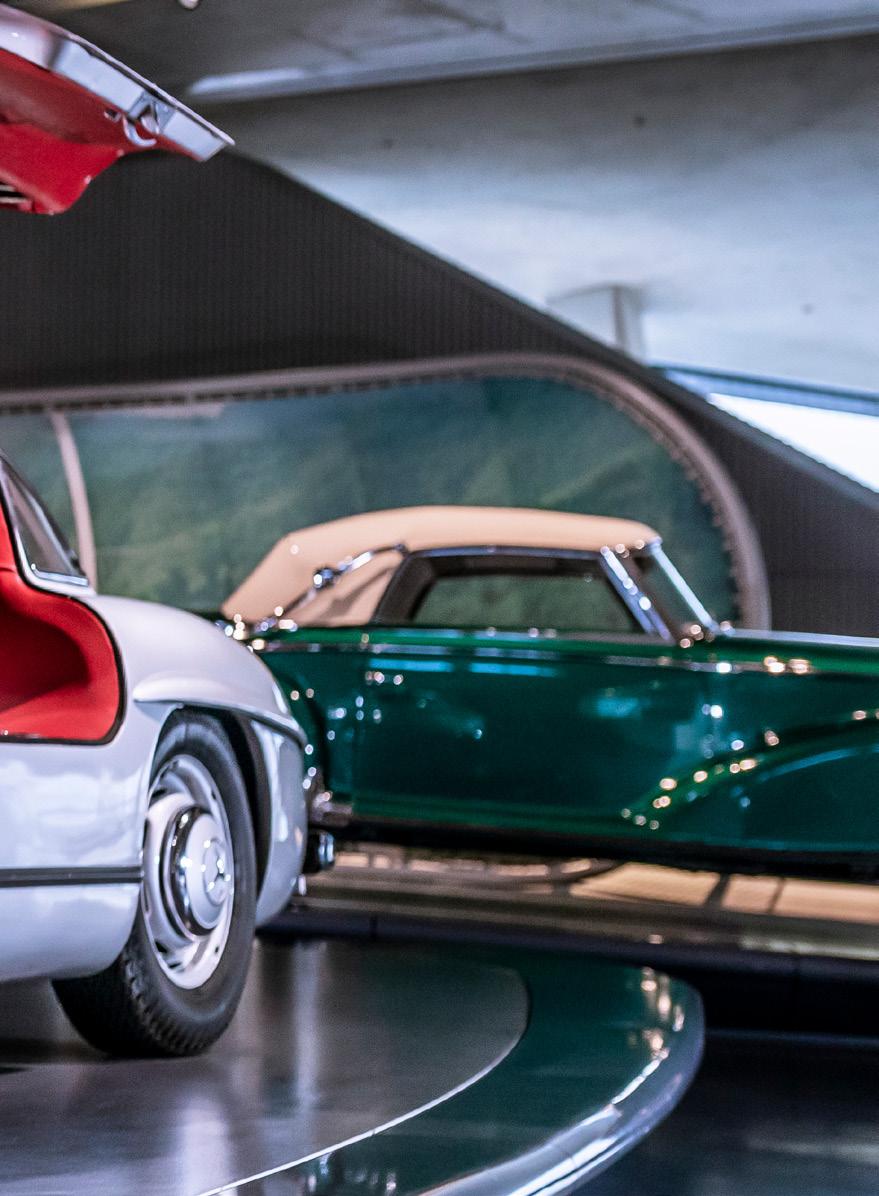
Evolution and Legacy
The 300 SL’s design continued to evolve, leading to the introduction of the Roadster variant in 1957. By lowering the spaceframe at the entry points, Mercedes-Benz engineers addressed the accessibility challenges, while front-hinged doors replaced the iconic gullwings. Yet, the coupé remained a symbol of innovation and exclusivity. From 1954 to 1957, only 1,400 examples of the coupé were produced, followed by 1,858 Roadsters. Each one was an instant classic, cementing the 300 SL’s place in automotive history.
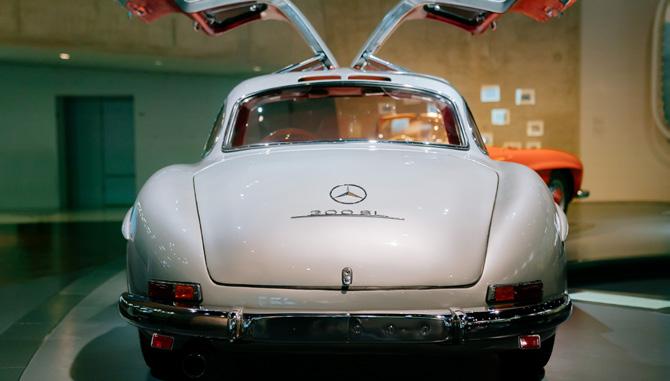
An Icon That Endures
Today, the Mercedes-Benz 300 SL remains an unparalleled blend of style, performance, and engineering brilliance. Visitors to the Mercedes-Benz Museum in Stuttgart are drawn to the silver Gullwing on display, its red interior still gleaming with timeless allure.
Seventy years on, the 300 SL continues to capture imaginations. Its legacy endures not just as a car but as a symbol of what happens when innovation meets artistry. Few vehicles can claim to have shaped the course of automotive history so profoundly – and fewer still can inspire dreams across generations quite like the Mercedes-Benz 300 SL Coupé.
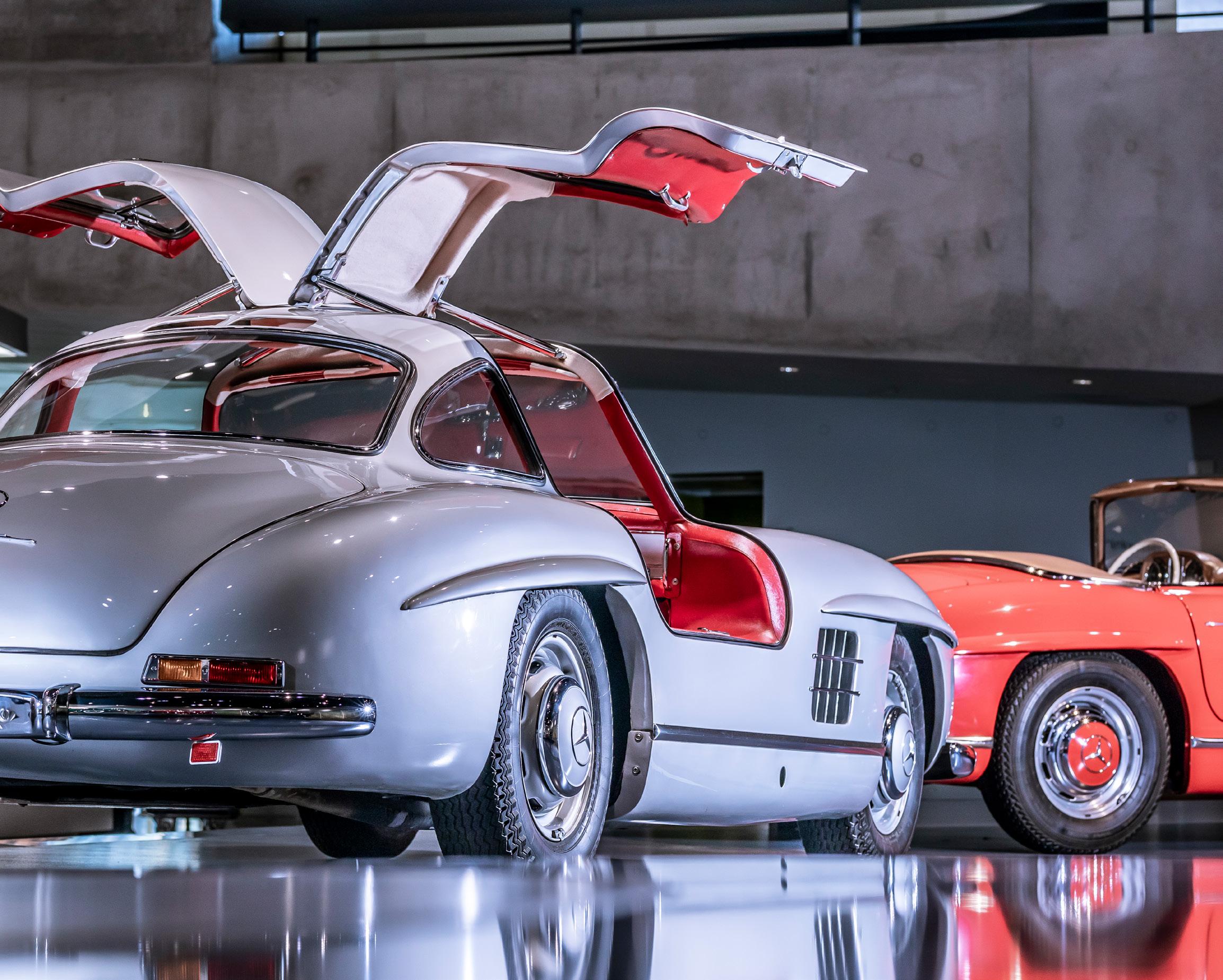
Audio
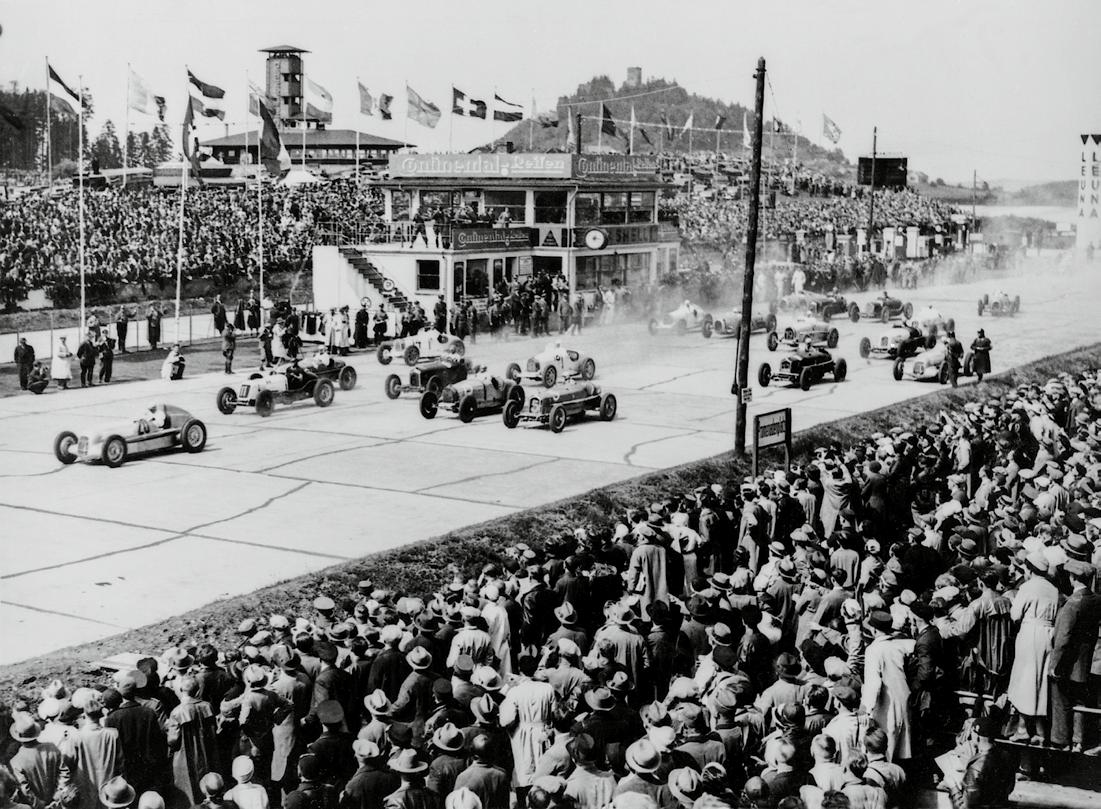
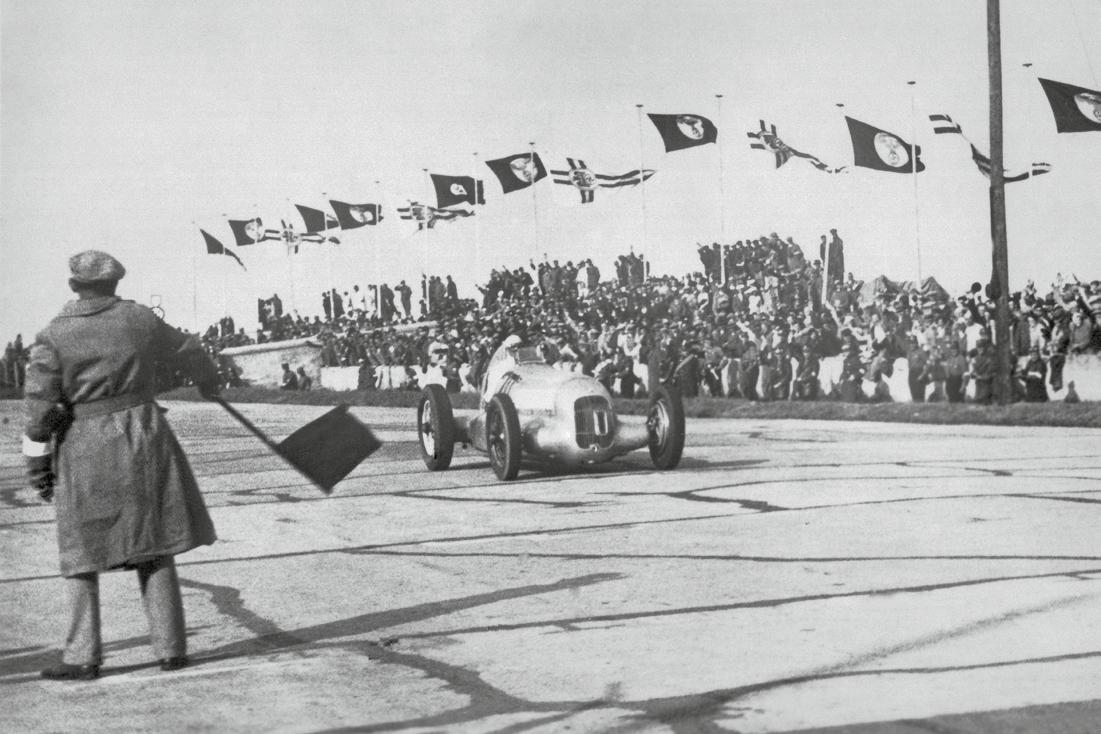
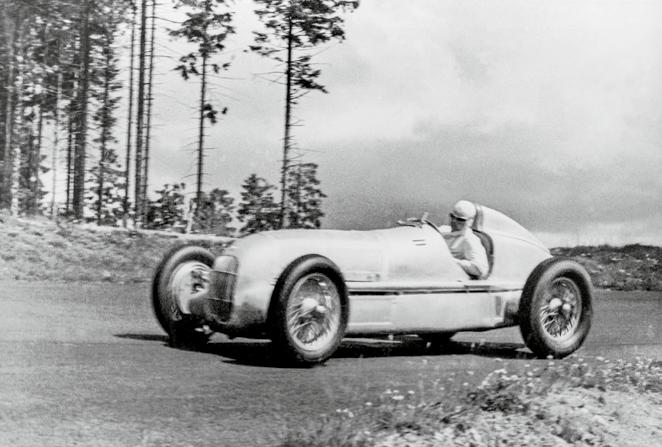
Silver with the Speed of an Arrow:
The Mercedes-Benz W 25’s Debut 90 Years Ago
Ninety years ago, on June 3, 1934, a sleek silver car rocketed across the finish line at the Nürburgring, marking the birth of a racing legacy. The Mercedes-Benz W 25, later known as the first "Silver Arrow," won the Eifel Race with Manfred von Brauchitsch behind the wheel, setting a new track record with an average speed of 122.5 km/h. This triumph was the genesis of a story that continues to define the brand’s racing heritage.
Audio
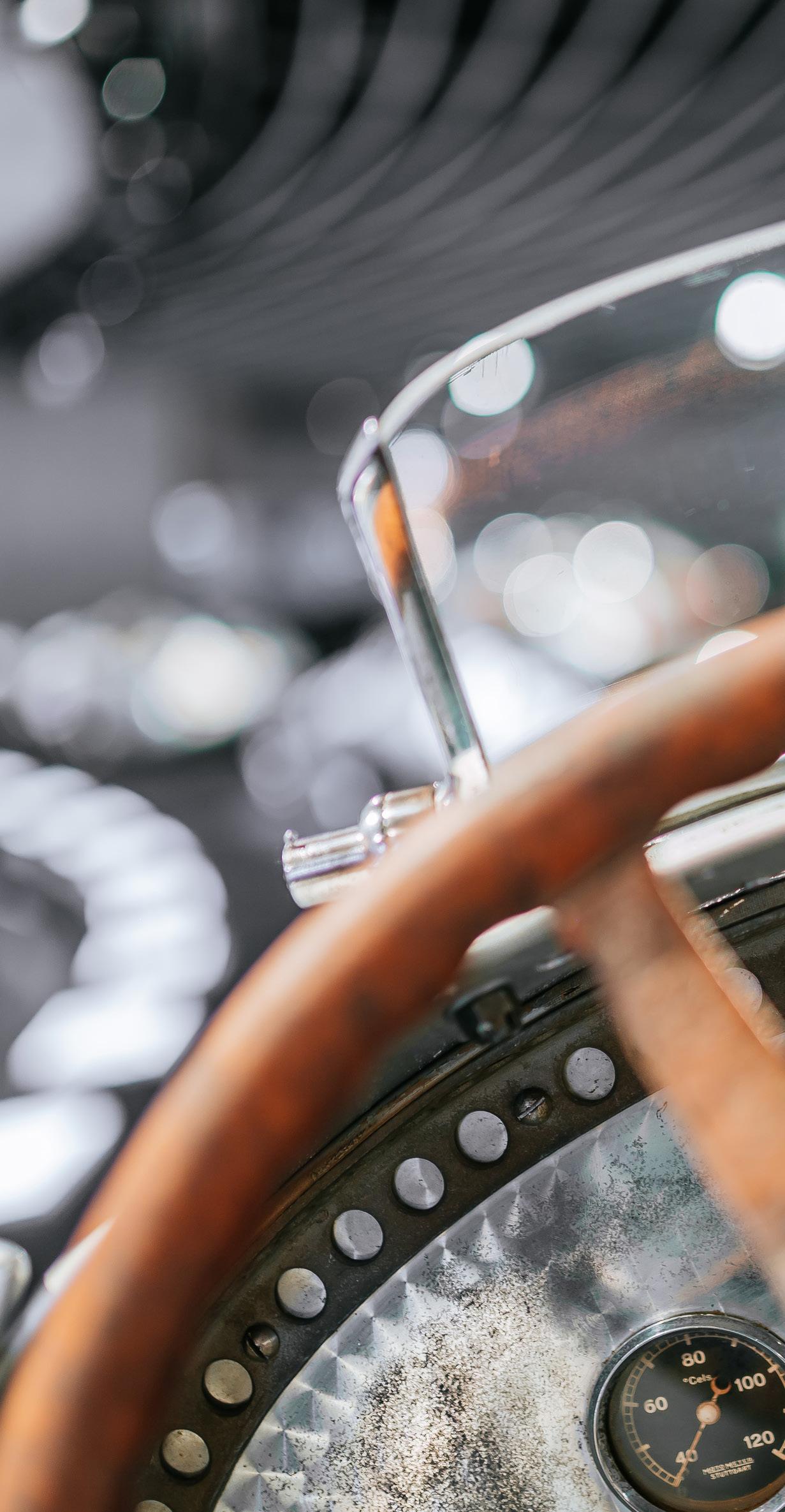
Left: Mercedes-Benz 750-kilogram W 25 formula racing car. Manfred von Brauchitsch (far left, start number 20) won victory at the first outing of the new racing car in the Eifel race at the Nürburgring on 3 June 1934. Photo at the finishing line.
Right: Mercedes-Benz Museum, Legend Room 7: Silver Arrows – Races and Records. Mercedes-Benz Museum. © Daimler AG
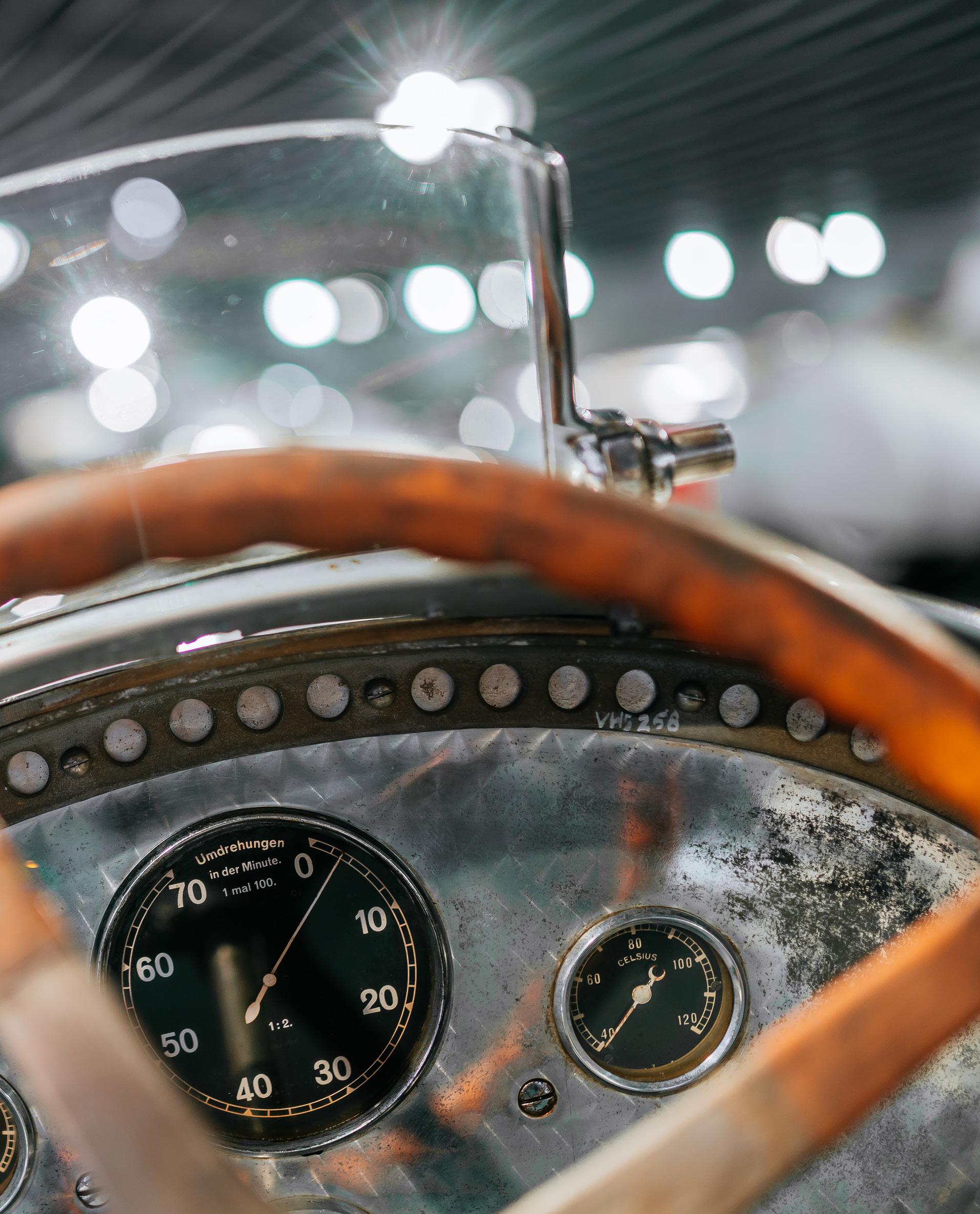
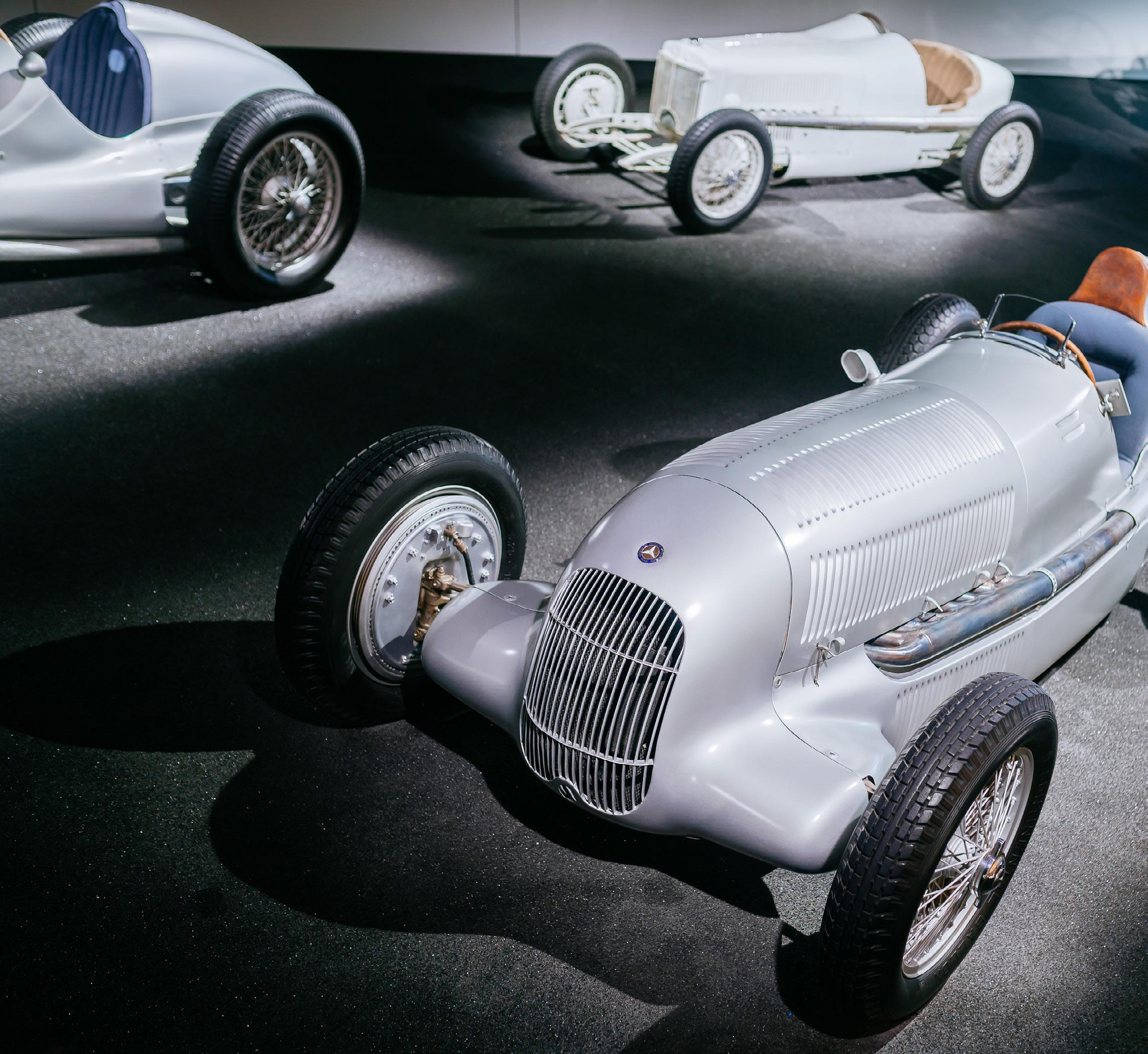
The Silver Arrow Takes Flight
The Mercedes-Benz W 25 was designed to meet the rigorous requirements of the 750-kilogram Grand Prix formula established in 1932. The rules allowed a maximum vehicle weight of 750 kilograms without operating fluids, pushing engineers to prioritize lightweight construction. As a result, the W 25 featured a sleek monoposto design with exposed wheels, embodying both aerodynamic efficiency and raw power.
Under its aluminum skin, the W 25 initially housed a supercharged 3.4-liter inline eight-cylinder engine capable of producing
up to 260 kW (354 hp). By the end of its competitive lifecycle in 1936, the engine had evolved to deliver a staggering 316 kW (430 hp), propelling the car to speeds of up to 300 km/h.
This extraordinary performance, combined with its revolutionary design, marked the beginning of a new era for Mercedes-Benz in motorsport.
A Story Forged in Aluminum
One of the most enduring tales about the W 25 is the "paint-off legend." According to this popular story, racing director Alfred
Neubauer realized the car exceeded the 750-kilogram limit by a single kilogram just before the Eifel Race. To shed the extra weight, the team allegedly sanded off the car’s white paint overnight, revealing the bare aluminum underneath. By race day, the car gleamed silver, earning it the nickname “Silver Arrow.”
Photo: Mercedes-Benz Museum, Legend Room 7: Silver Arrows – Races and Records. Mercedes-Benz 750-kilogram W 25 formula racing car. Mercedes-Benz Museum. © Daimler AG
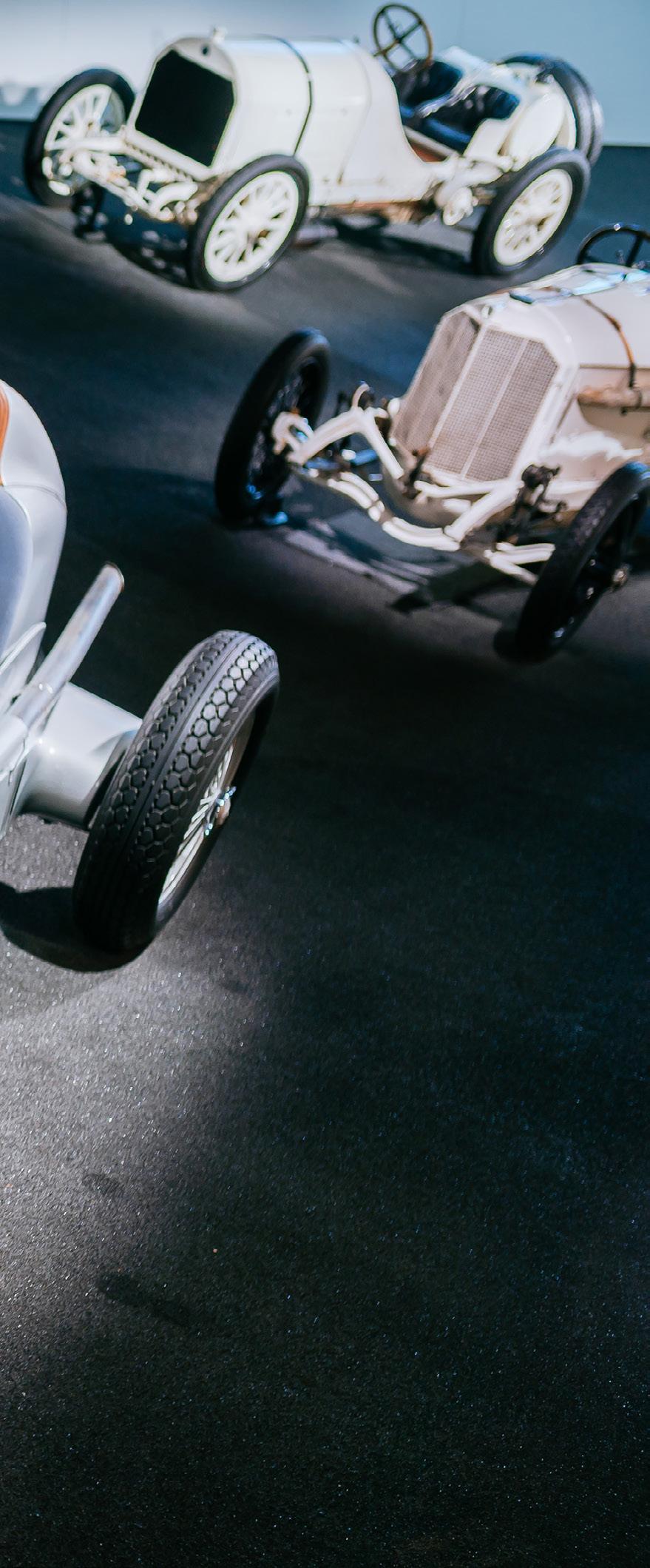
While the legend is captivating, it doesn’t align with the facts – there was no weight limit for the Eifel Race, and bare-metal finishes had appeared on racing cars before. Nonetheless, the story, as told by Neubauer in his biography, adds a touch of mythos to an already iconic machine.
Inside the Cockpit of a Legend
Climbing into the cockpit of the W 25 was stepping into a no-frills racing machine. The large, slim steering wheel offered a commanding view over the small windscreen, while the dashboard displayed only essential instruments – rev counter, oil pressure, and coolant gauges.
The car's construction was a testament to innovation and precision. Quick-release fasteners on the bonnet allowed mechanics to access the engine within seconds, while
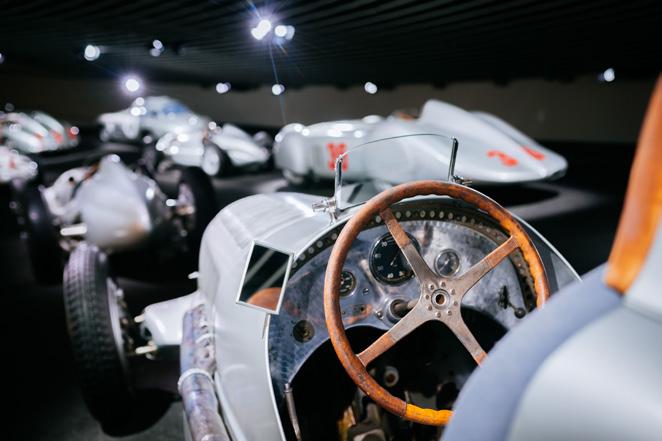
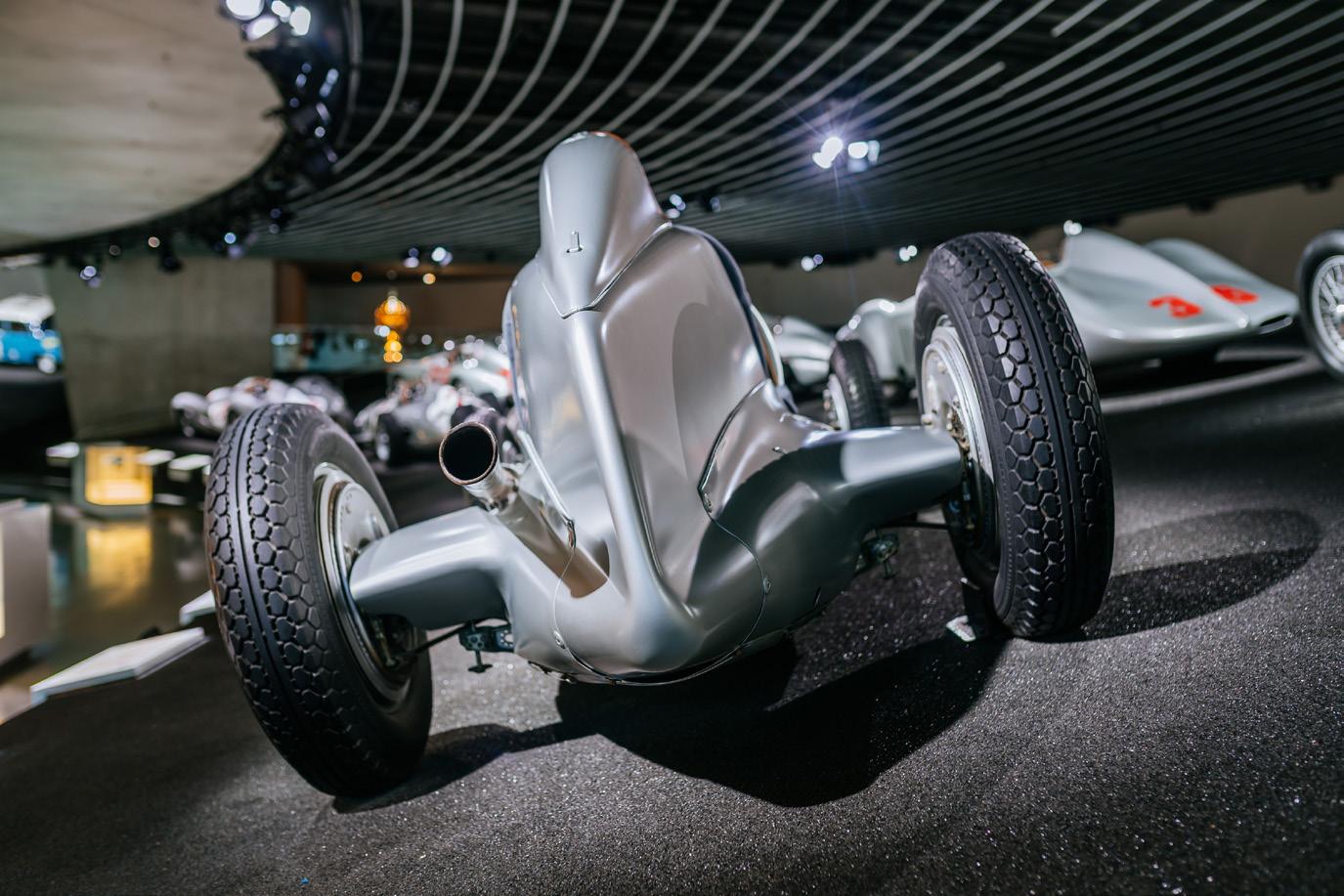
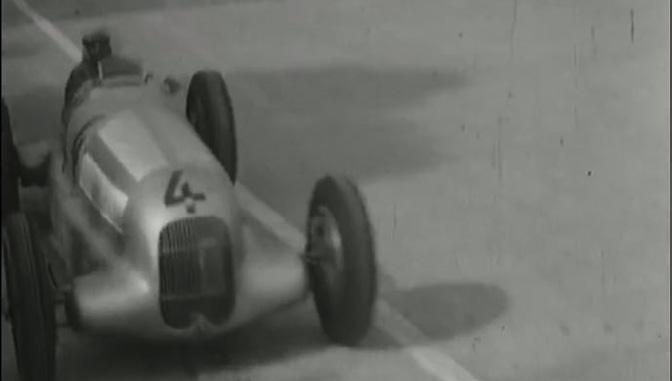
lightweight components, such as perforated pedals and suspension straps, demonstrated the team’s commitment to reducing every unnecessary gram.
Even the exhaust system told a story: its bluish tinge, still visible on the exhibit at the Mercedes-Benz Museum, speaks to the
immense heat generated by the roaring engine.
A Legacy of Speed and Success
The W 25’s success at the Nürburgring was just the beginning. It laid the foundation for the Silver Arrows that followed, dominating motorsport throughout the 1930s and 1950s. Drivers like Rudolf Caracciola, who won three European Championships in the pre-war era, and Juan Manuel Fangio, who secured two Formula One titles in the 1950s, cemented the Silver Arrows’ status as racing legends.
Today, the spirit of the W 25 lives on in the cutting-edge Mercedes-AMG Petronas Formula One cars. From the early days of raw, supercharged power to the hybrid-driven speed of modern F1, the Silver Arrow tradition remains synonymous with engineering excellence and competitive dominance.
A Museum Marvel
Visitors to the Mercedes-Benz Museum in Stuttgart can experience the W 25 in all its glory. Displayed prominently in Legend Room 7, the car is a focal point of the spectacular racing curve, surrounded by its Silver Arrow successors. Standing before the W 25, it’s impossible not to feel a sense of awe at the craftsmanship and innovation that defined its creation.
The museum’s exhibit not only showcases the car’s technical achievements but also immerses visitors in the history of motorsport. From its lightweight frame to its streamlined design, the W 25 is a symbol of a relentless pursuit of perfection – a hallmark of Mercedes-Benz.
The Arrow That Defined an Era
The Mercedes-Benz W 25 was more than just a car; it was a revolution in racing technology and design. Its victory at the Eifel Race in 1934 set the stage for decades of dominance on the track, and its influence is still felt in every Silver Arrow that takes to the circuit today.
Ninety years later, the W 25 is not just a piece of history – it’s a testament to the power of innovation and the enduring legacy of Mercedes-Benz in the world of motorsport.
Audio
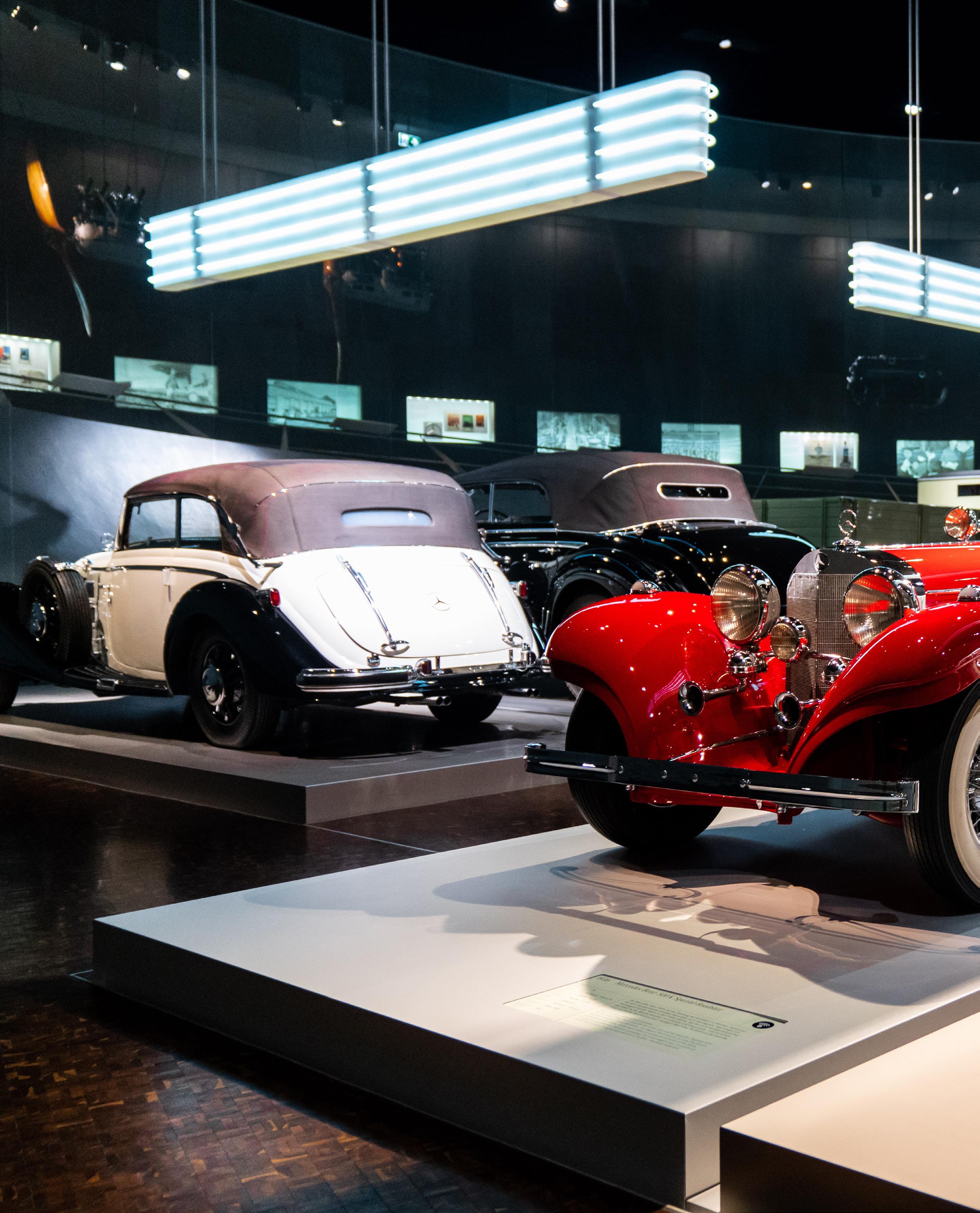
The Mercedes-Benz 500 K Special Roadster: A Bright Red Icon
In the halls of the Mercedes-Benz Museum in Stuttgart, one car stands out not just for its striking hue but also for its unmatched elegance and engineering brilliance: the Mercedes-Benz 500 K Special Roadster.
Known as much for its aesthetic allure as its technical sophistication, this automotive masterpiece remains a timeless symbol of luxury and innovation.
The 500 K Special Roadster debuted at the International Motor Show in Berlin in March 1934, marking its place as a groundbreaking creation. Initially presented as an “autobahn courier,” the car epitomized the spirit of speed and sophistication.
In October of the same year, the Special Roadster was introduced, becoming the most exclusive and expensive model in the Audio
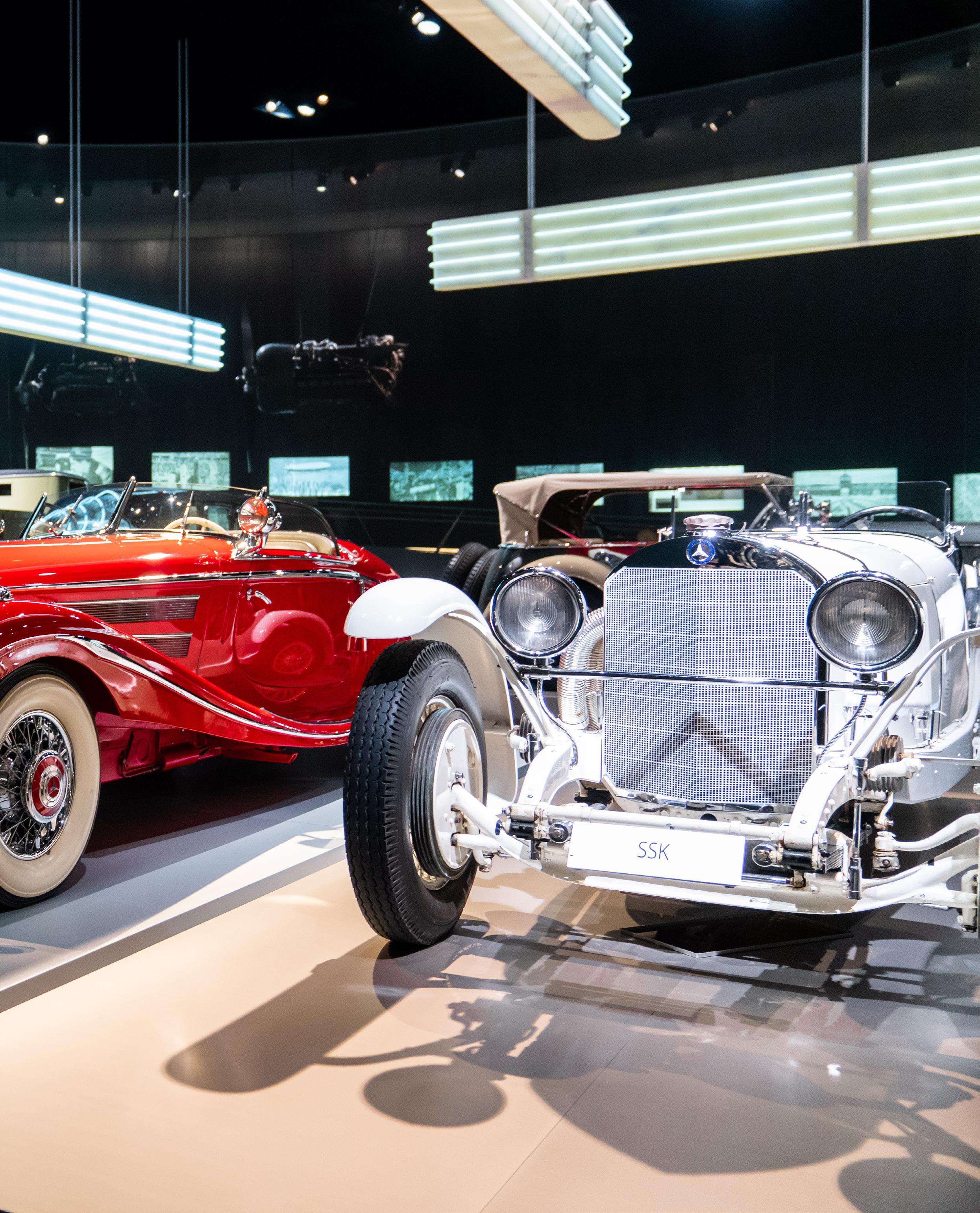
Mercedes-Benz Museum, Legend Room 3: Times of Change – Diesel and Supercharger, 1914 to 1945. Mercedes-Benz 500 K Special Roadster (W 29). Mercedes-Benz Museum. © Daimler AG
lineup at 28,000 Reichsmarks – enough to purchase a luxury home.
This level of exclusivity meant it attracted a select clientele. Celebrities from entertainment, politics, and business sought the car as much for its performance as for its ability to enhance their personal prestige. From Hollywood stars to high-ranking officials, the 500 K was a regular on red carpets and at glamorous events.
Design That Dazzles
Friedrich Geiger, the creative genius behind the Special Roadster’s design, delivered a body that was both striking and sophi -
sticated. The long bonnet and sweeping fenders evoke the exuberance of the Roaring Twenties, while the recessed radiator and low-slung profile hint at its underlying performance capabilities. Its bright red finish turns heads even today, making it a favorite exhibit at the Mercedes-Benz Museum.
Inside, the attention to detail is equally captivating. The handcrafted leather upholstery feels as luxurious as it looks, wrapping passengers in comfort. The ivory-colored steering wheel and meticulously crafted dashboard instruments—reminiscent of fine watchmaking – reflect a commitment to excellence that defined Mercedes-Benz vehicles of the era.
Engineering Marvel
Beneath its sleek exterior lies the heart of a powerhouse. The Special Roadster is equipped with the legendary M 29 supercharged engine, capable of producing 100 hp (74 kW) in standard mode and an exhilarating 160 hp (118 kW) when the supercharger is engaged. Activating the two-bladed Roots blower, positioned upstream of the carburetor, requires pushing the accelerator beyond a pressure point. The resulting "kickdown" effect unleashes a distinctive roar and a burst of power that’s impossible to ignore.
Supporting this robust engine is a suspension system adapted from the Mercedes-Benz
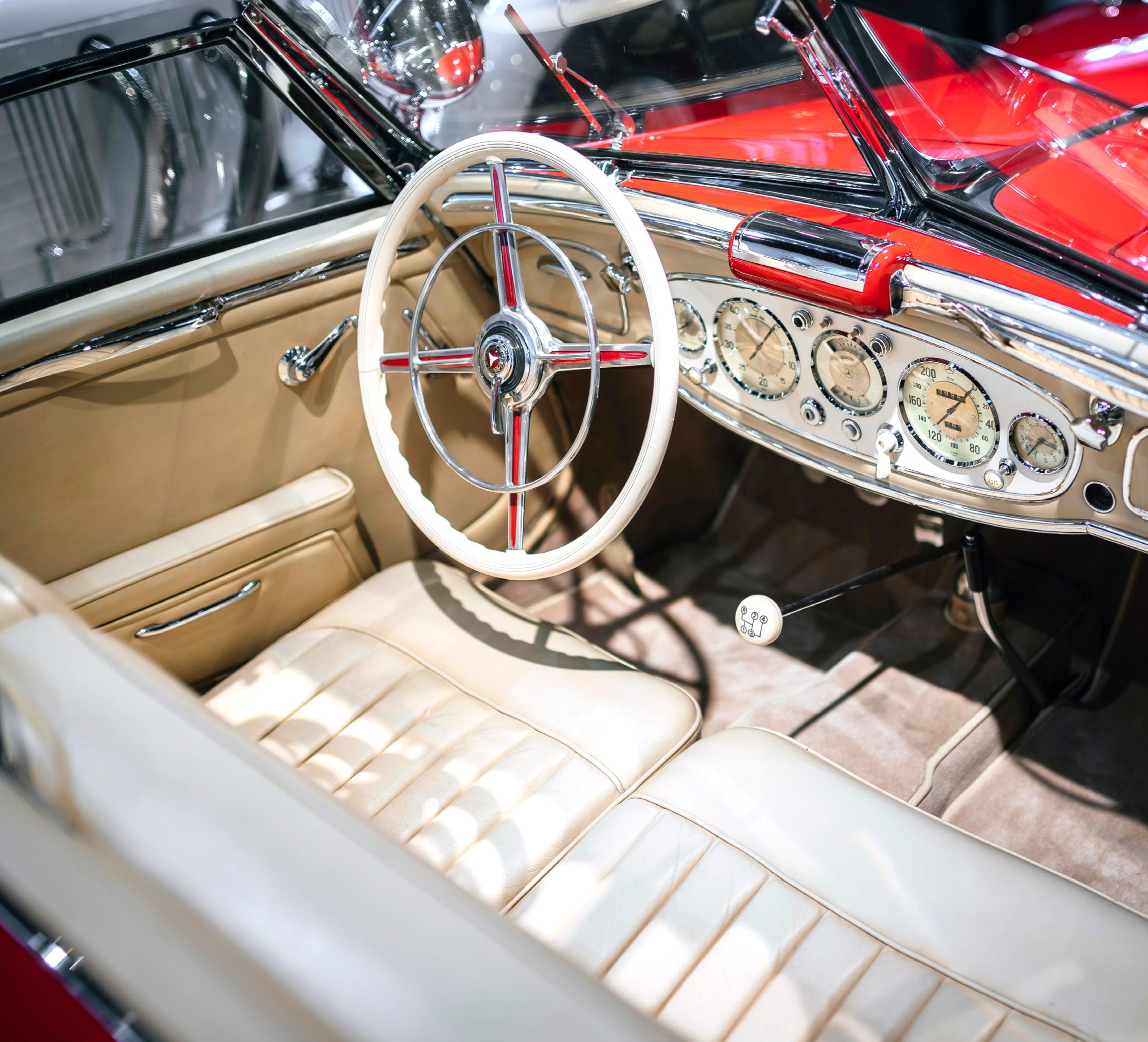
380. The trapezoidal-link front axle and rear swing axle provided remarkable stability and safety at high speeds – a revolutionary achievement at the time. This innovation set a standard in automotive design, influencing engineering practices for decades.
A Few Surprises
The Special Roadster is full of surprises that reveal its thoughtful design. One of its most unique features is the “motherin-law’s seat,” a hidden bench behind the main cabin accessed via a flap. A step on the rear mudguard provides an elegant solution for entering this secondary seat, combining functionality with style.
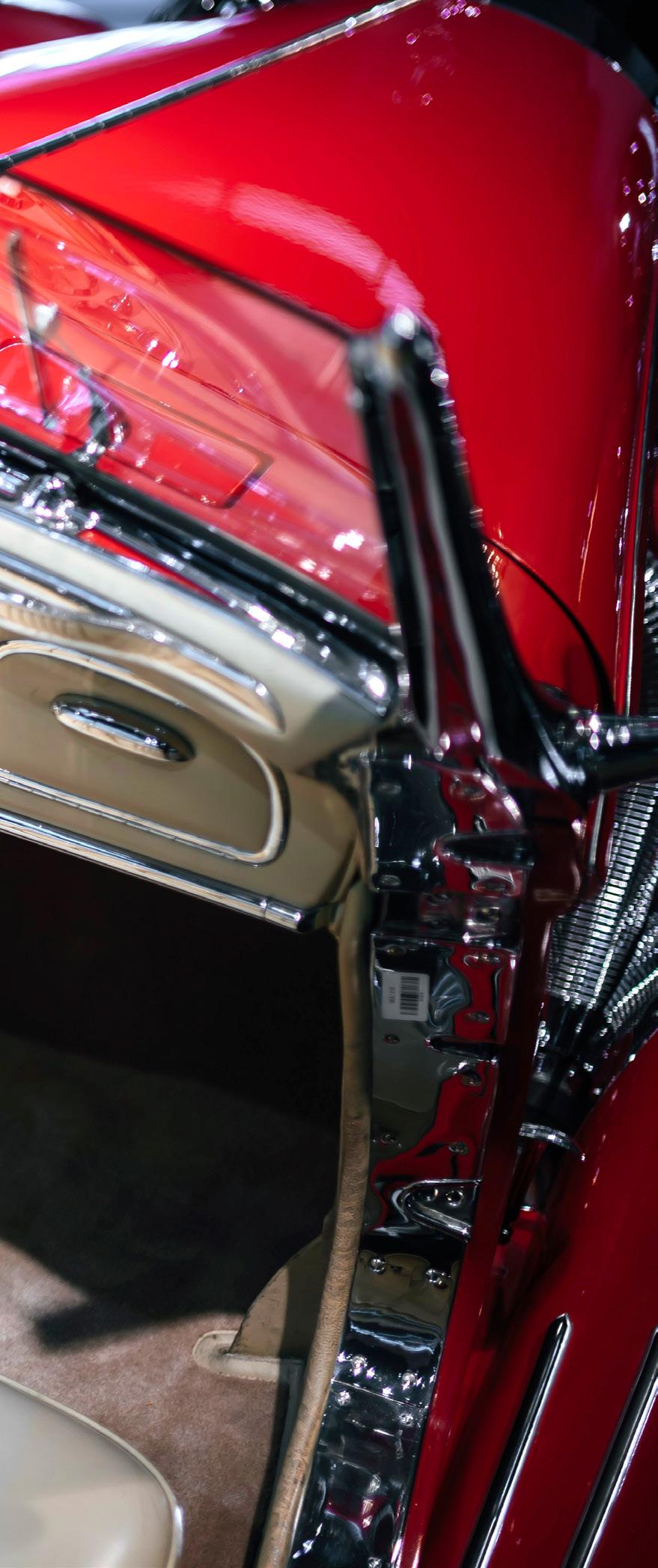
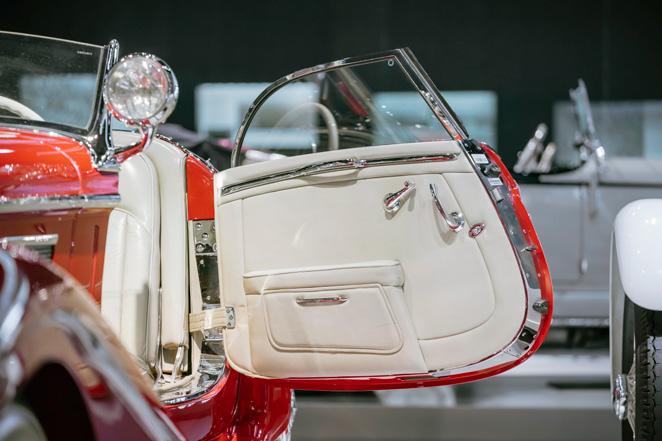
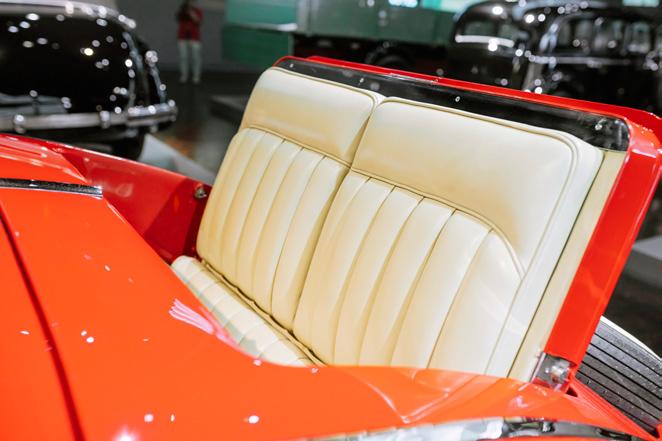
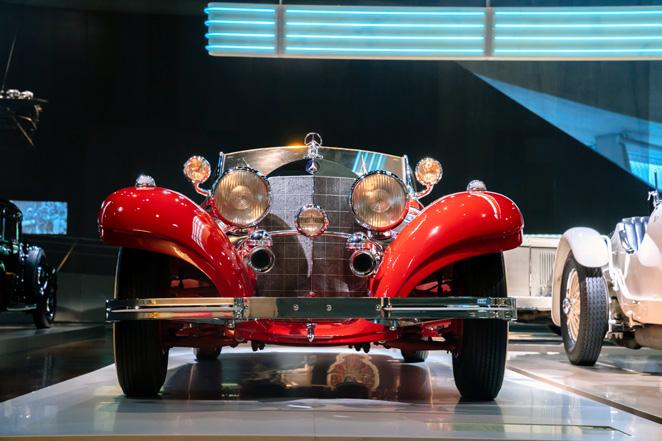
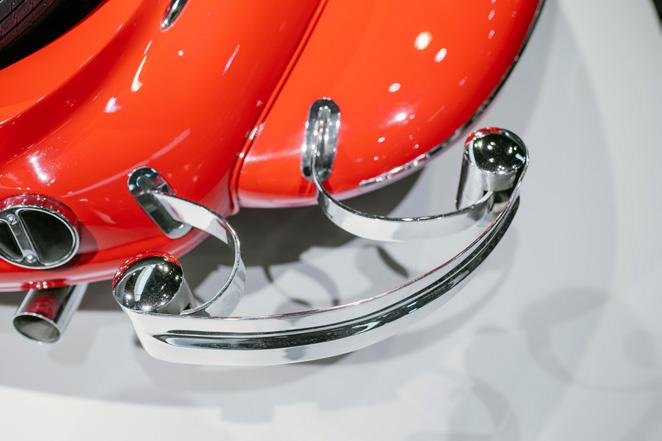
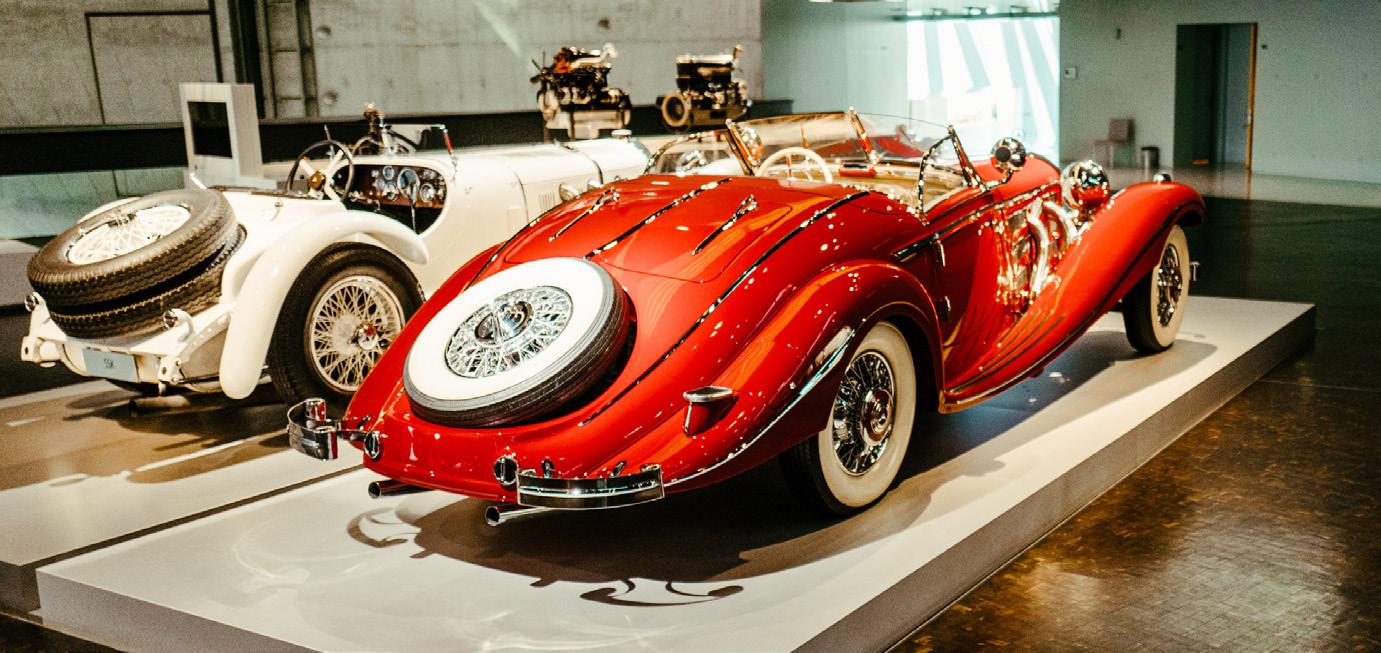
Rare and Revered
From 1934 to 1936, only 342 units of the 500 K were produced across all body variants, ensuring its rarity even in its own time. The Special Roadster was the pinnacle of exclusivity, followed by the 540 K, which boasted a larger engine. Today, these vehicles are among the most sought-after at auctions, often fetching record-breaking prices.
Ensuring Authenticity
The 500 K’s rarity has inspired imitations over the years. Starting in the 1950s, body shops began converting other Mercedes-Benz models into faux Special Roadsters to capitalize on the car’s prestige. However, true authenticity can only be confirmed by Mercedes-Benz Classic, whose experts verify the provenance of each vehicle, ensuring that only original Sindelfingen-manufactured examples hold their coveted place in automotive history.
Timeless Legacy
The Mercedes-Benz 500 K Special Roadster is more than a car – it’s a statement of luxury, innovation, and artistry. From its debut 90 years ago to its continued prominence in the Mercedes-Benz Museum, this bright red icon remains a masterpiece that bridges the past and present. Its elegance and engineering continue to captivate, proving that great design and performance never go out of style.
Mercedes-Benz Museum
Mercedesstraße 100 70372 Stuttgart, Germany
Tel. +49 711 - 17 30 000 classic@daimler.com www.mercedes-benz.com/museum
Audio
Mercedes-Benz 500 K Special Roadster (W 29). Mercedes-Benz Museum. © Daimler AG
